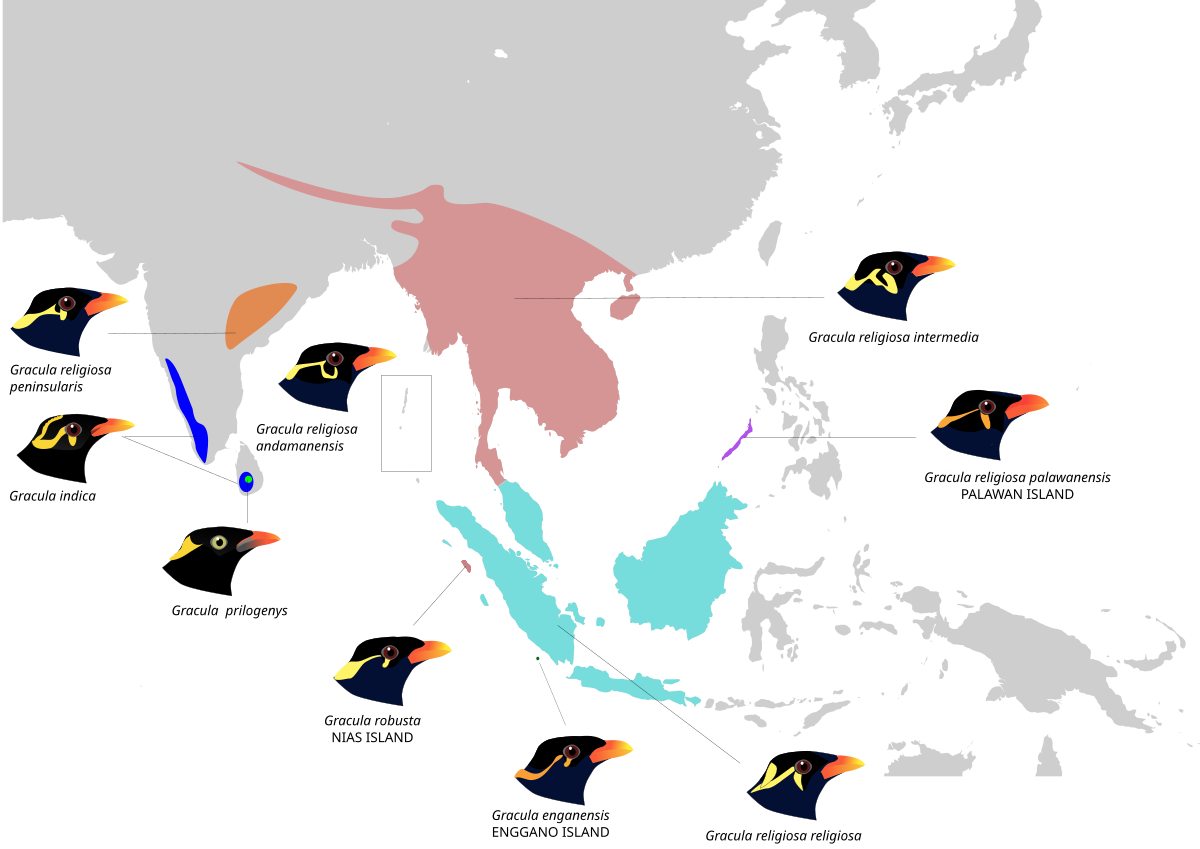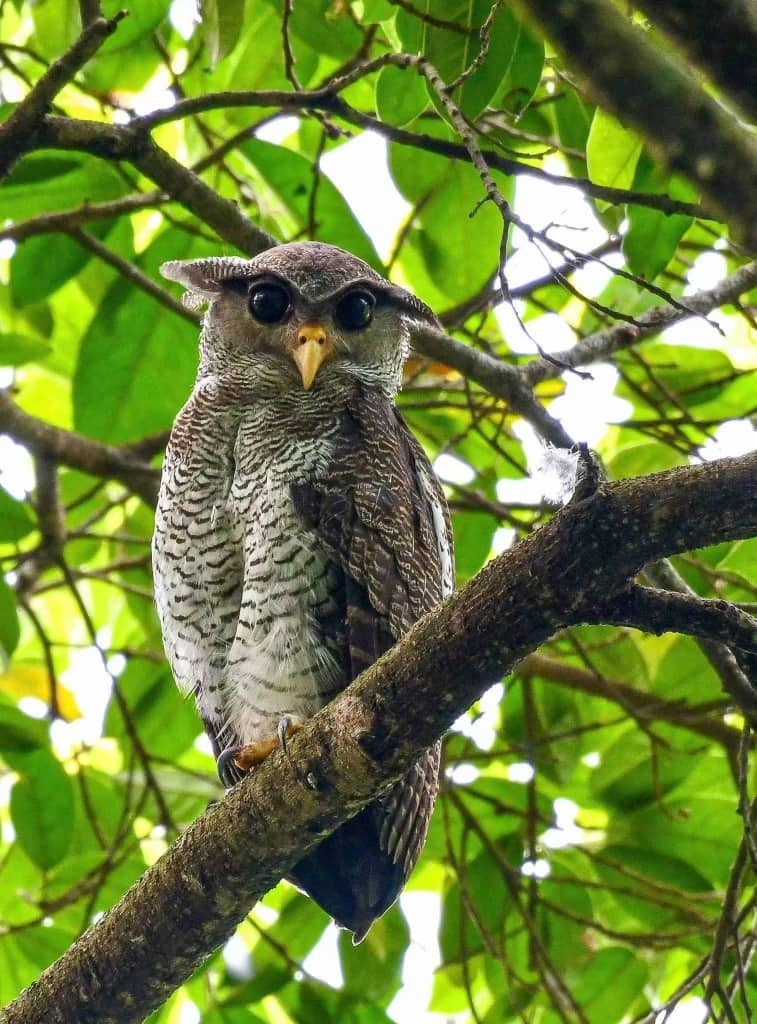Birds of Bali listed by their systematic.

Wikipedia: Grey teal Source: OTHER
1200px-Anas_gracilis_-_Bushell%27s_Lagoon.jpg
General: ![]() The grey teal (Anas gracilis) is a dabbling duck found in open wetlands in Australia and New Zealand.
[more]
The grey teal (Anas gracilis) is a dabbling duck found in open wetlands in Australia and New Zealand.
[more]

Wikipedia: Garganey Source: OTHER
1200px-Garganey_%28Anas_querquedula%29_RWD3.jpg
Deutschland: Brut-, Zugvogel RL 2
Habitats:
River and lake

Wikipedia: Wandering whistling-duck Source: OTHER
Wandering_Whistling_Duck_-_melbourne_zoo_cropped.jpg
General: ![]() The wandering whistling duck (Dendrocygna arcuata) is a species of whistling duck. They inhabit tropical and subtropical Australia, the Philippines, Borneo, Indonesia, Papua New Guinea and the Pacific Islands.[2]
[more]
The wandering whistling duck (Dendrocygna arcuata) is a species of whistling duck. They inhabit tropical and subtropical Australia, the Philippines, Borneo, Indonesia, Papua New Guinea and the Pacific Islands.[2]
[more]

Wikipedia: Lesser whistling duck Source: OTHER
1200px-Dendrocygna_javanica_-_Chiang_Mai.jpg
Cotton pygmy goose / Coromandel-Zwergente (Nettapus coromandelianus)

Wikipedia: Cotton pygmy goose Source: OTHER
Cotton_Pygmy-goose.jpg
General: ![]() The cotton pygmy goose or cotton teal (Nettapus coromandelianus) is a small perching duck which breeds in Asia, Southeast Asia extending south and east to Queensland where they are sometimes called white-quilled pygmy goose. They are among the smallest waterfowl in the world and are found in small to large waterbodies with good aquatic vegetation. They are usually seen in pairs or larger groups of pairs, roosting and nesting on trees near water. They are strong fliers and are known to disperse widely, especially in winter. Their breeding season coincides with the rains.
[more]
The cotton pygmy goose or cotton teal (Nettapus coromandelianus) is a small perching duck which breeds in Asia, Southeast Asia extending south and east to Queensland where they are sometimes called white-quilled pygmy goose. They are among the smallest waterfowl in the world and are found in small to large waterbodies with good aquatic vegetation. They are usually seen in pairs or larger groups of pairs, roosting and nesting on trees near water. They are strong fliers and are known to disperse widely, especially in winter. Their breeding season coincides with the rains.
[more]
Little pied cormorant / Australische Zwergscharbe (Microcarbo melanoleucos)

Wikipedia: Little pied cormorant Source: OTHER
1200px-Microcarbo_melanoleucos_-_Royal_National_Park.jpg
![]() The little pied cormorant, little shag or kawaupaka (Microcarbo melanoleucos) is a common Australasian waterbird, found around the coasts, islands, estuaries, and inland waters of Australia, New Guinea, New Zealand, Thailand, Myanmar, Singapore, Brunei, Timor Leste, and Indonesia, and around the islands of the south-western Pacific and the subantarctic. It is a small short-billed cormorant usually black above and white below with a yellow bill and small crest, although a mostly black white-throated form predominates in New Zealand. Three subspecies are recognised. Until recently most authorities referred to this species as Phalacrocorax melanoleucos.
[more]
The little pied cormorant, little shag or kawaupaka (Microcarbo melanoleucos) is a common Australasian waterbird, found around the coasts, islands, estuaries, and inland waters of Australia, New Guinea, New Zealand, Thailand, Myanmar, Singapore, Brunei, Timor Leste, and Indonesia, and around the islands of the south-western Pacific and the subantarctic. It is a small short-billed cormorant usually black above and white below with a yellow bill and small crest, although a mostly black white-throated form predominates in New Zealand. Three subspecies are recognised. Until recently most authorities referred to this species as Phalacrocorax melanoleucos.
[more]
White-faced heron / Weisswangenreiher (Egretta novaehollandiae)
Profile Wikipedia eBird Xeno-Canto
Probably a white-faced heron. 2008-01-12 19.53.46 Australia
First observed in Australia on 2008-01-12.
![]() The white-faced heron (Egretta novaehollandiae) also known as the white-fronted heron,[2] and incorrectly as the grey heron,[3] or blue crane,[2] is a common bird throughout most of Australasia, including New Guinea, the islands of Torres Strait, Indonesia, New Zealand, and all but the driest areas of Australia.
[more]
The white-faced heron (Egretta novaehollandiae) also known as the white-fronted heron,[2] and incorrectly as the grey heron,[3] or blue crane,[2] is a common bird throughout most of Australasia, including New Guinea, the islands of Torres Strait, Indonesia, New Zealand, and all but the driest areas of Australia.
[more]
Purple heron / Purpurreiher (Ardea purpurea)
Profile Wikipedia eBird Vogelwarte BirdLife ZH ornitho.ch Xeno-Canto BirdID NABU
Purple heron, Phnom Krom. 2024-03-03 06.13.38 Cambodia
First observed in Cambodia on 2024-03-03.
![]() The purple heron (Ardea purpurea) is a wide-ranging species of wading bird in the heron family, Ardeidae. The scientific name comes from Latin ardea "heron", and purpureus, "coloured purple".[2] It breeds in Africa, central and southern Europe, and southern and eastern Asia. The Western Palearctic populations migrate between breeding and wintering habitats whereas the African and tropical-Asian populations are primarily sedentary, except for occasional dispersive movements.
[more]
The purple heron (Ardea purpurea) is a wide-ranging species of wading bird in the heron family, Ardeidae. The scientific name comes from Latin ardea "heron", and purpureus, "coloured purple".[2] It breeds in Africa, central and southern Europe, and southern and eastern Asia. The Western Palearctic populations migrate between breeding and wintering habitats whereas the African and tropical-Asian populations are primarily sedentary, except for occasional dispersive movements.
[more]
Vocalization: ![]() Quite similar to Grey Heron, but not so vocal. [Link]
Quite similar to Grey Heron, but not so vocal. [Link]
Calls: ![]() Pitch slightly higher and remains stable throughout the short call. Volume muffled and timbre drier. [Link]
Pitch slightly higher and remains stable throughout the short call. Volume muffled and timbre drier. [Link]
Physical details: length=78-90 cm,
wingspan=120-150 cm,
weight=525-1218 g
Habitats:
Wetland
Call:
Automatically generated from Xeno-Canto recording
♫ XC878038 - Purple Heron - Ardea purpurea manilensis - flight call - Nonthaburi, Thailand. Source: XENOCANTO
XC878038 - Purple Heron - Ardea purpurea manilensis - flight call - Nonthaburi, Thailand.mp3
Thailand (flight call)

Call attributes:
flight call Frequency: ,
Medium egret / Mittelreiher (Ardea intermedia)
Could be a medium egret aka intermedian egret aka median egret with orange bill but dark legs but could also be a great egret, which we saw a lot. 2024-02-22 11.59.32 Laos
First observed in Laos on 2024-02-22.
General: ![]() The medium egret (Ardea intermedia), median egret, smaller egret or intermediate egret, is a medium-sized heron. Some taxonomists put the species in the genus Egretta or Mesophoyx. It is a resident breeder in southern and eastern Asia.
[more]
The medium egret (Ardea intermedia), median egret, smaller egret or intermediate egret, is a medium-sized heron. Some taxonomists put the species in the genus Egretta or Mesophoyx. It is a resident breeder in southern and eastern Asia.
[more]
Call:
Automatically generated from Xeno-Canto recording
♫ XC460203 - Intermediate Egret - Ardea intermedia - call - Bharatpur, Rajasthan, India. Source: XENOCANTO
XC460203 - Intermediate Egret - Ardea intermedia - call - Bharatpur, Rajasthan, India.mp3
(call)

Call attributes:
Frequency: ,
Black-crowned night-heron / Nachtreiher (Nycticorax nycticorax)

Wikipedia: Black-crowned night-heron Source: OTHER
1200px-BCNH_CMCNJ_for_Wiki.png
This bird appears across the great seas in the following continents:
Europe, North America, South America, Africa, Asia.
![]() The black-crowned night heron (Nycticorax nycticorax), or black-capped night heron, commonly shortened to just night heron in Eurasia, is a medium-sized heron found throughout a large part of the world, except in the coldest regions and Australasia (where it is replaced by the closely related nankeen night heron, with which it has hybridized in the area of contact).
[more]
The black-crowned night heron (Nycticorax nycticorax), or black-capped night heron, commonly shortened to just night heron in Eurasia, is a medium-sized heron found throughout a large part of the world, except in the coldest regions and Australasia (where it is replaced by the closely related nankeen night heron, with which it has hybridized in the area of contact).
[more]
Calls: ![]() Most commonly hear call is a nasal, soft croaking "roack", like cross between Raven and frog. [Link]
Most commonly hear call is a nasal, soft croaking "roack", like cross between Raven and frog. [Link]
Physical details: length=58-65 cm,
wingspan=105-112 cm,
weight=500-800 g
Habitats:
Wetland
Little egret / Seidenreiher (Egretta garzetta)
Profile Wikipedia eBird Vogelwarte BirdLife ZH ornitho.ch Xeno-Canto BirdID NABU
Seidenreiher. 2022-02-05 11.42.26 Klingnauer Stausee (man-made lake)
First observed in 🇨🇭 on 2022-02-05.
General: ![]() The little egret (Egretta garzetta) is a species of small heron in the family Ardeidae. The genus name comes from the Provençal French Aigrette, "egret", a diminutive of Aigron," heron". The species epithet garzetta is from the Italian name for this bird, garzetta or sgarzetta.[2]
[more]
The little egret (Egretta garzetta) is a species of small heron in the family Ardeidae. The genus name comes from the Provençal French Aigrette, "egret", a diminutive of Aigron," heron". The species epithet garzetta is from the Italian name for this bird, garzetta or sgarzetta.[2]
[more]
Vocalization: ![]() Sometimes utters a dry, rasping "kerrr" when flushed, but is mostly silent away from breeding ground. In colonies a peculiar gurgling and vibrating sound is heard; "ghala-la-la-la". [Link]
Sometimes utters a dry, rasping "kerrr" when flushed, but is mostly silent away from breeding ground. In colonies a peculiar gurgling and vibrating sound is heard; "ghala-la-la-la". [Link]
Physical details: length=55-65 cm,
wingspan=88-95 cm,
weight=350-550 g
Habitats:
Wetland
Call:
Sort of a quack, brighter and higher than grey heron, with a bit of wawa.
Call attributes:
Call melody: non-musical, slow, Frequency: low (1-3 KHz),
Pied heron / Elsterreiher (Egretta picata)
Profile Wikipedia eBird Xeno-Canto

Wikipedia: Pied heron Source: OTHER
1200px-Pied_Heron_-_Fogg_Dam.jpg
General: ![]() The pied heron (Egretta picata), also known as the pied egret[4] is a bird found in coastal and subcoastal areas of monsoonal northern Australia as well as some parts of Wallacea and New Guinea.
[more]
The pied heron (Egretta picata), also known as the pied egret[4] is a bird found in coastal and subcoastal areas of monsoonal northern Australia as well as some parts of Wallacea and New Guinea.
[more]
Pacific reef-egret / Riffreiher (Egretta sacra)

Wikipedia: Pacific reef-egret Source: OTHER
1200px-Egretta_sacra.jpg
This bird appears across the great seas in the following continents:
North America, Asia, Australia.
![]() The Pacific reef heron (Egretta sacra), also known as the eastern reef heron or eastern reef egret, is a species of heron found throughout southern Asia and Oceania.[2]
[more]
The Pacific reef heron (Egretta sacra), also known as the eastern reef heron or eastern reef egret, is a species of heron found throughout southern Asia and Oceania.[2]
[more]
Cattle egret / Kuhreiher (Bubulcus ibis)
Cow-plus-cattle egret. 2020-03-07 15.17.34 Panama
First observed in Costa Rica on 2018-02-27.
This bird appears across the great seas in the following continents:
Europe, North America, South America, Africa, Asia.
![]() The cattle egret (Bubulcus ibis) is a cosmopolitan species of heron (family Ardeidae) found in the tropics, subtropics, and warm-temperate zones. It is the only member of the monotypic genus Bubulcus, although some authorities regard two of its subspecies as full species, the western cattle egret and the eastern cattle egret. Despite the similarities in plumage to the egrets of the genus Egretta, it is more closely related to the herons of Ardea. Originally native to parts of Asia, Africa, and Europe, it has undergone a rapid expansion in its distribution and successfully colonised much of the rest of the world in the last century.
[more]
The cattle egret (Bubulcus ibis) is a cosmopolitan species of heron (family Ardeidae) found in the tropics, subtropics, and warm-temperate zones. It is the only member of the monotypic genus Bubulcus, although some authorities regard two of its subspecies as full species, the western cattle egret and the eastern cattle egret. Despite the similarities in plumage to the egrets of the genus Egretta, it is more closely related to the herons of Ardea. Originally native to parts of Asia, Africa, and Europe, it has undergone a rapid expansion in its distribution and successfully colonised much of the rest of the world in the last century.
[more]
Vocalization: ![]() Usually silent away from breeding ground. In the colonies a chorus of various coarse sounds can be heard. Most distinct is a disyllabic "rick-rack". Other sounds includes short, guttural utterings, or drawn, harsh shrieks. [Link]
Usually silent away from breeding ground. In the colonies a chorus of various coarse sounds can be heard. Most distinct is a disyllabic "rick-rack". Other sounds includes short, guttural utterings, or drawn, harsh shrieks. [Link]
Physical details: length=48-53 cm,
wingspan=90-96 cm,
weight=300-400 g
Call:
Automatically generated from Xeno-Canto recording
♫ XC353848 - Western Cattle Egret - Bubulcus ibis - flight call - sevilla, andalucía, Spain. Source: XENOCANTO
XC353848 - Western Cattle Egret - Bubulcus ibis - flight call - sevilla, andalucía, Spain.mp3
Spain (flight call)

Call attributes:
flight call Frequency: ,
Green-backed heron (Butorides striata)
Striated heron. 2024-02-22 11.31.30 Laos
First observed in Laos on 2024-02-22.
This bird appears across the great seas in the following continents:
Europe, South America, Africa, Asia.
Song:
Automatically generated from Xeno-Canto recording
Song attributes:
Frequency:
♫ XC791519 - Striated Heron - Butorides striata - song, sounds like Ow plus pi-rol lhl, Copperbelt Province, Zambia. Source: XENOCANTO
XC791519 - Striated Heron - Butorides striata - song, sounds like Ow plus pi-rol lhl, Copperbelt Province, Zambia.mp3
(song)

Cinnamon bittern / Zimtdommel (Ixobrychus cinnamomeus)
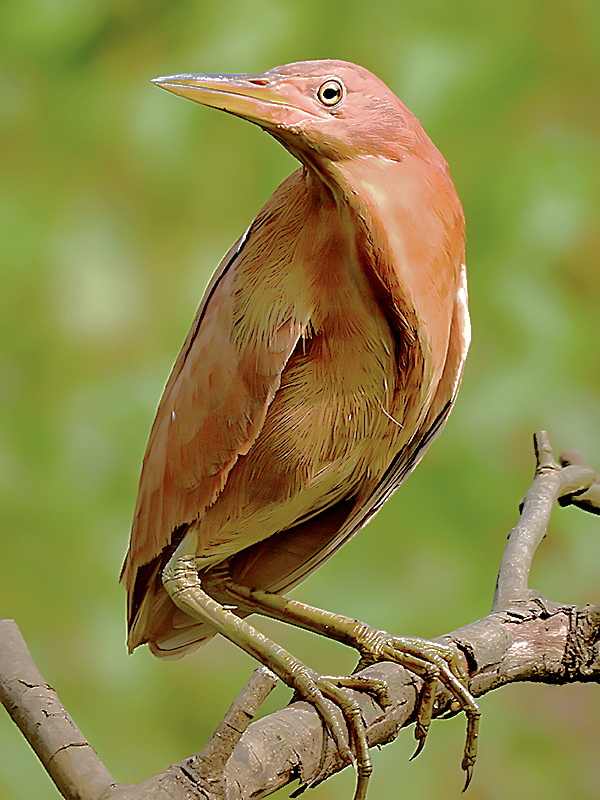
Wikipedia: Cinnamon bittern Source: OTHER
Cinnamon_bittern_or_chestnut_bittern_%28Ixobrychus_cinnamomeus%29_Photograph_by_Shantanu_Kuveskar.jpg
vagrant
Yellow bittern / Chinadommel (Ixobrychus sinensis)
Profile Wikipedia eBird Xeno-Canto

Wikipedia: Yellow bittern Source: OTHER
1200px-Ixobrychus_sinensis_-_Chinese_Garden.jpg
vagrant
Javan pond-heron / Prachtreiher (Ardeola speciosa)
Wikipedia: Javan pond-heron Source: OTHER
Ardeola_speciosa.JPG
vagrant
Great frigatebird / Bindenfregattvogel (Fregata minor)
Profile Wikipedia eBird Audubon AllAboutBirds Xeno-Canto
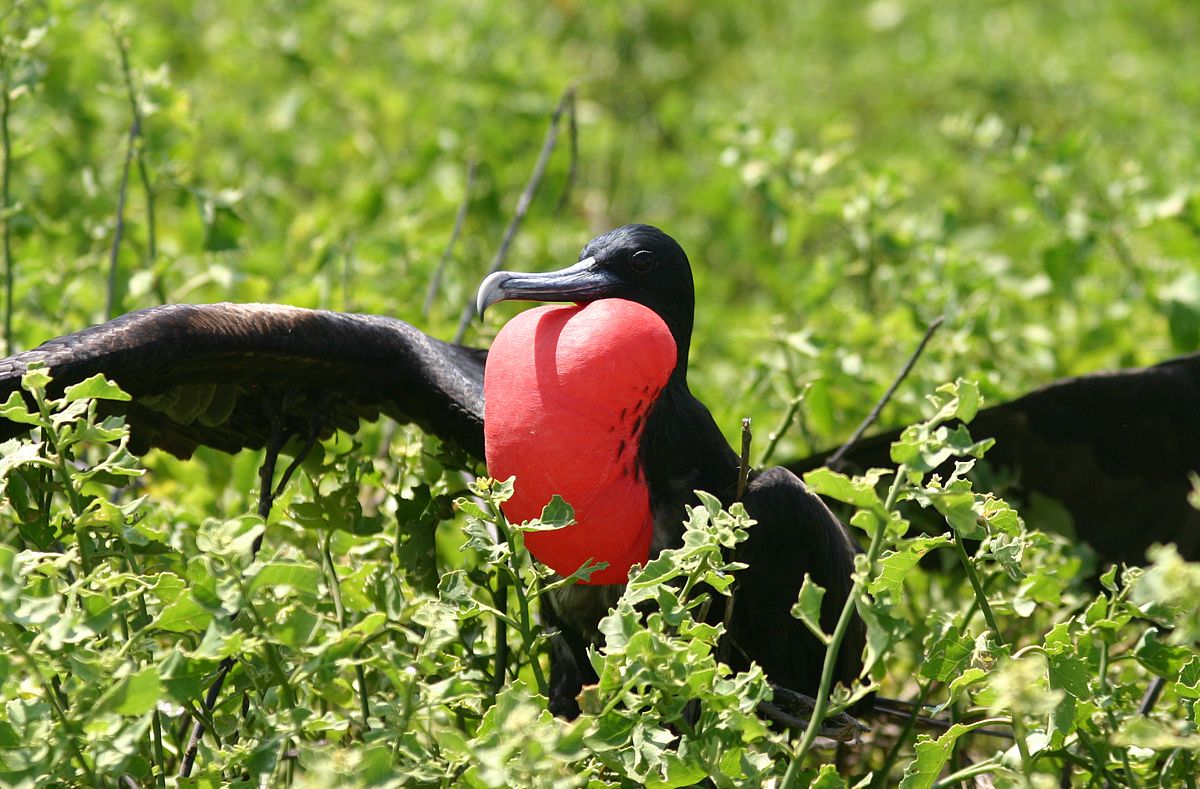
Wikipedia: Great frigatebird Source: OTHER
1200px-Male_greater_frigate_bird_displaying.jpg
This bird appears across the great seas in the following continents:
North America, South America, Africa, Asia.
General: ![]() The great frigatebird (Fregata minor) is a large seabird in the frigatebird family. There are major nesting populations in the tropical Pacific (including the Galapagos Islands) and Indian Oceans, as well as a tiny population in the South Atlantic.
[more]
The great frigatebird (Fregata minor) is a large seabird in the frigatebird family. There are major nesting populations in the tropical Pacific (including the Galapagos Islands) and Indian Oceans, as well as a tiny population in the South Atlantic.
[more]
Lesser frigatebird / Arielfregattvogel (Fregata ariel)
Profile Wikipedia eBird Xeno-Canto

Wikipedia: Lesser frigatebird Source: OTHER
1200px-Lesser_Frigatebird_from_Indonesia.jpg
![]() The lesser frigatebird (Fregata ariel) is a seabird of the frigatebird family Fregatidae. At around 75 cm (30 in) in length, it is the smallest species of frigatebird. It occurs over tropical and subtropical waters across the Indian and Pacific Oceans as well as off the Atlantic coast of Brazil.
[more]
The lesser frigatebird (Fregata ariel) is a seabird of the frigatebird family Fregatidae. At around 75 cm (30 in) in length, it is the smallest species of frigatebird. It occurs over tropical and subtropical waters across the Indian and Pacific Oceans as well as off the Atlantic coast of Brazil.
[more]
White-tailed tropicbird / Weißschwanz-Tropikvogel (Phaethon lepturus)
Profile Wikipedia eBird Audubon AllAboutBirds Xeno-Canto
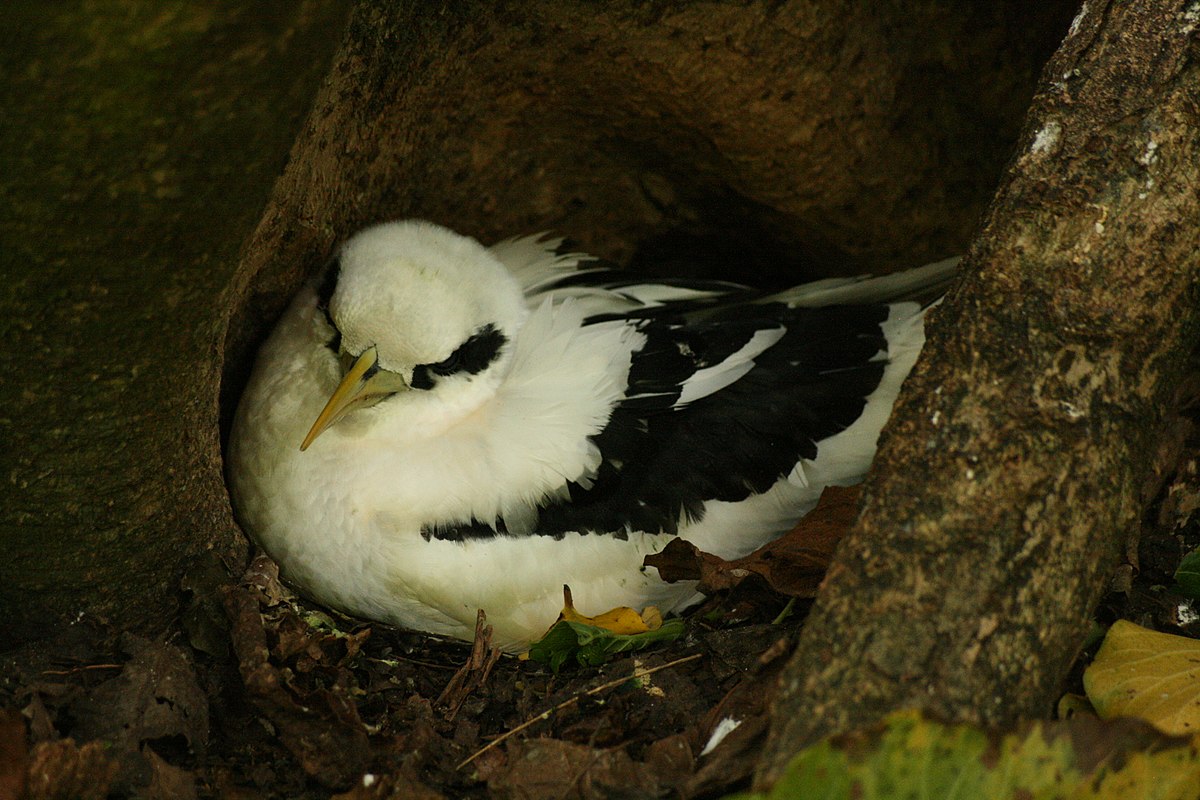
Wikipedia: White-tailed tropicbird Source: OTHER
1200px-White-tailed_Tropicbird_-_Phaeton_lepturus.jpg
This bird appears across the great seas in the following continents:
North America, Africa, Asia.
![]() The white-tailed tropicbird (Phaethon lepturus) is a species of tropicbird. It is the smallest of three closely related seabirds of the tropical oceans and smallest member of the order Phaethontiformes. It is found in the tropical Atlantic, western Pacific and Indian Oceans. It also breeds on some Caribbean islands, and a few pairs have started nesting recently on Little Tobago, joining the red-billed tropicbird colony. In addition to the tropical Atlantic, it nests as far north as Bermuda, where it is locally called a "longtail".[2]
[more]
The white-tailed tropicbird (Phaethon lepturus) is a species of tropicbird. It is the smallest of three closely related seabirds of the tropical oceans and smallest member of the order Phaethontiformes. It is found in the tropical Atlantic, western Pacific and Indian Oceans. It also breeds on some Caribbean islands, and a few pairs have started nesting recently on Little Tobago, joining the red-billed tropicbird colony. In addition to the tropical Atlantic, it nests as far north as Bermuda, where it is locally called a "longtail".[2]
[more]
Brown booby / Weißbauchtölpel (Sula leucogaster)
Profile Wikipedia eBird Audubon AllAboutBirds Xeno-Canto

Wikipedia: Brown booby Source: OTHER
1200px-Atob%C3%A1-pardo.jpg
This bird appears across the great seas in the following continents:
North America, South America, Africa, Asia.
![]() The brown booby (Sula leucogaster) is a large seabird of the booby family, Sulidae, of which it is perhaps the most common and widespread species.[3] It has a pantropical range, which overlaps with that of other booby species. The gregarious brown booby commutes and forages at low height over inshore waters. Flocks plunge-dive to take small fish, especially when these are driven near the surface by their predators. They only nest on the ground, and roost on solid objects rather than the water surface.[3]
[more]
The brown booby (Sula leucogaster) is a large seabird of the booby family, Sulidae, of which it is perhaps the most common and widespread species.[3] It has a pantropical range, which overlaps with that of other booby species. The gregarious brown booby commutes and forages at low height over inshore waters. Flocks plunge-dive to take small fish, especially when these are driven near the surface by their predators. They only nest on the ground, and roost on solid objects rather than the water surface.[3]
[more]
Masked booby (Sula dactylatra)

Wikipedia: Masked booby Source: OTHER
1200px-Starr_080606-6808_Coronopus_didymus.jpg
This bird appears across the great seas in the following continents:
North America, South America, Africa, Asia.
![]() The masked booby (Sula dactylatra), also called the masked gannet or the blue-faced booby, is a large seabird of the booby and gannet family, Sulidae. First described by the French naturalist René-Primevère Lesson in 1831, the masked booby is one of six species of booby in the genus Sula. It has a typical sulid body shape, with a long pointed yellowish bill, long neck, aerodynamic body, long slender wings and pointed tail. The adult is bright white with black wings, a black tail and a dark face mask; at 75–85 cm (30–33 in) long, it is the largest species of booby. The sexes have similar plumage. This species ranges across tropical oceans, except in the eastern Atlantic and eastern Pacific. In the latter, it is replaced by the Nazca booby (Sula granti), which was formerly regarded as a subspecies of masked booby.
[more]
The masked booby (Sula dactylatra), also called the masked gannet or the blue-faced booby, is a large seabird of the booby and gannet family, Sulidae. First described by the French naturalist René-Primevère Lesson in 1831, the masked booby is one of six species of booby in the genus Sula. It has a typical sulid body shape, with a long pointed yellowish bill, long neck, aerodynamic body, long slender wings and pointed tail. The adult is bright white with black wings, a black tail and a dark face mask; at 75–85 cm (30–33 in) long, it is the largest species of booby. The sexes have similar plumage. This species ranges across tropical oceans, except in the eastern Atlantic and eastern Pacific. In the latter, it is replaced by the Nazca booby (Sula granti), which was formerly regarded as a subspecies of masked booby.
[more]
Abbot's booby / Graufußtölpel (Papasula abbotti)

Wikipedia: Abbot's booby Source: OTHER
Abbott%27s_Booby.jpg
Christmas Island; mainland vagrant

Wikipedia: Chestnut-backed scimitar-babbler Source: OTHER
1200px-Chestnut-backed_Scimitar-babbler_-_Ijen_-_East_Java_MG_7589_%2829543406140%29.jpg
Profile Wikipedia eBird Xeno-Canto

Wikipedia: Horsfield's babbler Source: OTHER
1200px-Horsfield%27s_Babbler_0A2A2603.jpg

Wikipedia: Crescent-chested babbler Source: OTHER
Crescent-chested_Babbler_%28Stachyris_melanothorax%29.jpg
Endemic (country/region)
Profile Wikipedia eBird Xeno-Canto

Wikipedia: Sunda bush warbler Source: OTHER
1200px-Aberrant_Bush_Warbler_0A2A4060.jpg

Wikipedia: Oriental reed warbler Source: OTHER
Oriental_Reed_Warbler_I_IMG_0246.jpg
vagrant

Wikipedia: Yellow-bellied warbler Source: OTHER
Yellow-bellied_Warbler_East_Pendam_Sikkim_30.08.2019.jpg
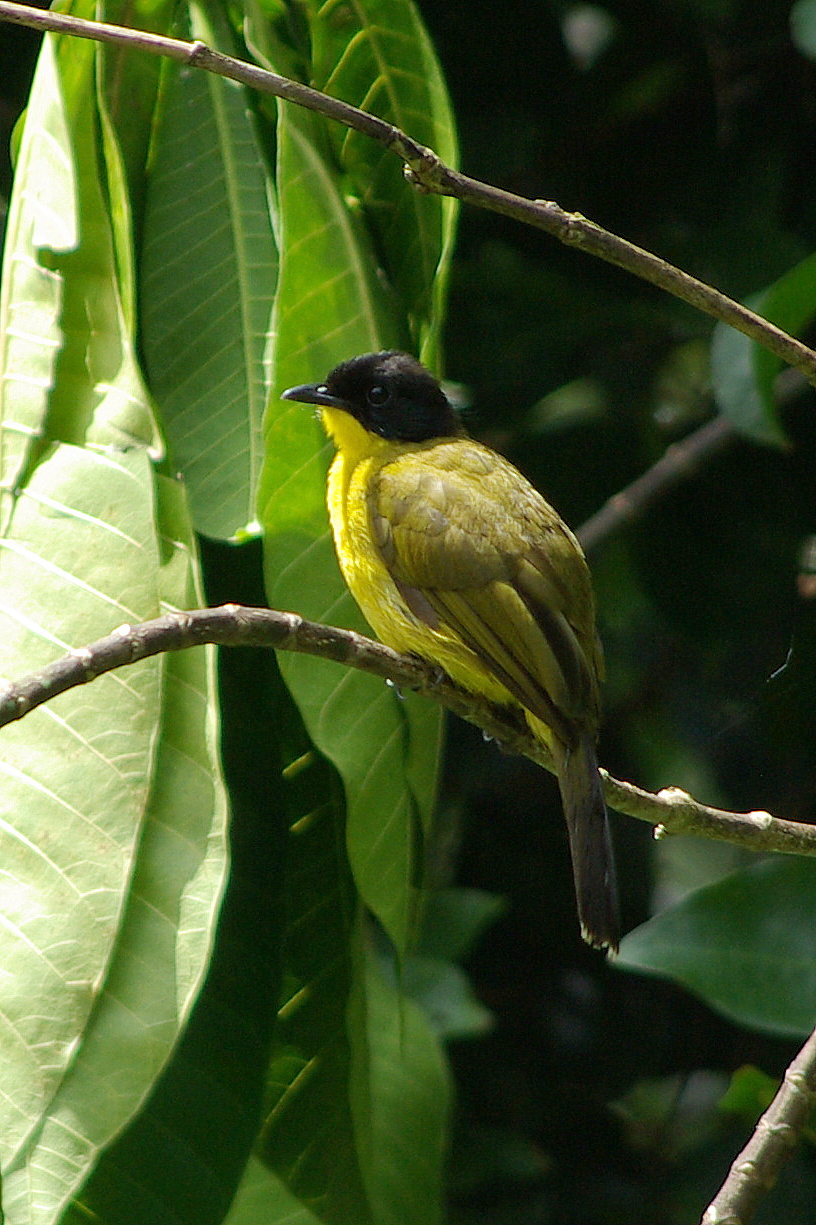
Wikipedia: Black-capped bulbul Source: OTHER
Black-capped_bulbul%2C_%28Pycnonotus_melanicterus%29.jpg
Profile Wikipedia eBird Xeno-Canto
Sooty headed bulbul - otherwise red whiskered bulbul, seen without the red? 2024-01-25 11.11.34 Thailand
First observed in Thailand on 2024-01-25.
Profile Wikipedia eBird Xeno-Canto

Wikipedia: Orange-spotted bulbul Source: OTHER
Orange-spotted_Bulbul_-_Gunung_Gede_MG_4344_%2829364144760%29.jpg
Endemic (country/region)
Profile Wikipedia eBird Xeno-Canto
Yellow-vented Bulbul, Phnom Krom. 2024-03-03 06.19.08 Cambodia
First observed in Cambodia on 2024-03-03.
Song:
Automatically generated from Xeno-Canto recording
Song attributes:
Frequency:
♫ XC477488 - Yellow-vented Bulbul - Pycnonotus goiavier - song - Davao City, Davao del Sur, Davao Region, Philippines. Source: XENOCANTO
XC477488 - Yellow-vented Bulbul - Pycnonotus goiavier - song - Davao City, Davao del Sur, Davao Region, Philippines.mp3
(song)

Black-headed bulbul. 2024-02-05 08.45.16 Laos
First observed in Laos on 2024-02-05.
Song:
Automatically generated from Xeno-Canto recording
Song attributes:
Frequency:
♫ XC665354 - Black-headed Bulbul - Brachypodius melanocephalos - song, Central Catchment Nature Reserve, Singapore. Source: XENOCANTO
XC665354 - Black-headed Bulbul - Brachypodius melanocephalos - song, Central Catchment Nature Reserve, Singapore.mp3
(song)

Profile Wikipedia eBird Xeno-Canto

Wikipedia: Lemon-bellied white-eye Source: OTHER
1200px-Yellow-bellied_White-eye_%28Zosterops_chloris%29.jpg
General: ![]() The lemon-bellied white-eye (Zosterops chloris) is a species of bird in the family Zosteropidae. It is endemic to Indonesia, where it occurs on a number of islands from the Sunda Strait to the Aru Islands. It is present on several of the Lesser Sunda Islands as well as on parts of Sulawesi, as well as many smaller islands, but is absent from the larger islands of Borneo, Java, Sumatra and Timor. Currently (May 2017), HBW describes five sub-species of lemon-bellied white-eye.[2] However, the extensive distribution of Z. c. intermedius (including S. Sulawesi, SE. Sulawesi, C. Lesser Sundas and small islands in between) is likely to contain more than one reproductively isolated population (cf. Z.c. intermedius and Z. c. flavissimus, with the latter now considered a distinct species, the Wakatobi white-eye (Z. flavissimus)[3]).
[more]
The lemon-bellied white-eye (Zosterops chloris) is a species of bird in the family Zosteropidae. It is endemic to Indonesia, where it occurs on a number of islands from the Sunda Strait to the Aru Islands. It is present on several of the Lesser Sunda Islands as well as on parts of Sulawesi, as well as many smaller islands, but is absent from the larger islands of Borneo, Java, Sumatra and Timor. Currently (May 2017), HBW describes five sub-species of lemon-bellied white-eye.[2] However, the extensive distribution of Z. c. intermedius (including S. Sulawesi, SE. Sulawesi, C. Lesser Sundas and small islands in between) is likely to contain more than one reproductively isolated population (cf. Z.c. intermedius and Z. c. flavissimus, with the latter now considered a distinct species, the Wakatobi white-eye (Z. flavissimus)[3]).
[more]
Indian white-eye at hotel Pou Villa Luang Namtha. 2024-02-05 08.46.10 Laos
First observed in Laos on 2024-02-05.
Song:
Automatically generated from Xeno-Canto recording
Song attributes:
Frequency:
♫ Indian White Eye dawn song in Southern India from Wikipedia. Source: WIKIPEDIA
Indian White Eye dawn song in Southern India from Wikipedia.mp3
(song)
Profile Wikipedia eBird Xeno-Canto
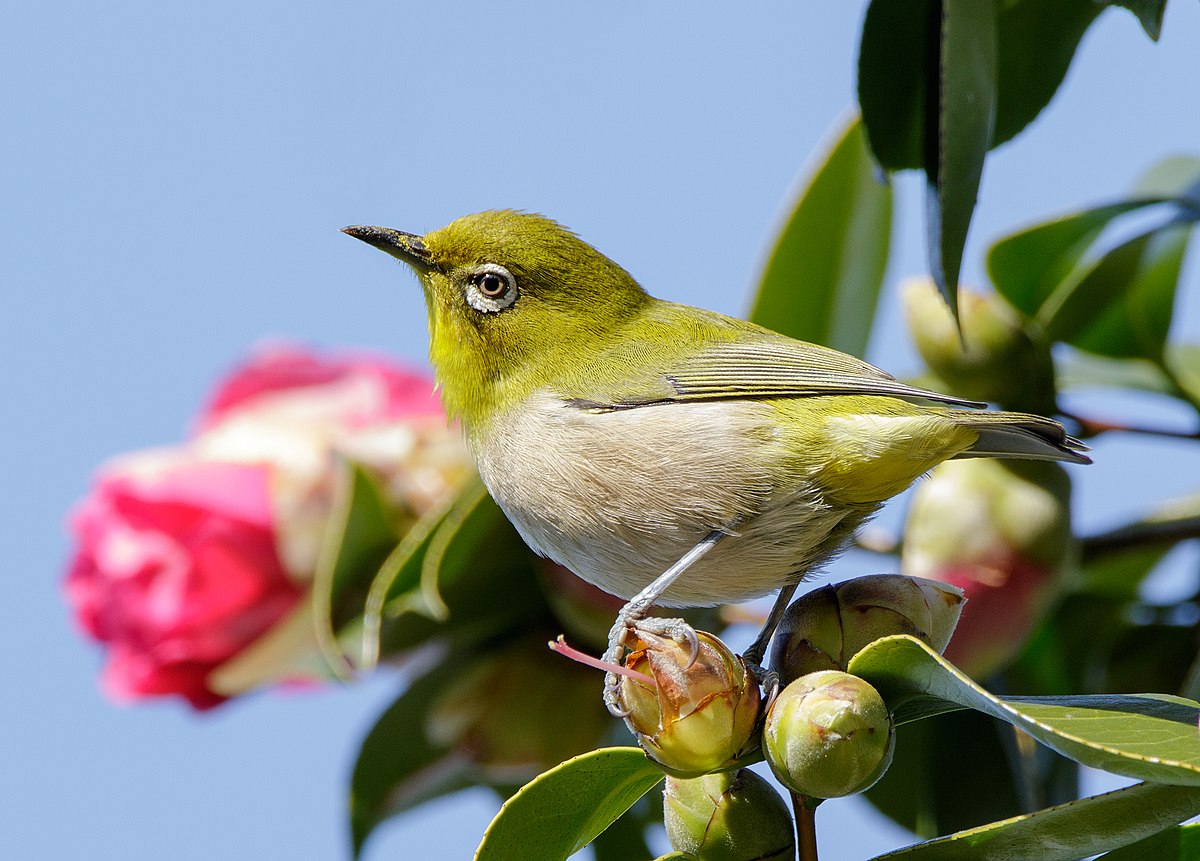
Wikipedia: Mountain white-eye Source: OTHER
1200px-Japanese_white-eye_at_Tenn%C5%8Dji_Park_in_Osaka%2C_January_2016_III.jpg
Profile Wikipedia Xeno-Canto

Wikipedia: Javan grey-throated white-eye Source: OTHER
Javan_Grey-throated_White-eye_%28Lophozosterops_javanicus%29.jpg
Endemic (country/region)
Profile Wikipedia eBird A-Z Animals Vogelwarte BirdLife ZH ornitho.ch bird-song.ch Audubon AllAboutBirds Xeno-Canto BirdID NABU
Barn swallow. 2022-05-05 09.41.44 Maryland
First observed in 🇨🇭 on 2020-04-16.
This bird appears across the great seas in the following continents:
Europe, North America, South America, Africa, Asia.
Die langen Schwanzfedern vom Rauchschwalbe und anderen geben auch dem Schmetterling Schwalbenschwanz seine deutschen Namen.
Etymology: ![]() In früheren Jahrhunderten flogen sie vielfach durch die Öffnungen im Giebel ein und aus, durch die auch der Rauch des Herdfeuers abzog. So erhielten sie den Namen Rauchschwalben. [Link]
In früheren Jahrhunderten flogen sie vielfach durch die Öffnungen im Giebel ein und aus, durch die auch der Rauch des Herdfeuers abzog. So erhielten sie den Namen Rauchschwalben. [Link]
Appearance and identification: ![]() Rauchschwalbes Bauch ist etwas braun rot, nicht weiss wie der von der Mehlschwalbe - was wahrscheinlich Quelle der zwei Namen ist. [Link]
Rauchschwalbes Bauch ist etwas braun rot, nicht weiss wie der von der Mehlschwalbe - was wahrscheinlich Quelle der zwei Namen ist. [Link]
Song: ![]() Characteristic calls and song. Song a sparkling, squeaky energetic improvisation with interspersed contact calls, often with diagnostic ending; an electric and drawn-out "su-eerrrrrrrrrrrrrrr". [Link]
Characteristic calls and song. Song a sparkling, squeaky energetic improvisation with interspersed contact calls, often with diagnostic ending; an electric and drawn-out "su-eerrrrrrrrrrrrrrr". [Link]
Calls: ![]() Contact call a short and sharp "weet" or "kee-weet". [Link]
Contact call a short and sharp "weet" or "kee-weet". [Link]
Physical details: length=17-19 cm,
wingspan=32-34 cm,
weight=16-22 g
Habitats:
Settlement
Looks similar to:
Common house martin.
Song:
General: Squeaky with occasional buzzes, usually heard in flock.
Song: ![]() Kann melodisch sein wenn einzeln gehört statt viele zusammen. [Link]
Kann melodisch sein wenn einzeln gehört statt viele zusammen. [Link]
Song attributes:
Melody: stereotype melodic, fast, Frequency: 2-6 KHz
Call:
Automatically generated from Xeno-Canto recording
♫ Barn swallows on the hunt, some quite high. 2020-08-18 13.01.00 Luppmen (song?)
Profile Wikipedia eBird Xeno-Canto
Wikipedia: Pacific swallow Source: OTHER
Hirundo_tahitica_javanica.JPG
Profile Wikipedia eBird Xeno-Canto

Wikipedia: Striated swallow Source: OTHER
Striated_Swallow_%28Hirundo_striolata_striolata%29.jpg

Wikipedia: Asian house-martin Source: OTHER
Delichon_dasypus_-Taiwan-8-4c.jpg
vagrant, Christmas & Cocos (Keeling) Islands

Wikipedia: Australian lark Source: OTHER
Australasianbushlark.jpg
General: ![]() Horsfield's bush lark (Mirafra javanica) is a species of lark which inhabits grassland throughout most of Australia and much of Southeast Asia.
[more]
Horsfield's bush lark (Mirafra javanica) is a species of lark which inhabits grassland throughout most of Australia and much of Southeast Asia.
[more]
Profile Wikipedia eBird Xeno-Canto BirdID NABU
Zistensaenger in der Luft in Albufera. 2022-04-12 15.03.34 Mallorca
First observed in Mallorca on 2022-04-08.
![]() The zitting cisticola or streaked fantail warbler (Cisticola juncidis) is a widely distributed Old World warbler whose breeding range includes southern Europe, Africa (outside the deserts and rainforest), and southern Asia down to northern Australia. A small bird found mainly in grasslands, it is best identified by its rufous rump; as well, it lacks any gold on the collar and the brownish tail is tipped with white. During the breeding season, males have a zigzagging flight display accompanied by regular "zitting" calls that have been likened to repeated snips of a scissor. They build their pouch nest suspended within a clump of grass.
[more]
The zitting cisticola or streaked fantail warbler (Cisticola juncidis) is a widely distributed Old World warbler whose breeding range includes southern Europe, Africa (outside the deserts and rainforest), and southern Asia down to northern Australia. A small bird found mainly in grasslands, it is best identified by its rufous rump; as well, it lacks any gold on the collar and the brownish tail is tipped with white. During the breeding season, males have a zigzagging flight display accompanied by regular "zitting" calls that have been likened to repeated snips of a scissor. They build their pouch nest suspended within a clump of grass.
[more]
Song: ![]() Male song a diagnostic, monosyllabic, high-pitched "cist", repeated in an even rhythm about once every second, while in bounding song-flight or perched. [Link]
Male song a diagnostic, monosyllabic, high-pitched "cist", repeated in an even rhythm about once every second, while in bounding song-flight or perched. [Link]
Calls: ![]() Alarm call a short, clipping "witt", repeated in series. [Link]
Alarm call a short, clipping "witt", repeated in series. [Link]
Physical details: length=10 cm,
wingspan=12-14 cm,
weight=8-12 g
Call:
Automatically generated from Xeno-Canto recording
♫ Source: BirdNet
20220408_144327 birdnet - Zistensänger - Zistensänger.mp3
2022-04-08 14.43.27 Mallorca (song?)
Golden-headed cisticola. 2024-02-17 07.05.02 Laos
First observed in Laos on 2024-02-17.
General: ![]() The golden-headed cisticola (Cisticola exilis), also known as the bright-capped cisticola, is a species of warbler in the family Cisticolidae, found in Australia and thirteen Asian countries. Growing to 9–11.5 centimetres (3.5–4.5 in) long, it is usually brown and cream in colour, but has a different appearance during the mating season, with a gold-coloured body and a much shorter tail. It is an omnivore and frequently makes a variety of vocalizations. Known as the "finest tailor of all birds",[3] it constructs nests out of plants and spider threads. It mates in the rainy season. It has a very large range and population, which is thought to be increasing.
[more]
The golden-headed cisticola (Cisticola exilis), also known as the bright-capped cisticola, is a species of warbler in the family Cisticolidae, found in Australia and thirteen Asian countries. Growing to 9–11.5 centimetres (3.5–4.5 in) long, it is usually brown and cream in colour, but has a different appearance during the mating season, with a gold-coloured body and a much shorter tail. It is an omnivore and frequently makes a variety of vocalizations. Known as the "finest tailor of all birds",[3] it constructs nests out of plants and spider threads. It mates in the rainy season. It has a very large range and population, which is thought to be increasing.
[more]
Song:
Automatically generated from Xeno-Canto recording
Song attributes:
Frequency:
♫ XC746858 - Golden-headed Cisticola - Cisticola exilis equicaudatus - song, Vientiane Prefecture, Laos. Source: XENOCANTO
XC746858 - Golden-headed Cisticola - Cisticola exilis equicaudatus - song, Vientiane Prefecture, Laos.mp3
Laos (song)

Profile Wikipedia eBird Xeno-Canto
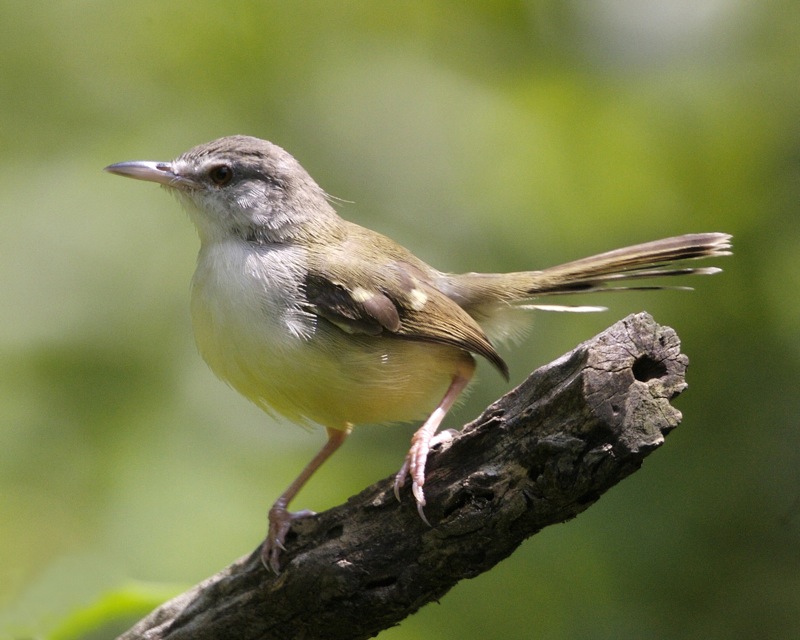
Wikipedia: Bar-winged prinia Source: OTHER
Bar-winged_Prinia_%28Prinia_familiaris%29_.jpg
Endemic (country/region)
Profile Wikipedia eBird Xeno-Canto
Best guess - plain prinia, Phnom Krom. 2024-03-03 07.03.36 Cambodia
First observed in Cambodia on 2024-03-03.
Introduced species
Song:
Automatically generated from Xeno-Canto recording
Song attributes:
Frequency:
♫ XC891889 - Plain Prinia - Prinia inornata herberti - chirpy song - Phnom Krom rice fields, Cambodia. Source: XENOCANTO
XC891889 - Plain Prinia - Prinia inornata herberti - chirpy song - Phnom Krom rice fields, Cambodia.mp3
Cambodia (song)

Profile Wikipedia eBird Xeno-Canto

Wikipedia: Mountain tailorbird Source: OTHER
1200px-Mountain_Tailorbird_0A2A2707.jpg
Profile Wikipedia eBird Xeno-Canto
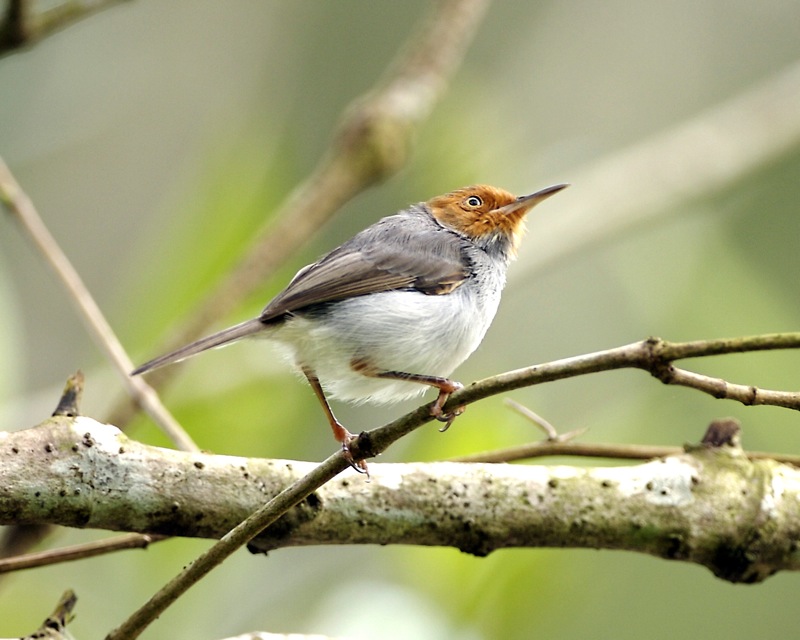
Wikipedia: Ashy tailorbird Source: OTHER
Ashy_Tailorbird_%28Orthotomus_ruficeps_cineraceus%29.jpg
Profile Wikipedia eBird Xeno-Canto

Wikipedia: Olive-backed tailorbird Source: OTHER
1200px-Olive-backed_Tailorbird_0A2A9267.jpg
Endemic (country/region)

Wikipedia: Arctic warbler Source: OTHER
Arctic_Warbler_4683b.jpg
This bird appears across the great seas in the following continents:
Europe, North America, Asia, Australia.
vagrant
Song: ![]() Call and song diagnostic. Song a rattling series of 20-30 single syllables. Repeated as a monotonous phrase in stable pitch, lasting 2-4 seconds. Starts more softly with volume rising throughout each phrase. Often given as introductory part of song. [Link]
Call and song diagnostic. Song a rattling series of 20-30 single syllables. Repeated as a monotonous phrase in stable pitch, lasting 2-4 seconds. Starts more softly with volume rising throughout each phrase. Often given as introductory part of song. [Link]
Calls: ![]() Contact call equally unique. A hard and short "tsrrt", recalling contact call of Dipper. [Link]
Contact call equally unique. A hard and short "tsrrt", recalling contact call of Dipper. [Link]
Physical details: length=10-11 cm,
wingspan=16-22 cm,
weight=8-12 g

Wikipedia: Mountain leaf-warbler Source: OTHER
1200px-Naturalis_Biodiversity_Center_-_RMNH.AVES.138030_1_-_Phylloscopus_trivirgatus_trivirgatus_Strickland%2C_1849_-_Sylviidae_-_bird_skin_specimen.jpeg
Endemic (country/region)
Profile Wikipedia eBird Xeno-Canto

Wikipedia: Chestnut-capped laughingthrush Source: OTHER
1200px-Petrorhinus_mitratus.jpg
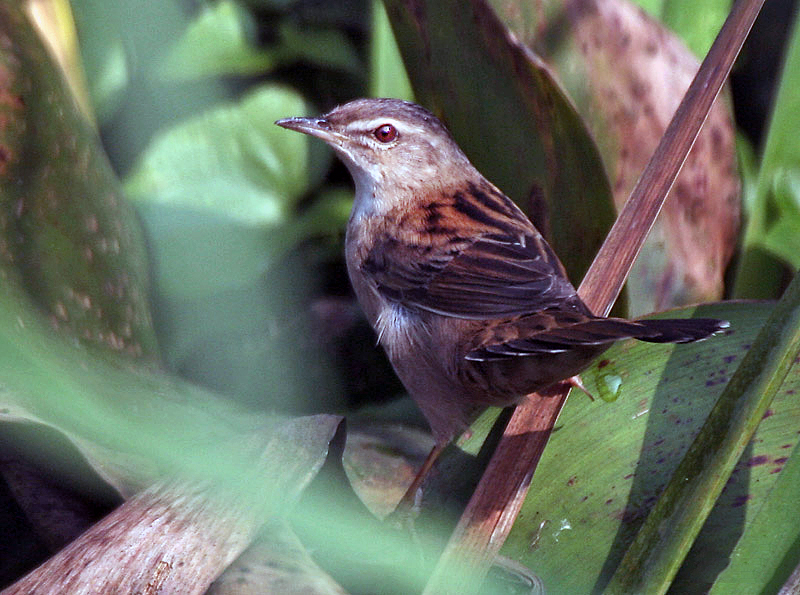
Wikipedia: Pallas's grasshopper-warbler Source: OTHER
Rusty-rumped_Warbler_%28Locustella_certhiola%29_I_IMG_2750.jpg
vagrant, Christmas Island & Ashmore Reef

Wikipedia: Russet bush-warbler Source: OTHER
1200px-Russet_Bush-Warbler_-_Arunachal_Pradesh_-_India_FJ0A8771_%2834262514506%29.jpg
Profile Wikipedia eBird Xeno-Canto

Wikipedia: Lanceolated warbler Source: OTHER
1200px-Locustella_lanceolata_71284996.jpg
Profile Wikipedia eBird Xeno-Canto

Wikipedia: Striated grassbird Source: OTHER
Striated_Grassbird_%28Megalurus_palustris%29_at_Kolkata_I_IMG_2681.jpg
Profile Wikipedia eBird Vogelwarte BirdLife ZH ornitho.ch bird-song.ch Audubon AllAboutBirds Xeno-Canto BirdID NABU

In tree by First, ZH. 2020-05-04 17.33.32 Luppmen
First observed in 🇨🇭 on 2020-04-10.
This bird appears across the great seas in the following continents:
Europe, North America (introduced), Africa, Asia.
Similar to the house sparrow, but with the black cheek patch seen here.
in Fehraltorf there are 5 times as many house sparrows as tree sparrows.
Geography: ![]() Brought from Germany, about 20 of these birds were released in St. Louis in 1870. The population took hold there, and they might have spread except that the House Sparrow, seemingly more aggressive and adaptable, reached the St. Louis area at about the same time. Eurasian Tree Sparrows are still found in parts of Missouri and Illinois, and have reached southeastern Iowa, but they are fairly local in farmland and suburbs. The tougher House Sparrow may keep them out of other areas. [Link]
Brought from Germany, about 20 of these birds were released in St. Louis in 1870. The population took hold there, and they might have spread except that the House Sparrow, seemingly more aggressive and adaptable, reached the St. Louis area at about the same time. Eurasian Tree Sparrows are still found in parts of Missouri and Illinois, and have reached southeastern Iowa, but they are fairly local in farmland and suburbs. The tougher House Sparrow may keep them out of other areas. [Link]
Vocalization: ![]() Most other sounds similar to House Sparrow, and may be difficult to identify. [Link]
Most other sounds similar to House Sparrow, and may be difficult to identify. [Link]
Song: ![]() Chattering sounds are generally harder, and song slightly higher pitched than House Sparrow. [Link]
Chattering sounds are generally harder, and song slightly higher pitched than House Sparrow. [Link]
Calls: ![]() Distinct, high-pitched and explosive contact-call; "che-witt" typically given in flight. Second syllable rising rapidly in pitch. [Link]
Distinct, high-pitched and explosive contact-call; "che-witt" typically given in flight. Second syllable rising rapidly in pitch. [Link]
Physical details: length=14 cm,
wingspan=20-22 cm,
weight=18-29 g
Habitats:
Settlement
Song:
Monotone chirping, rougher than that of the house sparrow. Most 2-7 KHz mit many overtones,
i.e. somewhat higher than the house sparrow.
Song attributes:
Melody: simple rhythmic, slow, Frequency: 2-7 KHz
Call:
Automatically generated from Xeno-Canto recording
♫ XC558751-Feldsperling. Source: XENOCANTO
XC558751-Feldsperling.mp3
(song?)


Wikipedia: Paddyfield pipit Source: OTHER
1200px-Paddyfield_pipit_%28Anthus_rufulus_rufulus%29.jpg
General: ![]() The paddyfield pipit or Oriental pipit[2] (Anthus rufulus) is a small passerine bird in the pipit and wagtail family. It is a resident (non-migratory) breeder in open scrub, grassland and cultivation in southern Asia east to the Philippines. Although among the few breeding pipits in the Asian region, identification becomes difficult in winter when several other species migrate into the region. The taxonomy of the species is complex and has undergone considerable changes.
[more]
The paddyfield pipit or Oriental pipit[2] (Anthus rufulus) is a small passerine bird in the pipit and wagtail family. It is a resident (non-migratory) breeder in open scrub, grassland and cultivation in southern Asia east to the Philippines. Although among the few breeding pipits in the Asian region, identification becomes difficult in winter when several other species migrate into the region. The taxonomy of the species is complex and has undergone considerable changes.
[more]
Schafstelze. 2024-02-02 16.00.54 Laos
First observed in Mallorca on 2022-04-12.
Yellow, gray head, white mask.
Song: ![]() Song primitive and less striking. Beware differences in calls and songs between different subspecies. [Link]
Song primitive and less striking. Beware differences in calls and songs between different subspecies. [Link]
Calls: ![]() Contact call characteristic and widely used; a sharp, drawn out "pseeeoo" with an accented ending falling in pitch. A variable phrase with two or three notes resembling the contact call in timbre. [Link]
Contact call characteristic and widely used; a sharp, drawn out "pseeeoo" with an accented ending falling in pitch. A variable phrase with two or three notes resembling the contact call in timbre. [Link]
Physical details: length=17 cm,
wingspan=23-27 cm,
weight=14-21 g
Habitats:
Wetland
Looks similar to:
Tawny pipit.
Song:
Just a few notes, call seems to be common but song rare. Very short chirp of ~ 1 sec, long pause of 3 secs. At Wauwilermoos it seemed to be 'Twee tweetwee (higher note:) twee!'
Song attributes:
Melody: stereotype melodic, slow, Frequency: 3-9 KHz
♫ Source: XENOCANTO
XC721189 - Western Yellow Wagtail - Motacilla flava cinereocapilla - song.mp3
(song)

Call:
General: Single note repeated
Song: ![]() sperling ähnliches lh lh lh. Dachte die wären melodisch?? Nein. BL chirpy ml ml [Link]
sperling ähnliches lh lh lh. Dachte die wären melodisch?? Nein. BL chirpy ml ml [Link]
♫ Source: XENOCANTO
XC653784 - Western Yellow Wagtail - Motacilla flava flavissima - call.mp3
(call)

Call attributes:
Call melody: one note, slow, Frequency: 3-9 KHz, Special sounds: swoop.
Gebirgsstelze am Wissbach. 2024-04-27 09.16.16 Schachen, Tobel Wissbach till Degersheim
First observed in 🇨🇭 on 2022-02-05.
Yellow breast and butt end, white belly, light grey head and back, white eye stripe and stripe above black beard, dark wings with 3 white V's, long tail.
Song: ![]() Song simple but variable. Sometimes with more elaborate song-flight like White Wagtail. [Link]
Song simple but variable. Sometimes with more elaborate song-flight like White Wagtail. [Link]
Calls: ![]() Contact call short, metallic and with a clipped ending. Often disyllabic, "tzeet-tzeet", with each syllable more separated than in White Wagtail, and timbre more "dirty". Often starts with the contact call, followed by short melodic phrases. [Link]
Contact call short, metallic and with a clipped ending. Often disyllabic, "tzeet-tzeet", with each syllable more separated than in White Wagtail, and timbre more "dirty". Often starts with the contact call, followed by short melodic phrases. [Link]
Physical details: length=18-19 cm,
wingspan=25-27 cm,
weight=14-22 g
Habitats:
Wetland
Song:
![]() BirdID says Song simple but variable. I hear trills up to 2 seconds long and chirps. Another description says a series of calls, not very melodic. I noted zwitx3, sometimes hhhhhll. [Link]
BirdID says Song simple but variable. I hear trills up to 2 seconds long and chirps. Another description says a series of calls, not very melodic. I noted zwitx3, sometimes hhhhhll. [Link]
Song attributes:
Melody: stereotype melodic, fast, Frequency: high (3-9 KHz) Special sounds: trill
♫ Source: XENOCANTO
XC767550 - Grey Wagtail - Motacilla cinerea - song with trills and a cheek-cheek.mp3
(song)

♫ Source: XENOCANTO
XC757193 - Grey Wagtail - Motacilla cinerea - one-note song recorded in Germany.mp3
Germany (song)

Profile Wikipedia eBird Audubon AllAboutBirds Xeno-Canto NABU
Scaly breasted munia, Vientiane. 2024-02-18 06.54.12 Laos
First observed in Laos on 2024-02-18.
This bird appears across the great seas in the following continents:
Europe, North America, Asia, Australia.
introduced, mainland; vagrant, Ashmore Reef
Song:
Automatically generated from Xeno-Canto recording
Song attributes:
Frequency:
♫ XC797137 - Scaly-breasted Munia - Lonchura punctulata topela - song, Pha Chang Park, Wiang Chai District, Chiang Rai, Thailand. Source: XENOCANTO
XC797137 - Scaly-breasted Munia - Lonchura punctulata topela - song, Pha Chang Park, Wiang Chai District, Chiang Rai, Thailand.mp3
Thailand (song)

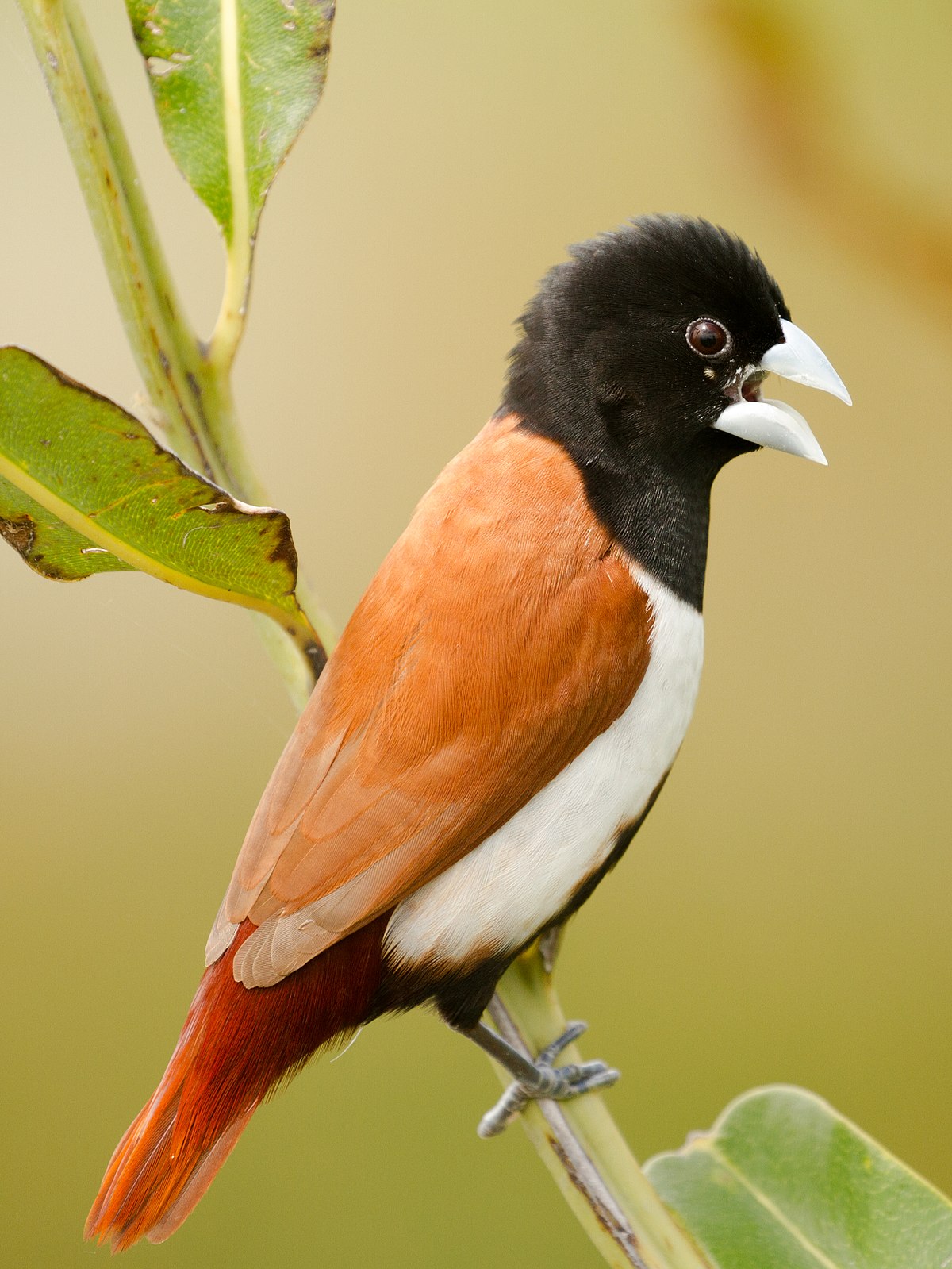
Wikipedia: Tricolored munia Source: OTHER
1200px-Tricoloured_munia_%28cropped%29.jpg
This bird appears across the great seas in the following continents:
Europe, North America, South America, Asia.
General: ![]() The tricoloured munia (Lonchura malacca) is an estrildid finch, native to Bangladesh,[2] India, Sri Lanka, Pakistan, and southern China. The species has also introduced to the Caribbean, in Trinidad, Jamaica, Hispaniola, Puerto Rico, Cuba, and Venezuela. This species, like the chestnut munia has been known as the black-headed munia. Immature birds have pale brown upperparts, lack the dark head found in adults, and have uniform buff underparts that can be confused with immatures of other munias such as the scaly-breasted munia.
[more]
The tricoloured munia (Lonchura malacca) is an estrildid finch, native to Bangladesh,[2] India, Sri Lanka, Pakistan, and southern China. The species has also introduced to the Caribbean, in Trinidad, Jamaica, Hispaniola, Puerto Rico, Cuba, and Venezuela. This species, like the chestnut munia has been known as the black-headed munia. Immature birds have pale brown upperparts, lack the dark head found in adults, and have uniform buff underparts that can be confused with immatures of other munias such as the scaly-breasted munia.
[more]
This bird appears across the great seas in the following continents:
North America, Africa, Asia.
Profile Wikipedia eBird Xeno-Canto

Wikipedia: Javan munia Source: OTHER
1200px-Javan_Munia_0A2A7009.jpg
Endemic (country/region)
Profile Wikipedia eBird Xeno-Canto
Wikipedia: Black-faced munia Source: OTHER
Molucco.JPG
Endemic (country/region)
Profile Wikipedia eBird Xeno-Canto

Wikipedia: White-headed munia Source: OTHER
White-headed_Munia.jpg
Profile Wikipedia eBird Xeno-Canto

Wikipedia: Pin-tailed parrotfinch Source: OTHER
1200px-Pin-tailed_Parrotfinch%2C_Kaeng_Krachan_1.jpg

Wikipedia: Red avadavat Source: OTHER
A_pair_of_Red_avadavat_%28Amandava_amandava%29_Photograph_by_Shantanu_Kuveskar.jpg
This bird appears across the great seas in the following continents:
Europe, North America, Africa, Asia.
General: ![]() The red avadavat (Amandava amandava), red munia or strawberry finch, is a sparrow-sized bird of the family Estrildidae. It is found in the open fields and grasslands of tropical Asia and is popular as a cage bird due to the colourful plumage of the males in their breeding season. It breeds in the Indian Subcontinent in the monsoon season. The species name of amandava and the common name of avadavat are derived from the city of Ahmedabad in Gujarat, India, from where these birds were exported into the pet trade in former times.[2][3]
[more]
The red avadavat (Amandava amandava), red munia or strawberry finch, is a sparrow-sized bird of the family Estrildidae. It is found in the open fields and grasslands of tropical Asia and is popular as a cage bird due to the colourful plumage of the males in their breeding season. It breeds in the Indian Subcontinent in the monsoon season. The species name of amandava and the common name of avadavat are derived from the city of Ahmedabad in Gujarat, India, from where these birds were exported into the pet trade in former times.[2][3]
[more]
Profile Wikipedia eBird Xeno-Canto

Wikipedia: Javan sunbird Source: OTHER
Scarlet_%28_Javan_%29_Sunbird_-_Carita_MG_3470_%2829363983070%29.jpg
I'm going for a brown-throated sunbird - they live in Laos and the females are yellow with gray,brown - only the red eye isn't recognizable here. 2024-02-17 07.34.12 Laos
First observed in Laos on 2024-02-17.
Song:
Automatically generated from Xeno-Canto recording
Song attributes:
Frequency:
♫ XC894450 - Brown-throated Sunbird - Anthreptes malacensis - song, Krung Thep Maha Nakhon, Thailand. Source: XENOCANTO
XC894450 - Brown-throated Sunbird - Anthreptes malacensis - song, Krung Thep Maha Nakhon, Thailand.mp3
Thailand (song)


Wikipedia: Little spiderhunter Source: OTHER
1200px-SpiderhunterSabah.jpg
Profile Wikipedia eBird Xeno-Canto

Wikipedia: Grey-breasted spiderhunter Source: OTHER
1200px-Arachnothera_modesta%2C_Grey-breasted_spiderhunter_-_Khao_Sok_National_Park_%2821324789981%29.jpg
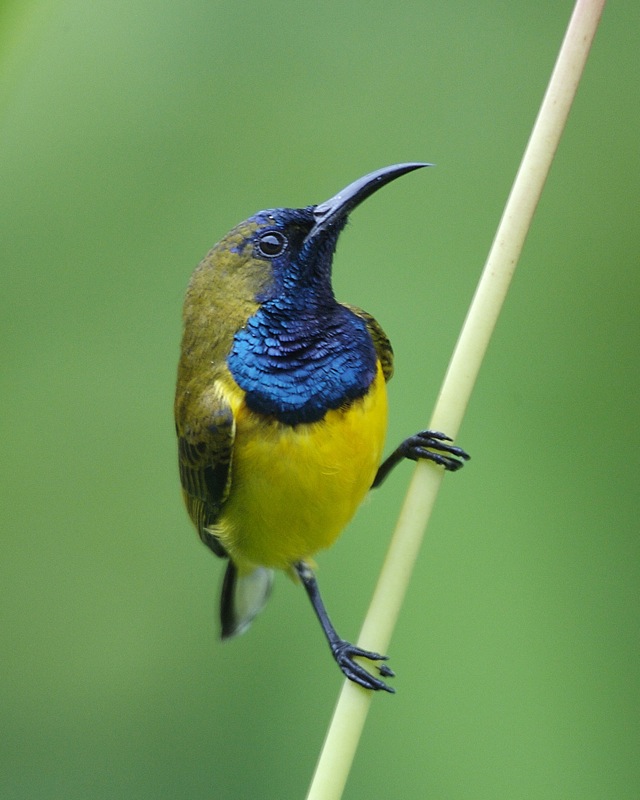
Wikipedia: Olive-backed sunbird Source: OTHER
Cinnyris_jugularis_%28male%29_-Singapore_Botanic_Gardens-8.jpg
General: ![]() The olive-backed sunbird (Cinnyris jugularis), also known as the yellow-bellied sunbird, is a species of sunbird found from Southern Asia to Australia.
[more]
The olive-backed sunbird (Cinnyris jugularis), also known as the yellow-bellied sunbird, is a species of sunbird found from Southern Asia to Australia.
[more]
Profile Wikipedia eBird Xeno-Canto

Wikipedia: Yellow-vented flowerpecker Source: OTHER
Yellow-vented_Flowerpecker.jpg
Profile Wikipedia eBird Xeno-Canto

Wikipedia: Orange-bellied flowerpecker Source: OTHER
1200px-0A2A5774_Orange-bellied_Flowerpecker.jpg
Profile Wikipedia eBird Xeno-Canto

Wikipedia: Red-chested flowerpecker Source: OTHER
1200px-Naturalis_Biodiversity_Center_-_RMNH.AVES.132196_1_-_Dicaeum_maugei_salvadorii_Meyer%2C_1884_-_Dicaeidae_-_bird_skin_specimen.jpeg
Endemic (country/region)
Profile Wikipedia eBird Xeno-Canto

Wikipedia: Blood-breasted flowerpecker Source: OTHER
1200px-Blood-breasted_Flowerpecker-_male_%28Dicaeum_sanguinolentum%29.jpg
Endemic (country/region)
Profile Wikipedia eBird Xeno-Canto

Wikipedia: Scarlet-headed flowerpecker Source: OTHER
Scarlet-headed_Flowerpecker_%28Dicaeum_trochileum_trochileum%29.jpg
Endemic (country/region)
Profile Wikipedia eBird Xeno-Canto

Wikipedia: Streaked weaver Source: OTHER
1200px-Ploceus_manyar.JPG
Profile Wikipedia eBird Xeno-Canto
Baya weaver at Phnom Krom, bird outing near Siem Reap. 2024-03-03 09.06.22 Cambodia
First observed in Cambodia on 2024-03-03.
Call:
Automatically generated from Xeno-Canto recording
♫ XC825824 - Baya Weaver - Ploceus philippinus angelorum - call flock of 75-100 - Chiang Rai, Thailand. Source: XENOCANTO
XC825824 - Baya Weaver - Ploceus philippinus angelorum - call flock of 75-100 - Chiang Rai, Thailand.mp3
Thailand (call)

Call attributes:
Frequency: ,
Profile Wikipedia eBird Xeno-Canto
Asian golden weaver, I believe, as guide Mina noted we'd seen them at Phnom Krom, Cambodia, and it has a blacker more triangular beak. 2024-03-03 09.09.14 Cambodia
First observed in Cambodia on 2024-03-03.
Song:
Automatically generated from Xeno-Canto recording
Song attributes:
Frequency:
♫ XC156374 - Asian Golden Weaver - Ploceus hypoxanthus chryseus - song - Cát Tiên National Park, Vietnam. Source: XENOCANTO
XC156374 - Asian Golden Weaver - Ploceus hypoxanthus chryseus - song - Cát Tiên National Park, Vietnam.mp3
(song)

Great tit / Kohlmeise (Parus major)
Profile Wikipedia eBird Vogelwarte BirdLife ZH ornitho.ch bird-song.ch Xeno-Canto BirdID NABU

Kohlmeise auf ast. 2020-04-13 10.29.27 Luppmen
First observed in 🇨🇭 on 2019-04-22.
Most common year-round bird at our house.
Often seen at the suet balls we hang out, or in fall at our sunflowers.
It's said that they will sound a false alarm at a feeding source, knowing that other birds listen for
their alarms and flee!
There are many entertaining stories in the Norwegian book 'The Secret Life of Small Birds'.
It's a favorite food of the Eurasian sparrowhawk, though I'm sure cats are the greater danger.
They flit from tree to tree in small scattered groups,
and often avail themselves of the seeds on our sunflowers. They can be heard on the Luppman
in Fehraltorf at any time of year and day.
Etymology: ![]() (Conrad) Gessner also notes that the coal tit was known as Kohlmeiß in German – the literal equivalent of its English name, though in its modern orthography Kohlmeise it refers to the great tit (Parus major). That bird was in Gessner's day usually called Spiegelmeiß ("multicoloured tit"[5]), Brandtmeiß ("burnt tit") or grosse Meiß ("great tit") in German. [Link]
(Conrad) Gessner also notes that the coal tit was known as Kohlmeiß in German – the literal equivalent of its English name, though in its modern orthography Kohlmeise it refers to the great tit (Parus major). That bird was in Gessner's day usually called Spiegelmeiß ("multicoloured tit"[5]), Brandtmeiß ("burnt tit") or grosse Meiß ("great tit") in German. [Link]
Behavior: ![]() 'Studies in Europe on tits showed a 2-way doubly asymmetric interaction: the great tit (Parus major) is dominant over the blue tit (Cyanistes caeruleus)
during the nonbreeding season (Haftorn 1993), and the smaller blue tit is competitively dominant during the breeding season (Dhondt 1989).'
Another cited work notes that the coal tit is considered the bottom of the hierarchy in Scandinavia. [Interspecific dominance relationships and hybridization between black-capped and mountain chickadees | Behavioral Ecology]
'Studies in Europe on tits showed a 2-way doubly asymmetric interaction: the great tit (Parus major) is dominant over the blue tit (Cyanistes caeruleus)
during the nonbreeding season (Haftorn 1993), and the smaller blue tit is competitively dominant during the breeding season (Dhondt 1989).'
Another cited work notes that the coal tit is considered the bottom of the hierarchy in Scandinavia. [Interspecific dominance relationships and hybridization between black-capped and mountain chickadees | Behavioral Ecology]
![]() Like all tits it is a cavity nester, usually nesting in a hole in a tree. [Link]
Like all tits it is a cavity nester, usually nesting in a hole in a tree. [Link]
![]() Sie lernen voneinander und sogar von den verwandten Blaumeisen und finden neue Nahrungsquellen. Aber sie merken es sich auch, wenn sie sehen das andere Vögel etwas fressen, was ihnen nicht zukömmlich ist. [Schlaue Kohlmeisen gucken voneinander ab]
Sie lernen voneinander und sogar von den verwandten Blaumeisen und finden neue Nahrungsquellen. Aber sie merken es sich auch, wenn sie sehen das andere Vögel etwas fressen, was ihnen nicht zukömmlich ist. [Schlaue Kohlmeisen gucken voneinander ab]
Song: Nabu: Die erste Vogelart, die wir im Jahr hören, ist meistens die Kohlmeise mit ihrem typischen Läuten: "Zip Zäh" oder "Zip zip Zäh". [NABU Experte Lars Lachmann bei Deutschlandfunk Nova]
![]() Song highly variable, but usually consisting of two to three notes repeated in a motif. Same birds have many different motifs but generally repeat them many times before switching. Identified by its timbre and often metallic resonant quality, more than by actual phrasing (which is very variable). Often includes buzzing sounds in song. [Link]
Song highly variable, but usually consisting of two to three notes repeated in a motif. Same birds have many different motifs but generally repeat them many times before switching. Identified by its timbre and often metallic resonant quality, more than by actual phrasing (which is very variable). Often includes buzzing sounds in song. [Link]
Calls: ![]() Generally more full-bodied and resonant calls than blue tit, and not so high-pitched. Characteristic Chaffinch-like "tink tink tink" often uttered by male. [Link]
Generally more full-bodied and resonant calls than blue tit, and not so high-pitched. Characteristic Chaffinch-like "tink tink tink" often uttered by male. [Link]
Physical details: length=14 cm,
wingspan=22-25 cm,
weight=14-22 g
Habitats:
Settlement
Song:
Said to have a repertoire as a species of 50 or more different songs, albeit simple ones, up to 10 per individual.
Females prefer a male with a large repertoire. One two-note song sounds like a squeaky bed.
Song attributes:
Melody: simple rhythmic, slow, Frequency: medium (1-5 KHz) Singing season: 01-01 - 06-30 Dawn chorus start, 30 minutes before dawn.
Call:
Chuck-a-chuck-a-chuck, sometimes preceded by higher 'wheat!'
Call from Xeno-Canto
♫ Call from Xeno-Canto Illustrates higher 'wheat' before the 'chuck-a-chuck' Source: XENOCANTO
XC586723 great tit call wheat chuck-a-chuck.mp3
(call)
 Call from Xeno-Canto
Call from Xeno-Canto
♫ Call from Xeno-Canto Source: XENOCANTO
XC592152 great tit call.mp3
(call)

Call attributes:
Call melody: simple rhythmic, fast, Frequency: 1-7 KHz,
Banded pitta (alternate) / Javabindenpitta (Pitta guajana)
Elegant pitta / Schmuckpitta (Pitta elegans)

Wikipedia: Elegant pitta Source: OTHER
1200px-Elegant_Pitta_4.jpg
Endemic (country/region)
Purple-backed starling (alternate) / Sturnus sturninus (alternate) (Sturnus sturninus)
Chestnut-cheeked starling (alternate) (Sturnus philippensis)
Black-winged starling (Sturnus melanopterus)
Profile Wikipedia eBird Xeno-Canto

Wikipedia: Black-winged starling Source: OTHER
1200px-0A2A9314.jpg
Endemic (country/region)
Hill myna / Bergbeo (Gracula religiosa)
Bali myna / Balistar (Leucopsar rothschildi)
Profile Wikipedia eBird Xeno-Canto

Wikipedia: Bali myna Source: OTHER
1200px-Bali_Myna_0A2A9443.jpg
Endemic
Finch-billed myna (Scissirostrum dubium)
Profile Wikipedia eBird Xeno-Canto

Wikipedia: Finch-billed myna Source: OTHER
Finch-billed_Myna.jpg
Endemic (country/region)
Common myna (Acridotheres tristis)
First common myna seen on trip to SE Asia, in Wat Pho, Bangkok. 2024-01-19 17.00.32 Thailand
First observed in Thailand on 2024-01-19.
This bird appears across the great seas in the following continents:
North America, Africa, Asia.
General: ![]() The common myna or Indian myna (Acridotheres tristis), sometimes spelled mynah,[2] is a member of the family Sturnidae (starlings and mynas) native to Asia. An omnivorous open woodland bird with a strong territorial instinct, the common myna has adapted extremely well to urban environments.
[more]
The common myna or Indian myna (Acridotheres tristis), sometimes spelled mynah,[2] is a member of the family Sturnidae (starlings and mynas) native to Asia. An omnivorous open woodland bird with a strong territorial instinct, the common myna has adapted extremely well to urban environments.
[more]
Call:
Automatically generated from Xeno-Canto recording
♫ XC729094 - Common Myna - Acridotheres tristis tristis. Source: XENOCANTO
XC729094 - Common Myna - Acridotheres tristis tristis.mp3
(song?)

Bank myna / Ufermaina (Acridotheres ginginianus)

Wikipedia: Bank myna Source: OTHER
1200px-Bank_myna_%28Acridotheres_ginginianus%29.jpg
Introduced species
Short-tailed starling (Aplonis minor)
Profile Wikipedia eBird Xeno-Canto

Wikipedia: Short-tailed starling Source: OTHER
Short-tailed_Starling_-_Mindanao_-_Philippines_H8O1003_%2822801366195%29.jpg
Asian glossy starling (Aplonis panayensis)
Profile Wikipedia eBird Xeno-Canto

Wikipedia: Asian glossy starling Source: OTHER
1200px-Asian_glossy_starling.jpg
Asian pied starling (Gracupica contra)

Wikipedia: Asian pied starling Source: OTHER
1200px-Asian_pied_starlings_%28Gracupica_contra%29.jpg
Eye-browed thrush (Turdus obscurus)

Wikipedia: Eye-browed thrush Source: OTHER
Eyebrowed_Thrush.jpg
This bird appears across the great seas in the following continents:
North America, Asia, Australia.
vagrant
Sunda thrush (Zoothera andromedae)
Profile Wikipedia eBird Xeno-Canto

Wikipedia: Sunda thrush Source: OTHER
Zoothera_andromedae.jpg
Scaly thrush / Himalajaerddrossel (Zoothera dauma)

Wikipedia: Scaly thrush Source: OTHER
1200px-Scaly_Thrush_0A2A8657.jpg
Siberian thrush / Schieferdrossel (Geokichla sibirica)

Wikipedia: Siberian thrush Source: OTHER
1200px-Geokichla_sibirica.jpg
vagrant, Ashmore Reef
Orange-headed thrush / Orangeköpfige Drossel (Geokichla citrina)

Wikipedia: Orange-headed thrush Source: OTHER
1200px-Zoothera_citrina_-_Khao_Yai.jpg
Mugimaki flycatcher / Mugimakischnäpper (Ficedula mugimaki)
Profile Wikipedia eBird Xeno-Canto

Wikipedia: Mugimaki flycatcher Source: OTHER
1200px-Ficedula_mugimaki_-_Khao_Yai.jpg
vagrant, Cocos (Keeling) Islands
Narcissus flycatcher / Narzissenschnäpper (Ficedula narcissina)
Profile Wikipedia eBird Xeno-Canto

Wikipedia: Narcissus flycatcher Source: OTHER
1200px-Narcissus_Flycatcher-cropped.jpg
vagrant, Ashmore Reef, Barrow Island, WA & Cocos (Keeling) Islands
Yellow-rumped flycatcher / Korea-Goldschnäpper (Ficedula zanthopygia)
Profile Wikipedia eBird Xeno-Canto

Wikipedia: Yellow-rumped flycatcher Source: OTHER
1200px-%C4%90%E1%BB%9Bp_ru%E1%BB%93i_v%C3%A0ng_%28cropped%29.jpg
Snowy-browed flycatcher (Ficedula hyperythra)
Profile Wikipedia eBird Xeno-Canto

Wikipedia: Snowy-browed flycatcher Source: OTHER
1200px-Snowy-browed_Flycatcher_0A2A2564.jpg
Little pied flycatcher (Ficedula westermanni)
Profile Wikipedia eBird Xeno-Canto

Wikipedia: Little pied flycatcher Source: OTHER
1200px-Little_Pied_Flycatcher_0A2A5713.jpg
Asian brown flycatcher (alternate) (Muscicapa dauurica)
Ferruginous flycatcher (Muscicapa ferruginea)
Profile Wikipedia eBird Xeno-Canto

Wikipedia: Ferruginous flycatcher Source: OTHER
1200px-Muscicapa_ferruginea_-side-8_%282%29.jpg
Pied bushchat (Saxicola caprata)

Wikipedia: Pied bushchat Source: OTHER
1200px-Pied_bush_chat_%28Saxicola_caprata%29male_from_nilgiris_DSC_1123.jpg
White-rumped shama (Copsychus malabaricus)
Profile Wikipedia eBird Audubon AllAboutBirds Xeno-Canto
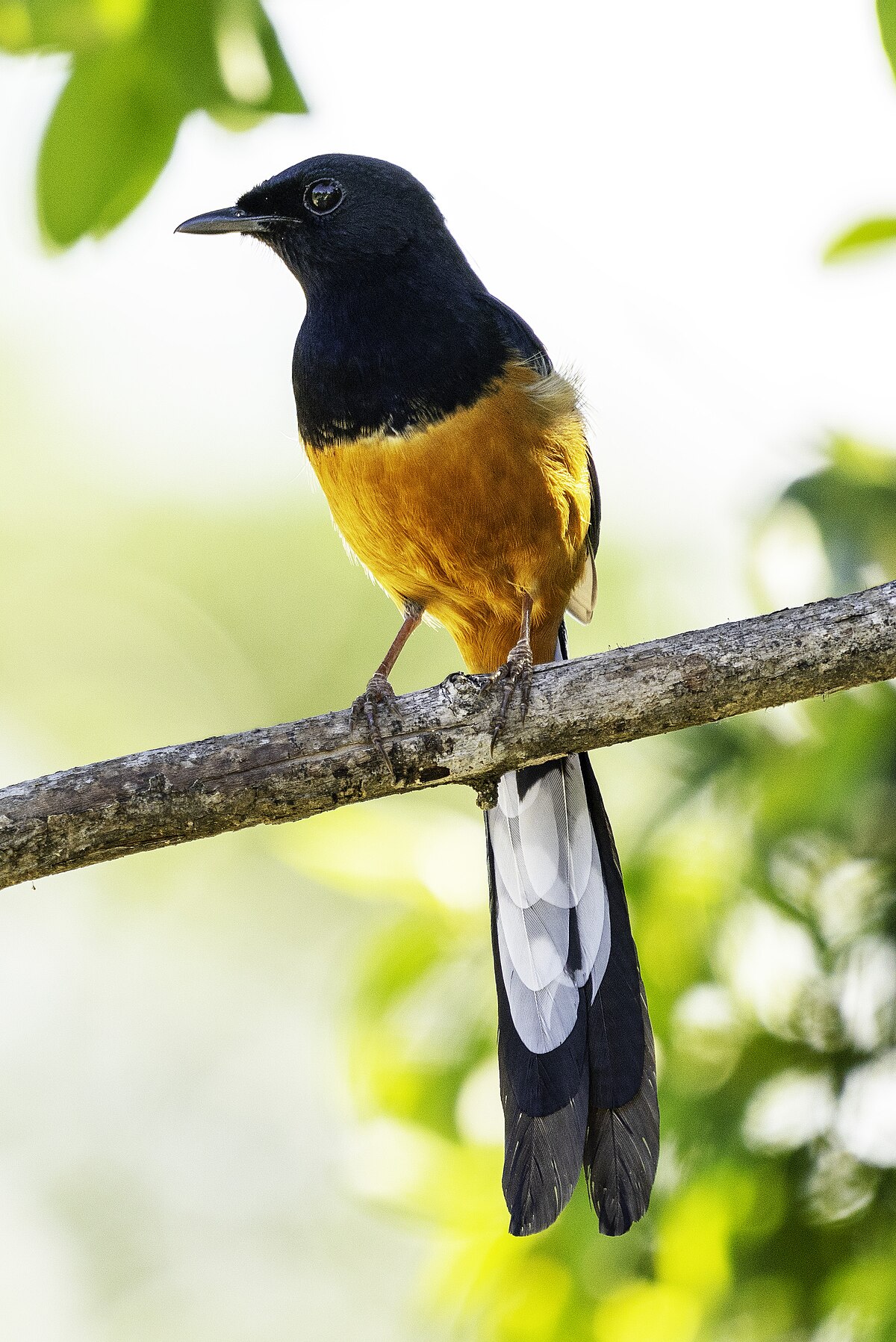
Wikipedia: White-rumped shama Source: OTHER
1200px-White-rumped-shama-yala-sri-lanka-casey-klebba.jpg
This bird appears across the great seas in the following continents:
North America, Asia.
General: ![]() The white-rumped shama (Copsychus malabaricus) is a small passerine bird of the family Muscicapidae. Native to densely vegetated habitats in the Indian subcontinent and Southeast Asia, its popularity as a cage-bird and songster has led to it being introduced elsewhere.
[more]
The white-rumped shama (Copsychus malabaricus) is a small passerine bird of the family Muscicapidae. Native to densely vegetated habitats in the Indian subcontinent and Southeast Asia, its popularity as a cage-bird and songster has led to it being introduced elsewhere.
[more]
Oriental magpie-robin / Dajalschama (Copsychus saularis)
Oriental magpie-robin near Jim Thompson's house in Bangkok. 2024-01-18 15.34.16 Thailand
First observed in Thailand on 2024-01-18.
Song:
Automatically generated from Xeno-Canto recording
Song attributes:
Frequency:
♫ Melodic appearance of Oriental Magpie Robin Male 🕊️🌄#birds #viral #morning #song. Source: OTHER
Melodic appearance of Oriental Magpie Robin Male 🕊️🌄#birds #viral #morning #song.mp3
(song)
Mangrove blue flycatcher (Cyornis rufigastra)

Wikipedia: Mangrove blue flycatcher Source: OTHER
Mangrove_Blue_Flycatcher_%28Cyornis_rufigastra%29%2C_Rakata%2C_Krakatau_%281%29.jpg
Fulvous-chested jungle flycatcher (Rhinomyias olivacea)
Profile Wikipedia eBird Xeno-Canto

Wikipedia: Fulvous-chested jungle flycatcher Source: OTHER
1200px-Fulvous-chested_Jungle_Flycatcher_0A2A5202.jpg
White-crowned forktail / Weißscheitel-Scherenschwanz (Enicurus leschenaulti)
Profile Wikipedia eBird Xeno-Canto

Wikipedia: White-crowned forktail Source: OTHER
1200px-Enicurus_leschenaulti.jpg
Lesser shortwing (Brachypteryx leucophrys)
Profile Wikipedia eBird Xeno-Canto

Wikipedia: Lesser shortwing Source: OTHER
1200px-Lesser_Shortwing_0A2A7864.jpg
Sunda whistling thrush (Myophonus glaucinus)
Profile Wikipedia eBird Xeno-Canto
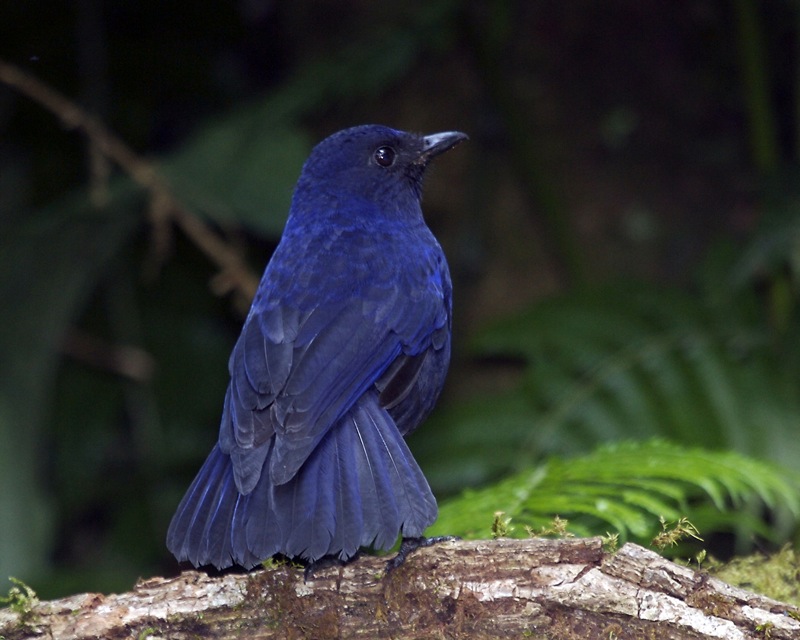
Wikipedia: Sunda whistling thrush Source: OTHER
Myophonus_glaucinus.jpg
Velvet-fronted nuthatch / Samtstirnkleiber (Sitta frontalis)
Profile Wikipedia eBird Xeno-Canto

Wikipedia: Velvet-fronted nuthatch Source: OTHER
1200px-Velvet-fronted_Nuthatch_0A2A4674.jpg
Profile Wikipedia eBird Xeno-Canto

Wikipedia: Brown shrike Source: OTHER
1200px-Lanius_cristatus_-_Surin.jpg
vagrant, Christmas Island & Ashmore Reef
Profile Wikipedia eBird Xeno-Canto

Wikipedia: Long-tailed shrike Source: OTHER
1200px-Long-tailed_Shrilke_0A2A3080.jpg
Profile Wikipedia eBird Xeno-Canto
Wikipedia: Slender-billed crow Source: OTHER
Corvus_enca_celebensis.JPG
Large billed crow, Wat Pho, Bangkok. 2024-01-19 16.45.02 Thailand
First observed in Thailand on 2024-01-19.
Call:
Automatically generated from Xeno-Canto recording
♫ XC854761 - Large-billed Crow - Corvus macrorhynchos. Source: XENOCANTO
XC854761 - Large-billed Crow - Corvus macrorhynchos.mp3
(song?)

Profile Wikipedia eBird Xeno-Canto
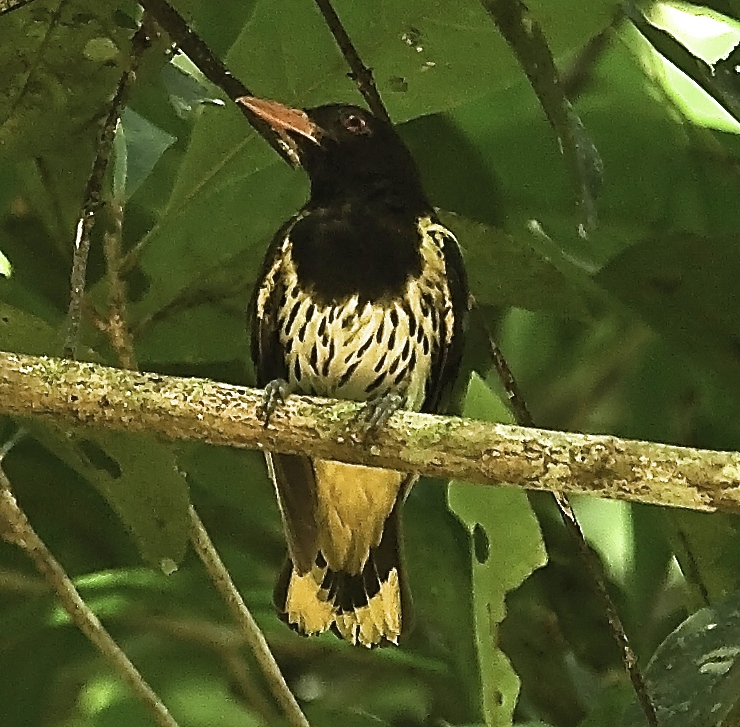
Wikipedia: Dark-throated oriole Source: OTHER
Dark-throated_Oriole.jpg
Profile Wikipedia eBird Xeno-Canto
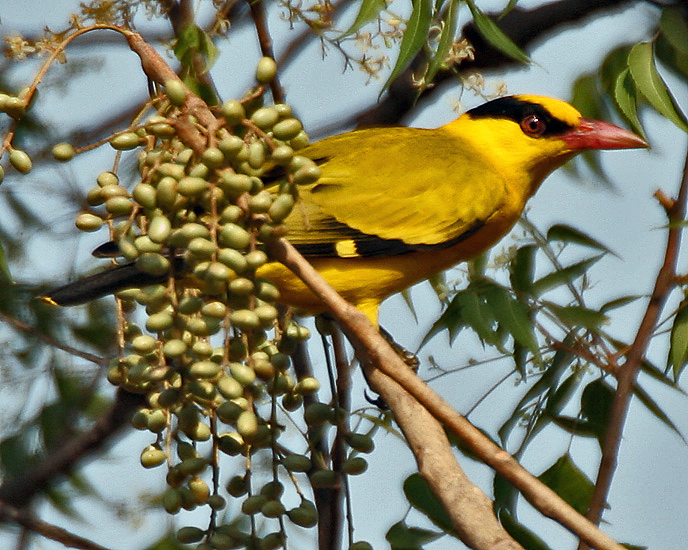
Wikipedia: Black-naped oriole Source: OTHER
Black-naped_Oriole_eyeing_on_Lannea_coromandelica_fruits_W_IMG_7449.jpg

Wikipedia: White-breasted woodswallow Source: OTHER
1200px-Artamus_leucorynchus_-_Wonga.jpg
General: ![]() The white-breasted woodswallow (Artamus leucorynchus) is a medium sized passerine bird which breeds from the Andaman Islands east through Indonesia and northern Australia.[1] The name "woodswallow" is a misnomer as they are not closely related to true swallows. Instead, they belong to the family Artamidae, which also includes butcherbirds, currawongs and the Australian magpie.
[more]
The white-breasted woodswallow (Artamus leucorynchus) is a medium sized passerine bird which breeds from the Andaman Islands east through Indonesia and northern Australia.[1] The name "woodswallow" is a misnomer as they are not closely related to true swallows. Instead, they belong to the family Artamidae, which also includes butcherbirds, currawongs and the Australian magpie.
[more]
Profile Wikipedia eBird Xeno-Canto

Wikipedia: Racket-tailed treepie Source: OTHER
1200px-Crypsirina_temia.jpg
Profile Wikipedia eBird Audubon AllAboutBirds Xeno-Canto
Black drongo, Phnom Krom. 2024-03-03 06.28.04 Cambodia
First observed in Laos on 2024-02-25.
This bird appears across the great seas in the following continents:
North America, Asia.
General: ![]() The black drongo (Dicrurus macrocercus) is a small Asian passerine bird of the drongo family Dicruridae. It is a common resident breeder in much of tropical southern Asia from southwest Iran through India, Bangladesh and Sri Lanka east to southern China and Indonesia and accidental visitor of Japan. It is an all black bird with a distinctive forked tail and measures 28 cm (11 in) in length. It feeds on insects, and is common in open agricultural areas and light forest throughout its range, perching conspicuously on a bare perch or along power or telephone lines. The species is known for its aggressive behaviour towards much larger birds, such as crows, never hesitating to dive-bomb any bird of prey that invades its territory. This behaviour earns it the informal name of king crow. Smaller birds often nest in the well-guarded vicinity of a nesting black drongo. Previously grouped along with the African fork-tailed drongo (Dicrurus adsimilis), the Asian forms are now treated as a separate species with several distinct populations.
[more]
The black drongo (Dicrurus macrocercus) is a small Asian passerine bird of the drongo family Dicruridae. It is a common resident breeder in much of tropical southern Asia from southwest Iran through India, Bangladesh and Sri Lanka east to southern China and Indonesia and accidental visitor of Japan. It is an all black bird with a distinctive forked tail and measures 28 cm (11 in) in length. It feeds on insects, and is common in open agricultural areas and light forest throughout its range, perching conspicuously on a bare perch or along power or telephone lines. The species is known for its aggressive behaviour towards much larger birds, such as crows, never hesitating to dive-bomb any bird of prey that invades its territory. This behaviour earns it the informal name of king crow. Smaller birds often nest in the well-guarded vicinity of a nesting black drongo. Previously grouped along with the African fork-tailed drongo (Dicrurus adsimilis), the Asian forms are now treated as a separate species with several distinct populations.
[more]
Song:
Automatically generated from Xeno-Canto recording
Song attributes:
Frequency:
♫ XC814830 - Black Drongo - Dicrurus macrocercus cathoecus - song, Hong Kong, China. Source: XENOCANTO
XC814830 - Black Drongo - Dicrurus macrocercus cathoecus - song, Hong Kong, China.mp3
(song)

Profile Wikipedia eBird Xeno-Canto

Wikipedia: Ashy drongo Source: OTHER
1200px-0A2A8011_Ashy_Drongo.jpg
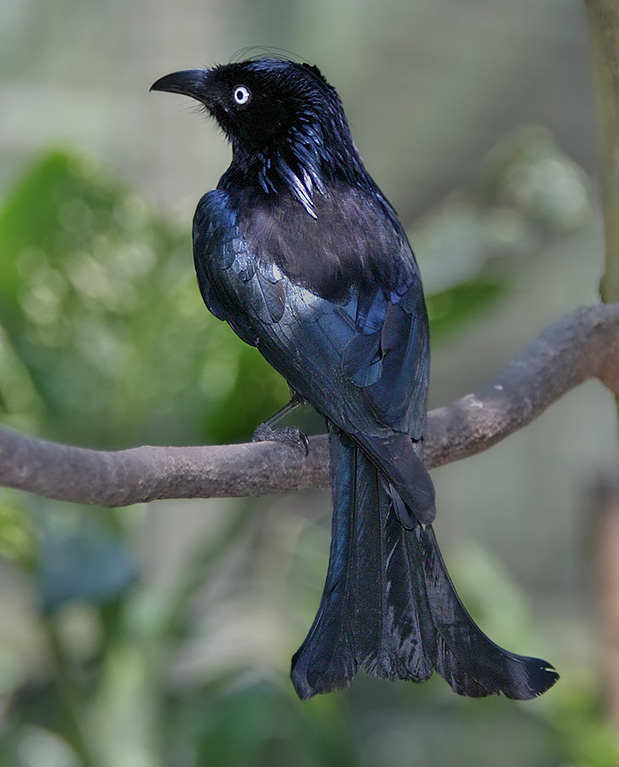
Wikipedia: Hair-crested drongo Source: OTHER
Dicrurus_hottentottus-20030823.jpg
Profile Wikipedia eBird Xeno-Canto

Wikipedia: Greater racket-tailed drongo Source: OTHER
1200px-Greater_racket-tailed_drongo_%40_Kanjirappally_01.jpg
Profile Wikipedia eBird Xeno-Canto

Wikipedia: Golden whistler Source: OTHER
1200px-Pachycephala_pectoralis_youngi_2.jpg
General: ![]() The Australian golden whistler (Pachycephala pectoralis) or golden whistler, is a species of bird found in forest, woodland, mallee, mangrove and scrub in Australia (except the interior and most of the north)[2] Most populations are resident, but some in south-eastern Australia migrate north during the winter. Its taxonomy is highly complex and remains a matter of dispute, with some authorities including as many as 59 subspecies of the golden whistler (one of the highest numbers of subspecies in any bird),[3] while others treat several of these as separate species.
[more]
The Australian golden whistler (Pachycephala pectoralis) or golden whistler, is a species of bird found in forest, woodland, mallee, mangrove and scrub in Australia (except the interior and most of the north)[2] Most populations are resident, but some in south-eastern Australia migrate north during the winter. Its taxonomy is highly complex and remains a matter of dispute, with some authorities including as many as 59 subspecies of the golden whistler (one of the highest numbers of subspecies in any bird),[3] while others treat several of these as separate species.
[more]
Profile Wikipedia eBird Xeno-Canto
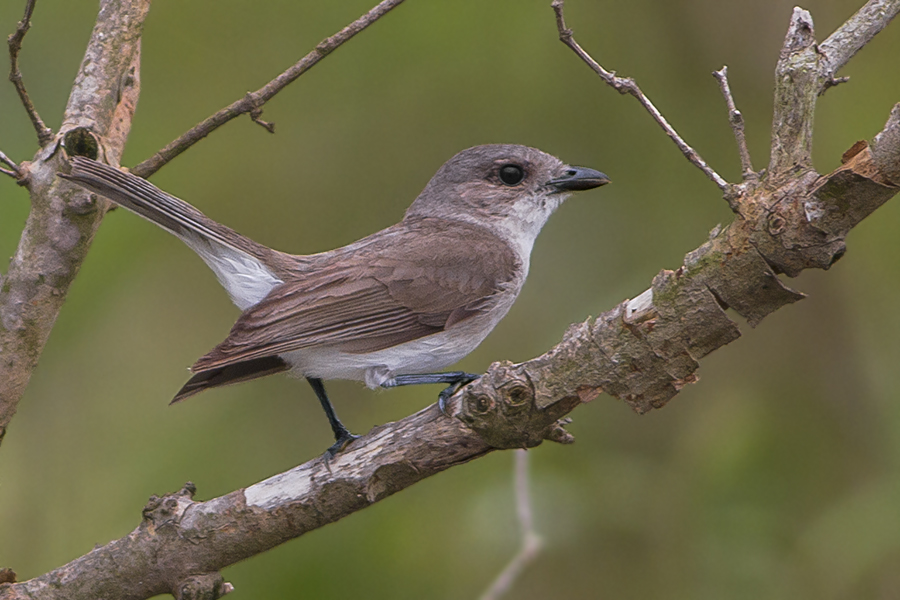
Wikipedia: Mangrove whistler Source: OTHER
Mangrove_Whistler.jpg

Wikipedia: Black-naped monarch Source: OTHER
1200px-Hypothymis_azurea_-_Kaeng_Krachan.jpg

Wikipedia: Black-faced cuckoo-shrike Source: OTHER
1200px-Coracina_novaehollandiae.jpg
General: ![]() The black-faced cuckooshrike (Coracina novaehollandiae) is a common omnivorous passerine bird native to Australia and southern New Guinea. It has a protected status in Australia, under the National Parks and Wildlife Act, 1974.
[more]
The black-faced cuckooshrike (Coracina novaehollandiae) is a common omnivorous passerine bird native to Australia and southern New Guinea. It has a protected status in Australia, under the National Parks and Wildlife Act, 1974.
[more]
Profile Wikipedia eBird Xeno-Canto

Wikipedia: Javan cuckooshrike Source: OTHER
Javan_Cuckoo-Shrike_-_Malaysia_MG_6991_%2816408000903%29.jpg
Profile Wikipedia eBird Xeno-Canto

Wikipedia: Lesser cuckooshrike Source: OTHER
1200px-Coracina_fimbriata_male_1838.jpg

Wikipedia: White-winged triller Source: OTHER
1200px-Lalage_tricolor_male_2_-_Glen_Davis.jpg
General: ![]() The white-winged triller (Lalage tricolor) is one of the smaller members of the cuckooshrike family, Campephagidae. It is found throughout mainland Australia and possibly on the islands to the north, including New Guinea and eastern Indonesia. It is resident or nomadic over the warmer part of its range (inland Australia and points north), and a summer breeding migrant to the cooler southern parts of Australia.
[more]
The white-winged triller (Lalage tricolor) is one of the smaller members of the cuckooshrike family, Campephagidae. It is found throughout mainland Australia and possibly on the islands to the north, including New Guinea and eastern Indonesia. It is resident or nomadic over the warmer part of its range (inland Australia and points north), and a summer breeding migrant to the cooler southern parts of Australia.
[more]
Profile Wikipedia eBird Xeno-Canto

Wikipedia: Small minivet Source: OTHER
Small_Minivet%28m%29_%28cropped%29.jpg
Profile Wikipedia eBird Xeno-Canto

Wikipedia: Scarlet minivet Source: OTHER
1200px-20221225_Pericrocotus_speciosus.jpg
Profile Wikipedia eBird Xeno-Canto

Wikipedia: Black-winged flycatcher-shrike Source: OTHER
Black-winged_Flycatcher-Shrike_-_Gunung_Gede_-_West_Java_MG_3861_%2829773557386%29.jpg
Grey-headed canary flycatcher (Culicicapa ceylonensis)

Wikipedia: Grey-headed canary flycatcher Source: OTHER
1200px-Culicicapa_ceylonensis_-_Mae_Wong.jpg
Pied fantail (Rhipidura javanica)
Malaysian pied-fantail atop a woven rabbit statue in Phnom Penh. 2024-03-10 09.45.14 Cambodia
First observed in Cambodia on 2024-03-07.
Song:
Automatically generated from Xeno-Canto recording
Song attributes:
Frequency:
♫ XC855225 - Malaysian Pied Fantail - Rhipidura javanica longicauda - song - Krung Thep Maha Nakhon, Thailand. Source: XENOCANTO
XC855225 - Malaysian Pied Fantail - Rhipidura javanica longicauda - song - Krung Thep Maha Nakhon, Thailand.mp3
Thailand (song)

Profile Wikipedia eBird Xeno-Canto

Wikipedia: Brown honeyeater Source: OTHER
1200px-Brown_Honeyeater_kobble_sep05.jpg
General: ![]() The brown honeyeater (Lichmera indistincta) belongs to the honeyeaters, a group of birds found mainly in Australia and New Guinea, which have highly developed brush-tipped tongues adapted for nectar feeding. It is a medium-small brownish bird, with yellow-olive panels in the tail and wing, and a yellow tuft behind the eye.
[more]
The brown honeyeater (Lichmera indistincta) belongs to the honeyeaters, a group of birds found mainly in Australia and New Guinea, which have highly developed brush-tipped tongues adapted for nectar feeding. It is a medium-small brownish bird, with yellow-olive panels in the tail and wing, and a yellow tuft behind the eye.
[more]
Profile Wikipedia eBird Xeno-Canto

Wikipedia: Golden-bellied gerygone Source: OTHER
1200px-Gerygone_sulphurea_flaveola%281%29.JPG
Gull-billed tern / Lachseeschwalbe (Gelochelidon nilotica)
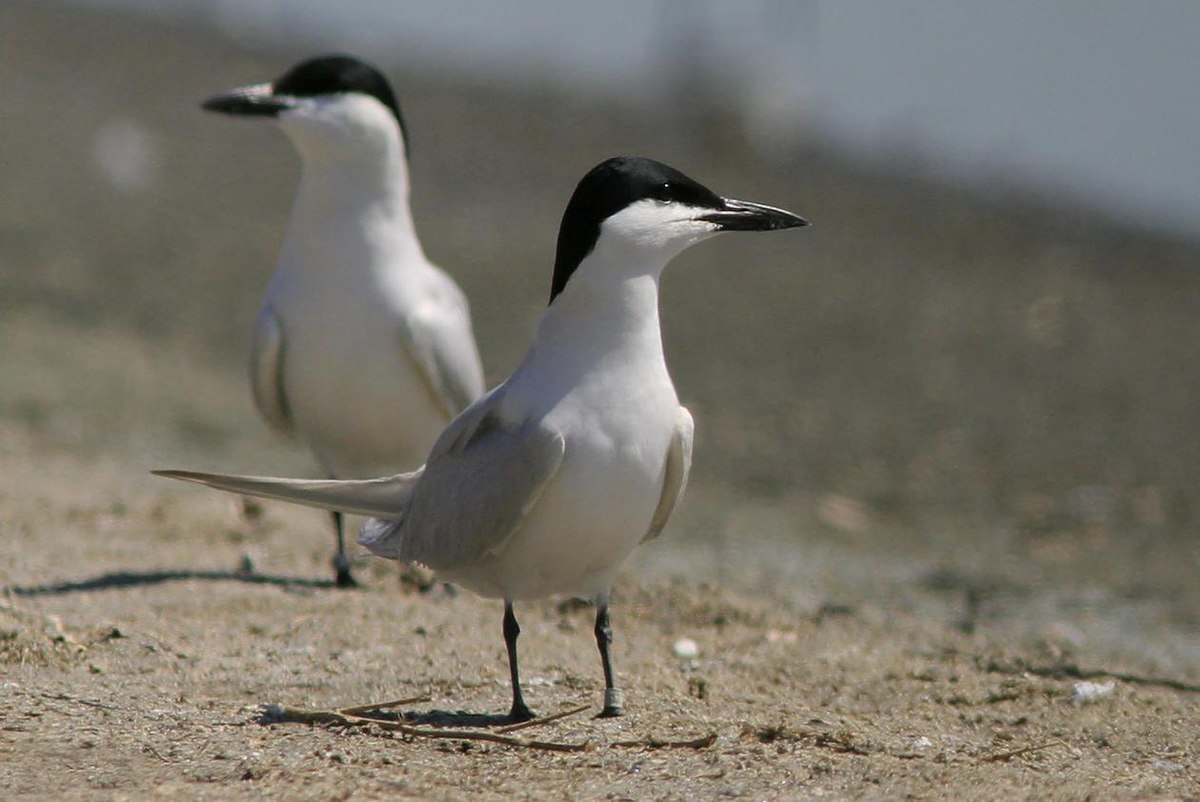
Wikipedia: Gull-billed tern Source: OTHER
1200px-Gelochelidon_nilotica_vanrossemi.jpg
This bird appears across the great seas in the following continents:
Europe, North America, South America, Africa, Asia.
General: ![]() The gull-billed tern (Gelochelidon nilotica), formerly Sterna nilotica,[2] is a tern in the family Laridae. The genus name is from Ancient Greek gelao, "to laugh", and khelidon, "swallow". The specific niloticus is from Latin and means of the Nile.[3] The Australian gull-billed tern was previously considered a subspecies.
[more]
The gull-billed tern (Gelochelidon nilotica), formerly Sterna nilotica,[2] is a tern in the family Laridae. The genus name is from Ancient Greek gelao, "to laugh", and khelidon, "swallow". The specific niloticus is from Latin and means of the Nile.[3] The Australian gull-billed tern was previously considered a subspecies.
[more]
Whiskered tern / Weissbart-Seeschwalbe (Chlidonias hybrida)
Whiskered tern, Phnom Krom. 2024-03-03 08.33.04 Cambodia
First observed in Cambodia on 2024-03-03.
![]() The whiskered tern (Chlidonias hybrida) is a tern in the family Laridae. The genus name is from Ancient Greek khelidonios, "swallow-like", from khelidon, "swallow". The specific hybridus is Latin for hybrid; Pallas thought it might be a hybrid of white-winged black tern and common tern, writing "Sterna fissipes [Chlidonias leucopterus] et Hirundine [Sterna hirundo] natam”.[2]
[more]
The whiskered tern (Chlidonias hybrida) is a tern in the family Laridae. The genus name is from Ancient Greek khelidonios, "swallow-like", from khelidon, "swallow". The specific hybridus is Latin for hybrid; Pallas thought it might be a hybrid of white-winged black tern and common tern, writing "Sterna fissipes [Chlidonias leucopterus] et Hirundine [Sterna hirundo] natam”.[2]
[more]
Calls: ![]() Contact call freely used and fairly distinct: An extremely hoarse, and rasping "krreek" in various moods. Timbre comparable to Corncrake. Sometimes uttered in stuttering series "kr-kr-kr-kr-kr". [Link]
Contact call freely used and fairly distinct: An extremely hoarse, and rasping "krreek" in various moods. Timbre comparable to Corncrake. Sometimes uttered in stuttering series "kr-kr-kr-kr-kr". [Link]
Physical details: length=23-25 cm,
wingspan=74-78 cm,
weight=79-94 g
Habitats:
River and lake
Call:
Automatically generated from Xeno-Canto recording
♫ XC770351 - Whiskered Tern - Chlidonias hybrida - call, flight call - Heves County, Hungary. Source: XENOCANTO
XC770351 - Whiskered Tern - Chlidonias hybrida - call, flight call - Heves County, Hungary.mp3
(flight call)

Call attributes:
flight call Frequency: ,
White-winged tern / Weissflügelseeschwalbe (Chlidonias leucopterus)

Wikipedia: White-winged tern Source: OTHER
Chlidonias_leucopterus_Mai_Po.jpg
General: ![]() The white-winged tern, or white-winged black tern (Chlidonias leucopterus or Chlidonias leucoptera), is a species of tern in the family Laridae. It is a small species generally found in or near bodies of fresh water across much of the world, including Europe, Africa, Asia, and Australia. The genus name is from Ancient Greek khelidonios, "swallow-like", from khelidon, "swallow".
[more]
The white-winged tern, or white-winged black tern (Chlidonias leucopterus or Chlidonias leucoptera), is a species of tern in the family Laridae. It is a small species generally found in or near bodies of fresh water across much of the world, including Europe, Africa, Asia, and Australia. The genus name is from Ancient Greek khelidonios, "swallow-like", from khelidon, "swallow".
[more]
Habitats:
River and lake
Brown noddy / Noddi (Anous stolidus)

Wikipedia: Brown noddy Source: OTHER
1200px-Common_Noddy_1_-_Michaelmas.jpg
This bird appears across the great seas in the following continents:
North America, South America, Africa, Asia.
![]() The brown noddy or common noddy (Anous stolidus) is a seabird in the family Laridae. The largest of the noddies, it can be told from the closely related black noddy by its larger size and plumage, which is dark brown rather than black. The brown noddy is a tropical seabird with a worldwide distribution, ranging from Hawaii to the Tuamotu Archipelago and Australia in the Pacific Ocean, from the Red Sea to the Seychelles and Australia in the Indian Ocean and in the Caribbean to Tristan da Cunha in the Atlantic Ocean. The brown noddy is colonial, usually nesting on elevated situations on cliffs or in short trees or shrubs. It only occasionally nests on the ground. A single egg is laid by the female of a pair each breeding season. In India the brown noddy is protected in the PM Sayeed Marine Birds Conservation Reserve.[2]
[more]
The brown noddy or common noddy (Anous stolidus) is a seabird in the family Laridae. The largest of the noddies, it can be told from the closely related black noddy by its larger size and plumage, which is dark brown rather than black. The brown noddy is a tropical seabird with a worldwide distribution, ranging from Hawaii to the Tuamotu Archipelago and Australia in the Pacific Ocean, from the Red Sea to the Seychelles and Australia in the Indian Ocean and in the Caribbean to Tristan da Cunha in the Atlantic Ocean. The brown noddy is colonial, usually nesting on elevated situations on cliffs or in short trees or shrubs. It only occasionally nests on the ground. A single egg is laid by the female of a pair each breeding season. In India the brown noddy is protected in the PM Sayeed Marine Birds Conservation Reserve.[2]
[more]
Caspian tern / Raubseeschwalbe (Hydroprogne caspia)

Wikipedia: Caspian tern Source: OTHER
1200px-Sterna-caspia-010.jpg
This bird appears across the great seas in the following continents:
Europe, North America, South America, Africa, Asia.
![]() The Caspian tern (Hydroprogne caspia)[2] is a species of tern, with a subcosmopolitan but scattered distribution. Despite its extensive range, it is monotypic of its genus, and has no accepted subspecies.[3] The genus name is from Ancient Greek hudros, "water", and Latin progne, "swallow". The specific caspia is from Latin and, like the English name, refers to the Caspian Sea.[4]
[more]
The Caspian tern (Hydroprogne caspia)[2] is a species of tern, with a subcosmopolitan but scattered distribution. Despite its extensive range, it is monotypic of its genus, and has no accepted subspecies.[3] The genus name is from Ancient Greek hudros, "water", and Latin progne, "swallow". The specific caspia is from Latin and, like the English name, refers to the Caspian Sea.[4]
[more]
Calls: ![]() Easily recognized by its very harsh calls. Sometimes likened to the sound of a plate of steel being dragged across a concrete floor. Similar in harshness to Grey Heron, but more drawn, with an accented middle; "Kraaeeet", or with a double syllable start "ka-ha-kraaaeet". Immature birds begs with a penetrating, sharp whistle. [Link]
Easily recognized by its very harsh calls. Sometimes likened to the sound of a plate of steel being dragged across a concrete floor. Similar in harshness to Grey Heron, but more drawn, with an accented middle; "Kraaeeet", or with a double syllable start "ka-ha-kraaaeet". Immature birds begs with a penetrating, sharp whistle. [Link]
Physical details: length=47-54 cm,
wingspan=130-145 cm,
weight=500-750 g
Habitats:
River and lake
Bridled tern / Zügelseeschwalbe (Onychoprion anaethetus)
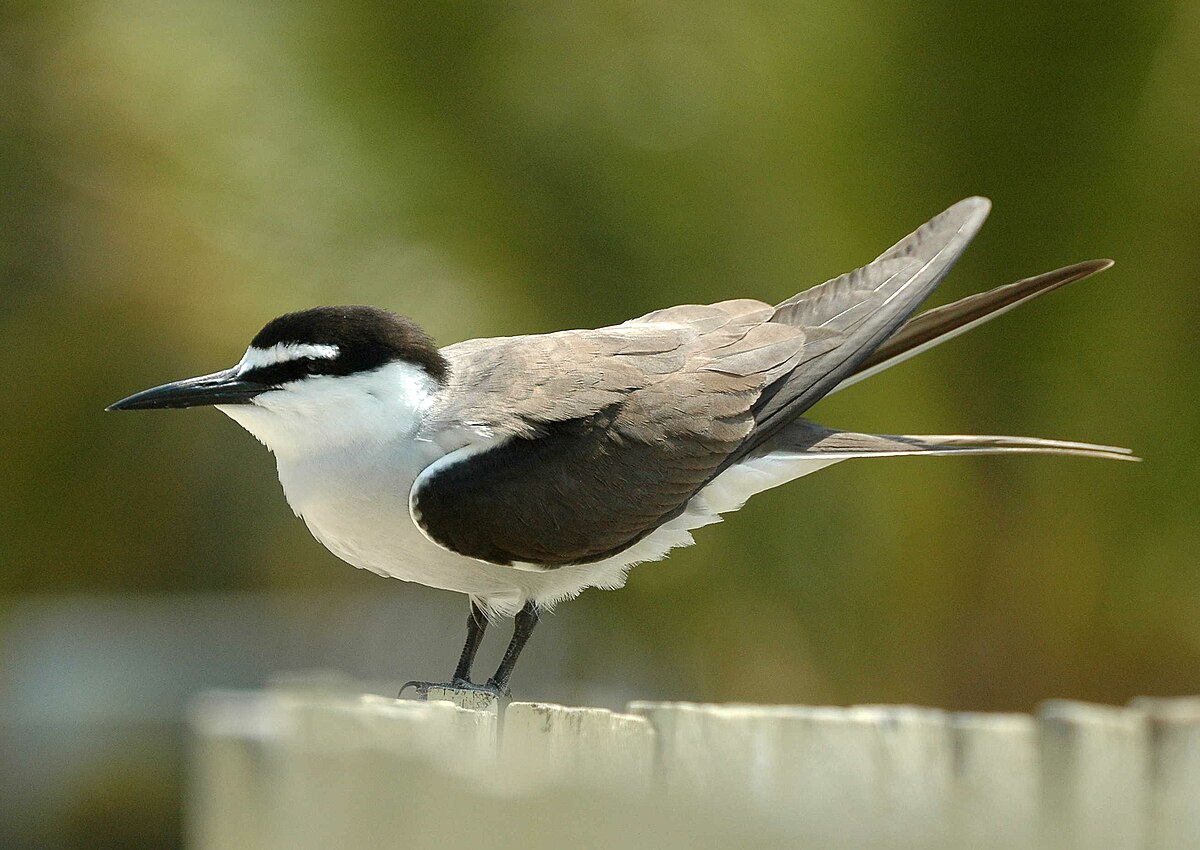
Wikipedia: Bridled tern Source: OTHER
1200px-Bridled_Tern_LEI_Nov06.JPG
This bird appears across the great seas in the following continents:
North America, South America, Africa, Asia.
General: ![]() The bridled tern (Onychoprion anaethetus)[2] is a seabird of the family Laridae. It is a bird of the tropical oceans. The scientific name is from Ancient Greek. The genus comes from onux meaning "claw" or "nail", and prion, meaning "saw". The specific anaethetus means "senseless, stupid".[3]
[more]
The bridled tern (Onychoprion anaethetus)[2] is a seabird of the family Laridae. It is a bird of the tropical oceans. The scientific name is from Ancient Greek. The genus comes from onux meaning "claw" or "nail", and prion, meaning "saw". The specific anaethetus means "senseless, stupid".[3]
[more]
Aleutian tern (Onychoprion aleuticus)

Wikipedia: Aleutian tern Source: OTHER
Aleutian_Tern.jpg
This bird appears across the great seas in the following continents:
North America, Asia, Australia.
vagrant
Little tern / Zwergseeschwalbe (Sternula albifrons)
Little Tern, Reykjavik, Iceland. 2015-05-29 11.18.30 Iceland
First observed in Iceland on 2015-05-29.
General: ![]() The little tern (Sternula albifrons) is a seabird of the family Laridae. It was formerly placed into the genus Sterna, which now is restricted to the large white terns.[2] The genus name is a diminutive of Sterna, "tern". The specific albifrons is from Latin albus, "white", and "frons", forehead.[3] The former North American (S. a. antillarum) and Red Sea S. a. saundersi subspecies are now considered to be separate species, the least tern (Sternula antillarum) and Saunders's tern (Sternula saundersi).
[more]
The little tern (Sternula albifrons) is a seabird of the family Laridae. It was formerly placed into the genus Sterna, which now is restricted to the large white terns.[2] The genus name is a diminutive of Sterna, "tern". The specific albifrons is from Latin albus, "white", and "frons", forehead.[3] The former North American (S. a. antillarum) and Red Sea S. a. saundersi subspecies are now considered to be separate species, the least tern (Sternula antillarum) and Saunders's tern (Sternula saundersi).
[more]
Vocalization: ![]() Fairly distinct voice. [Link]
Fairly distinct voice. [Link]
Calls: ![]() Contact call a sharp "kitt", often combined to form undulating, rolling series. Not as sharp and penetrating as Common- and Arctic Tern. [Link]
Contact call a sharp "kitt", often combined to form undulating, rolling series. Not as sharp and penetrating as Common- and Arctic Tern. [Link]
Physical details: length=22-24 cm,
wingspan=48-55 cm,
weight=49-63 g
Habitats:
River and lake
Great crested-tern / Eilseeschwalbe (Thalasseus bergii)

Wikipedia: Great crested-tern Source: OTHER
1200px-Crested_Tern_Tasmania.jpg
General: ![]() The greater crested tern[3] (Thalasseus bergii), also called crested tern or swift tern, is a tern in the family Laridae that nests in dense colonies on coastlines and islands in the tropical and subtropical Old World. Its five subspecies breed in the area from South Africa around the Indian Ocean to the central Pacific and Australia, all populations dispersing widely from the breeding range after nesting. This large tern is closely related to the royal and lesser crested terns, but can be distinguished by its size and bill colour.
[more]
The greater crested tern[3] (Thalasseus bergii), also called crested tern or swift tern, is a tern in the family Laridae that nests in dense colonies on coastlines and islands in the tropical and subtropical Old World. Its five subspecies breed in the area from South Africa around the Indian Ocean to the central Pacific and Australia, all populations dispersing widely from the breeding range after nesting. This large tern is closely related to the royal and lesser crested terns, but can be distinguished by its size and bill colour.
[more]
Lesser sand-plover (Charadrius mongolus)

Wikipedia: Lesser sand-plover Source: OTHER
1200px-Charadrius_mongolus_-_Laem_Phak_Bia.jpg
This bird appears across the great seas in the following continents:
North America, Africa, Asia.
![]() The lesser sand plover (Charadrius mongolus) is a small wader in the plover family of birds. The spelling is commonly given as lesser sand-plover, but the official British Ornithologists' Union spelling is "lesser sand plover". The genus name Charadrius is a Late Latin word for a yellowish bird mentioned in the fourth-century Vulgate. It derives from Ancient Greek kharadrios a bird found in ravines and river valleys (kharadra, "ravine"). The specific mongolus is Latin and refers to Mongolia which at the time of naming referred to a larger area than the present country.[2]
[more]
The lesser sand plover (Charadrius mongolus) is a small wader in the plover family of birds. The spelling is commonly given as lesser sand-plover, but the official British Ornithologists' Union spelling is "lesser sand plover". The genus name Charadrius is a Late Latin word for a yellowish bird mentioned in the fourth-century Vulgate. It derives from Ancient Greek kharadrios a bird found in ravines and river valleys (kharadra, "ravine"). The specific mongolus is Latin and refers to Mongolia which at the time of naming referred to a larger area than the present country.[2]
[more]
Little ringed plover / Flussregenpfeifer (Charadrius dubius)
Profile Wikipedia eBird Vogelwarte BirdLife ZH ornitho.ch Xeno-Canto BirdID NABU
Little Ringed Plovers, Phnom Krom. 2024-03-03 09.12.46 Cambodia
First observed in Mallorca on 2022-04-10.
![]() The little ringed plover (Charadrius dubius) is a small plover. The genus name Charadrius is a Late Latin word for a yellowish bird mentioned in the fourth-century Vulgate. It derives from Ancient Greek kharadrios a bird found in river valleys (kharadra, "ravine"). The specific dubius is Latin for doubtful, since Sonnerat, writing in 1776, thought this bird might be just a variant of common ringed plover.[2]
[more]
The little ringed plover (Charadrius dubius) is a small plover. The genus name Charadrius is a Late Latin word for a yellowish bird mentioned in the fourth-century Vulgate. It derives from Ancient Greek kharadrios a bird found in river valleys (kharadra, "ravine"). The specific dubius is Latin for doubtful, since Sonnerat, writing in 1776, thought this bird might be just a variant of common ringed plover.[2]
[more]
Vocalization: ![]() Quite different from Ringed Plover. Sharper sounding, lacking Ringed's soft tone. Often starts with a rolling "r". [Link]
Quite different from Ringed Plover. Sharper sounding, lacking Ringed's soft tone. Often starts with a rolling "r". [Link]
Calls: ![]() Common calls are a two syllable "krrll-uuit" with a rising pitch or just a sharp, rolling "krrri-krrri". Also a longer rolling "krree-looo" with pitch rising in first syllable and falling in the second. [Link]
Common calls are a two syllable "krrll-uuit" with a rising pitch or just a sharp, rolling "krrri-krrri". Also a longer rolling "krree-looo" with pitch rising in first syllable and falling in the second. [Link]
Physical details: length=14-15 cm,
wingspan=42-48 cm,
weight=32-48 g
Habitats:
Wetland
Call:
Automatically generated from Xeno-Canto recording
♫ XC835676 - Little Ringed Plover - Charadrius dubius - flight call, song - Dundgovi, Mongolia. Source: XENOCANTO
XC835676 - Little Ringed Plover - Charadrius dubius - flight call, song - Dundgovi, Mongolia.mp3
(flight call)

Call attributes:
flight call Frequency: ,
Greater sand plover / Wüstenregenpfeifer (Charadrius leschenaultii)

Wikipedia: Greater sand plover Source: OTHER
1200px-Greater_Sand_Plover_1_-_Lee_Point.jpg
General: ![]() The greater sand plover (Charadrius leschenaultii) is a small wader in the plover family of birds. The spelling is commonly given as "greater sandplover" or "greater sand-plover", but the official British Ornithologists' Union spelling is "Greater Sand Plover".[2] The genus name Charadrius is a Late Latin word for a yellowish bird mentioned in the fourth-century Vulgate. It derives from Ancient Greek kharadrios a bird found in ravines and river valleys (kharadra, "ravine"). The specific leschenaultii commemorates the French botanist Jean Baptiste Leschenault de la Tour.[3]
[more]
The greater sand plover (Charadrius leschenaultii) is a small wader in the plover family of birds. The spelling is commonly given as "greater sandplover" or "greater sand-plover", but the official British Ornithologists' Union spelling is "Greater Sand Plover".[2] The genus name Charadrius is a Late Latin word for a yellowish bird mentioned in the fourth-century Vulgate. It derives from Ancient Greek kharadrios a bird found in ravines and river valleys (kharadra, "ravine"). The specific leschenaultii commemorates the French botanist Jean Baptiste Leschenault de la Tour.[3]
[more]
Red-capped plover (Charadrius ruficapillus)
Profile Wikipedia eBird Xeno-Canto

Wikipedia: Red-capped plover Source: OTHER
1200px-Charadrius_ruficapillus_Breeding_Plumage.jpg
![]() The red-capped plover (Charadrius ruficapillus), also known as the red-capped dotterel, is a small species of plover.
[more]
The red-capped plover (Charadrius ruficapillus), also known as the red-capped dotterel, is a small species of plover.
[more]
Oriental plover (Charadrius veredus)
Profile Wikipedia eBird Xeno-Canto

Wikipedia: Oriental plover Source: OTHER
Charadrius_veredus_West_Timor_0.jpg
![]() The oriental plover (Charadrius veredus) also known as the oriental dotterel, is a medium-sized Charadriine plover closely related to the Caspian plover. It breeds in parts of Mongolia and China, migrating southwards each year to spend its non-breeding season in Indonesia, New Guinea and northern Australia.
[more]
The oriental plover (Charadrius veredus) also known as the oriental dotterel, is a medium-sized Charadriine plover closely related to the Caspian plover. It breeds in parts of Mongolia and China, migrating southwards each year to spend its non-breeding season in Indonesia, New Guinea and northern Australia.
[more]
Kentish plover / Seeregenpfeifer (Charadrius alexandrinus)
Profile Wikipedia eBird Vogelwarte BirdLife ZH ornitho.ch Audubon AllAboutBirds Xeno-Canto BirdID NABU
Der kleinste Watvoegel bei Ses Salines, Mallorcal, ein Seeregenpfeifer. 2022-04-08 17.00.16 Mallorca
First observed in Mallorca on 2022-04-08.
This bird appears across the great seas in the following continents:
Europe, North America, Africa, Asia, Australia.
vagrant
Song: ![]() Contact calls more frequently heard than song, with two distinct calls. A short and soft ascending whistle resembling chiff-chaff is often heard from the ground, and a hard and rolling "prrrrt" if flushed (or just a short "tip"). Song a hard and rolling sequence resembling Dunlin song, but less nasal and more pulsating. [Link]
Contact calls more frequently heard than song, with two distinct calls. A short and soft ascending whistle resembling chiff-chaff is often heard from the ground, and a hard and rolling "prrrrt" if flushed (or just a short "tip"). Song a hard and rolling sequence resembling Dunlin song, but less nasal and more pulsating. [Link]
Physical details: length=15-17 cm,
wingspan=42-45 cm,
weight=39-56 g
Habitats:
Wetland
Malaysian plover (Charadrius peronii)
Profile Wikipedia eBird Xeno-Canto

Wikipedia: Malaysian plover Source: OTHER
1200px-Charadrius_peronii_-_Laem_Pak_Bia.jpg
Javan plover (Charadrius javanicus)

Wikipedia: Javan plover Source: OTHER
1200px-Javan_Plover_0A2A3807.jpg
Endemic (country/region)
Black-bellied plover / Kiebitzregenpfeifer (Pluvialis squatarola)
Black-bellied plover eggs. 2016-09-25 16.51.00 Botswana
First observed in Botswana on 2016-09-25.
This bird appears across the great seas in the following continents:
Europe, North America, South America, Africa, Asia.
General: ![]() The grey plover or black-bellied plover (Pluvialis squatarola) is a medium-sized plover breeding in Arctic regions. It is a long-distance migrant, with a nearly worldwide coastal distribution when not breeding.[2] The genus name is Latin and means relating to rain, from pluvia, "rain". It was believed that golden plovers flocked when rain was imminent. The species name squatarola is a Latinised version of Sgatarola, a Venetian name for some kind of plover.[3]
[more]
The grey plover or black-bellied plover (Pluvialis squatarola) is a medium-sized plover breeding in Arctic regions. It is a long-distance migrant, with a nearly worldwide coastal distribution when not breeding.[2] The genus name is Latin and means relating to rain, from pluvia, "rain". It was believed that golden plovers flocked when rain was imminent. The species name squatarola is a Latinised version of Sgatarola, a Venetian name for some kind of plover.[3]
[more]
Calls: ![]() Contact call diagnostic. A plaintive, drawn and trisyllabic (but continuous) "kleeooowee". Pitch falls on second syllable and rises on last. [Link]
Contact call diagnostic. A plaintive, drawn and trisyllabic (but continuous) "kleeooowee". Pitch falls on second syllable and rises on last. [Link]
Physical details: length=27-30 cm,
wingspan=71-83 cm,
weight=190-280 g
Habitats:
Wetland
Pacific golden plover / Sibirischer Goldregenpfeifer (Pluvialis fulva)

Wikipedia: Pacific golden plover Source: OTHER
Pluvialis_fulva_-Bering_Land_Bridge_National_Preserve%2C_Alaska%2C_USA-8.jpg
This bird appears across the great seas in the following continents:
North America, Africa, Asia.
General: ![]() The Pacific golden plover (Pluvialis fulva), or Pacific golden-plover is a medium-sized plover. The genus name is Latin and means relating to rain, from pluvia, "rain". It was believed that golden plovers flocked when rain was imminent. The species name fulva is Latin and refers to a tawny colour.[2]
[more]
The Pacific golden plover (Pluvialis fulva), or Pacific golden-plover is a medium-sized plover. The genus name is Latin and means relating to rain, from pluvia, "rain". It was believed that golden plovers flocked when rain was imminent. The species name fulva is Latin and refers to a tawny colour.[2]
[more]
Curlew sandpiper / Sichelstrandläufer (Calidris ferruginea)
Profile Wikipedia eBird Vogelwarte BirdLife ZH ornitho.ch Audubon AllAboutBirds Xeno-Canto BirdID NABU

Wikipedia: Curlew sandpiper Source: OTHER
1200px-Calidris_ferruginea%2C_winter_adult%2C_Pak_Thale.jpg
This bird appears across the great seas in the following continents:
Europe, North America, South America, Africa, Asia.
Etymology: ![]() Nicolas Baiker sagt, Hauptmerkmale innerhalb der Strandlaeufer sind der Augenstreif und der Schnabel der relativ lang ist und immer lezten Drittel immer krummer, darum Sichelstrandlaeufer. [Link]
Nicolas Baiker sagt, Hauptmerkmale innerhalb der Strandlaeufer sind der Augenstreif und der Schnabel der relativ lang ist und immer lezten Drittel immer krummer, darum Sichelstrandlaeufer. [Link]
Calls: ![]() Flight call a soft, ringing and rolling "krrrrrt, with variations. Lacks the hoarse, nasal quality of similar call by Dunlin. [Link]
Flight call a soft, ringing and rolling "krrrrrt, with variations. Lacks the hoarse, nasal quality of similar call by Dunlin. [Link]
Physical details: length=18-19 cm,
wingspan=42-46 cm,
weight=50-65 g
Habitats:
Wetland
Ruff / Kampfläufer (Calidris pugnax)

Wikipedia: Ruff Source: OTHER
1200px-Philomachus_pugnax_-Diergaarde_Blijdorp-8c.jpg
This bird appears across the great seas in the following continents:
Europe, North America, South America, Africa, Asia.
Etymology: Nabu: Der Name leitet sich vom Balzverhalten der Männchen ab: In Balzarenen tragen sie „Turniere“ aus, um die Weibchen zu beeindrucken, dabei herrscht eine komplizierte Rollenverteilung. [Link]
Vocalization: ![]() Generally silent. Short, muted, nasal, mono or disyllabic grunts sometimes heard. [Link]
Generally silent. Short, muted, nasal, mono or disyllabic grunts sometimes heard. [Link]
Physical details: length=26-30 cm,
wingspan=54-58 cm,
weight=75-230 g
Habitats:
Wetland
Temminck's stint / Temminckstrandläufer (Calidris temminckii)
Profile Wikipedia eBird Vogelwarte BirdLife ZH ornitho.ch Xeno-Canto NABU

Wikipedia: Temminck's stint Source: OTHER
1200px-Temmincks_Stint.jpg
General: ![]() Temminck's stint (Calidris temminckii) is a small wader. This bird's common name and Latin binomial commemorate the Dutch naturalist Coenraad Jacob Temminck.[3] The genus name is from Ancient Greek kalidris or skalidris, a term used by Aristotle for some grey-coloured waterside birds.[4]
[more]
Temminck's stint (Calidris temminckii) is a small wader. This bird's common name and Latin binomial commemorate the Dutch naturalist Coenraad Jacob Temminck.[3] The genus name is from Ancient Greek kalidris or skalidris, a term used by Aristotle for some grey-coloured waterside birds.[4]
[more]
Habitats:
Wetland
Red knot / Knutt (Calidris canutus)
Profile Wikipedia eBird Vogelwarte BirdLife ZH ornitho.ch Audubon AllAboutBirds Xeno-Canto BirdID NABU
Red knots, according to MerlinBirdID - underway to somewhere better at Las Coloradas. 2023-04-15 09.34.08 Yucatan
First observed in Yucatan on 2023-04-15.
This bird appears across the great seas in the following continents:
Europe, North America, South America, Africa, Asia.
![]() The red knot (Calidris canutus) (just knot in English-speaking Europe) is a medium-sized shorebird which breeds in tundra and the Arctic Cordillera in the far north of Canada, Europe, and Russia. It is a large member of the Calidris sandpipers, second only to the great knot.[2] Six subspecies are recognised.
[more]
The red knot (Calidris canutus) (just knot in English-speaking Europe) is a medium-sized shorebird which breeds in tundra and the Arctic Cordillera in the far north of Canada, Europe, and Russia. It is a large member of the Calidris sandpipers, second only to the great knot.[2] Six subspecies are recognised.
[more]
Song: ![]() Song an undulating, nasal mewing "poooor-mee", or "po-hor-mee". [Link]
Song an undulating, nasal mewing "poooor-mee", or "po-hor-mee". [Link]
Calls: ![]() Most commonly heard migratory call, a short "kut" or "knot". Sometimes given in stuttering series. [Link]
Most commonly heard migratory call, a short "kut" or "knot". Sometimes given in stuttering series. [Link]
Physical details: length=23-25 cm,
wingspan=57-61 cm,
weight=110-160 g
Habitats:
Wetland
Long-toed stint / Langzehenstrandläufer (Calidris subminuta)
Profile Wikipedia eBird Audubon AllAboutBirds Xeno-Canto

Wikipedia: Long-toed stint Source: OTHER
1200px-Calidris_subminuta_-_Pak_Thale.jpg
This bird appears across the great seas in the following continents:
North America, Africa, Asia.
General: ![]() The long-toed stint, Calidris subminuta, is a small wader. The genus name is from Ancient Greek kalidris or skalidris, a term used by Aristotle for some grey-coloured waterside birds. The specific subminuta is from Latin sub, "near to" and minuta, "small" from its similarity to the little stint, Calidris minuta.[2]
[more]
The long-toed stint, Calidris subminuta, is a small wader. The genus name is from Ancient Greek kalidris or skalidris, a term used by Aristotle for some grey-coloured waterside birds. The specific subminuta is from Latin sub, "near to" and minuta, "small" from its similarity to the little stint, Calidris minuta.[2]
[more]
Sanderling / Sanderling (Calidris alba)
Profile Wikipedia eBird Vogelwarte BirdLife ZH ornitho.ch Audubon AllAboutBirds Xeno-Canto BirdID NABU
Sanderling. 2023-09-27 12.12.20 Florida
First observed in Yucatan on 2023-03-27.
This bird appears across the great seas in the following continents:
Europe, North America, South America, Africa, Asia.
![]() The sanderling (Calidris alba) is a small wading bird. The name derives from Old English sand-yrðling, "sand-ploughman".[2] The genus name is from Ancient Greek kalidris or skalidris, a term used by Aristotle for some grey-coloured waterside birds. The specific alba is Latin for "white".[3]
[more]
The sanderling (Calidris alba) is a small wading bird. The name derives from Old English sand-yrðling, "sand-ploughman".[2] The genus name is from Ancient Greek kalidris or skalidris, a term used by Aristotle for some grey-coloured waterside birds. The specific alba is Latin for "white".[3]
[more]
Calls: ![]() Call not very diagnostic; a short and soft "pleet" or "keek". [Link]
Call not very diagnostic; a short and soft "pleet" or "keek". [Link]
Physical details: length=20-21 cm,
wingspan=40-45 cm,
weight=44-70 g
Habitats:
Wetland
Great knot (Calidris tenuirostris)
Profile Wikipedia eBird Xeno-Canto

Wikipedia: Great knot Source: OTHER
1200px-Calidris_tenuirostris_-_Laem_Phak_Bia.jpg
General: ![]() The great knot (Calidris tenuirostris) is a small wader. It is the largest of the calidrid species. The genus name is from Ancient Greek kalidris or skalidris, a term used by Aristotle for some grey-coloured waterside birds. The specific tenuirostris is from Latin tenuis "slender" and rostrum "bill".[2]
[more]
The great knot (Calidris tenuirostris) is a small wader. It is the largest of the calidrid species. The genus name is from Ancient Greek kalidris or skalidris, a term used by Aristotle for some grey-coloured waterside birds. The specific tenuirostris is from Latin tenuis "slender" and rostrum "bill".[2]
[more]
Rufous-necked stint / Rotkehlstrandläufer (Calidris ruficollis)
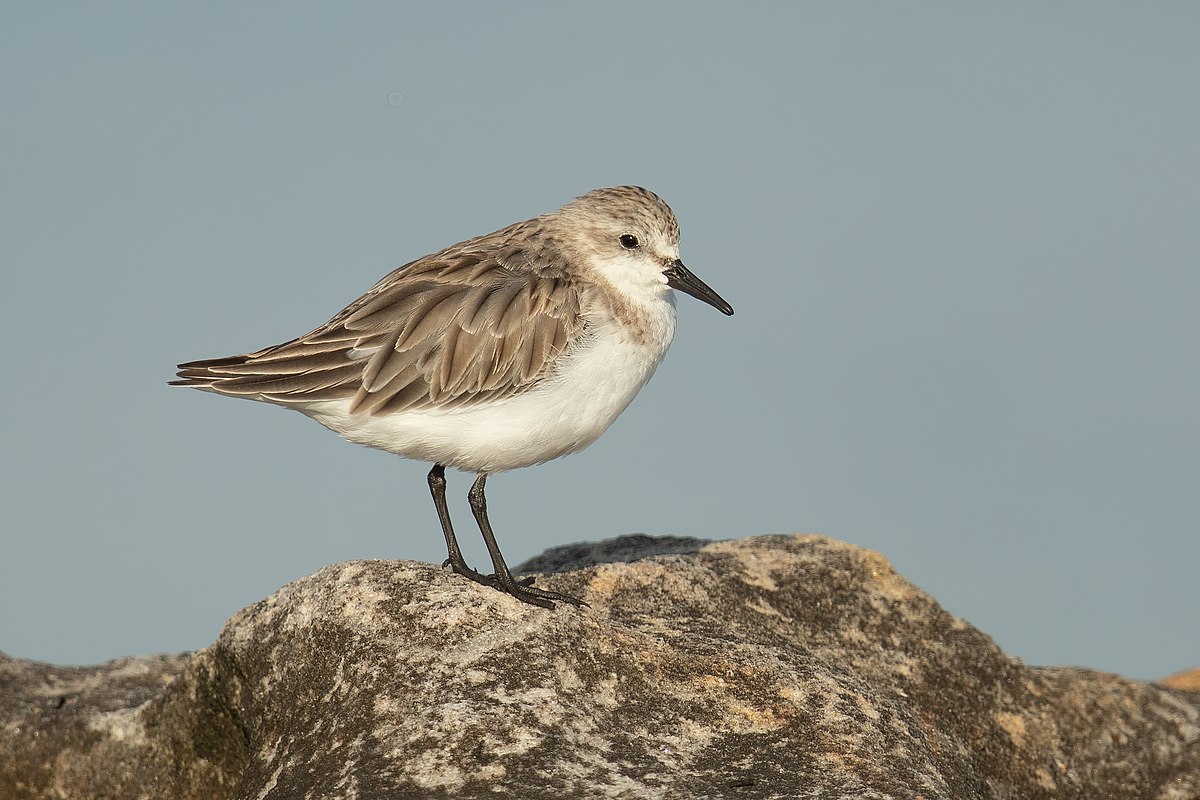
Wikipedia: Rufous-necked stint Source: OTHER
1200px-Red-necked_Stint_-_Boat_Harbour.jpg
This bird appears across the great seas in the following continents:
North America, Africa, Asia.
![]() The red-necked stint (Calidris ruficollis) is a small migratory wader. The genus name is from Ancient Greek kalidris or skalidris, a term used by Aristotle for some grey-coloured waterside birds. The specific ruficollis is from Latin rufus, "red" and collum, "neck".[2]
[more]
The red-necked stint (Calidris ruficollis) is a small migratory wader. The genus name is from Ancient Greek kalidris or skalidris, a term used by Aristotle for some grey-coloured waterside birds. The specific ruficollis is from Latin rufus, "red" and collum, "neck".[2]
[more]
Sharp-tailed sandpiper (Calidris acuminata)

Wikipedia: Sharp-tailed sandpiper Source: OTHER
1200px-Calidris_acuminata_-_Hexham_Swamp.jpg
This bird appears across the great seas in the following continents:
North America, Asia, Australia.
![]() The sharp-tailed sandpiper (Calidris acuminata) (but see below) is a small wader.
[more]
The sharp-tailed sandpiper (Calidris acuminata) (but see below) is a small wader.
[more]
Eurasian curlew / Grosser Brachvogel (Numenius arquata)
Profile Wikipedia eBird Vogelwarte BirdLife ZH ornitho.ch bird-song.ch Xeno-Canto BirdID NABU
Grosser Brachvogel. 2021-02-12 11.59.24
First observed in 🇨🇭 on 2021-02-12.
In Jona findet man viele auf der Wiese unter Obstbaeumen,
anscheinend weil es dort viele Insekten und Schnecken gibt (siehe oben).
Geography: ![]() Die Brachvögel bruetet im Moment recht viel in Vergleich mit früher. [Link]
Die Brachvögel bruetet im Moment recht viel in Vergleich mit früher. [Link]
Diet: Nabu: Auf dem Speiseplan des Großen Brachvogels stehen vor allem Insekten und deren Larven und andere Kleintiere wie Schnecken und Regenwürmer, aber auch Krebstierchen. Ab und zu frisst er auch Amphibien, Reptilien oder Fische. [Link]
Song: ![]() Song starts similar to Whimbrel, with long wailing notes "kluuueee", but takes on a different ending as it accelerates to an ascending phrase repeated in rapid cycles . [Link]
Song starts similar to Whimbrel, with long wailing notes "kluuueee", but takes on a different ending as it accelerates to an ascending phrase repeated in rapid cycles . [Link]
Physical details: length=50-60 cm,
wingspan=80-100 cm,
weight=540-1300 g
Habitats:
Wetland
Call:
![]() Das Männchen steigt mit einzelnen, klangvollen Rufen auf, die vor der Landung in einen weithin hörbaren Triller übergehen. [Link]
Das Männchen steigt mit einzelnen, klangvollen Rufen auf, die vor der Landung in einen weithin hörbaren Triller übergehen. [Link]
♫ Source: XENOCANTO
XC625195-grosser brachvogel, michal jezierski, uk.mp3
(flight call)

Call attributes:
flight call Call melody: simple rhythmic, slow, Frequency: low (1-3 KHz),
Whimbrel / Regenbrachvogel (Numenius phaeopus)
Regenbrachvogel oder Grosser Brachvogel - dunkle Schwanzfedern ein moegliches Zeichen. 2022-06-23 16.53.34 La Sauge
First observed in Canary Islands on 2022-03-19.
This bird appears across the great seas in the following continents:
Europe, North America, South America, Africa, Asia.
General: ![]() Der Regenbrachvogel (Numenius phaeopus) ist mit einer Spannweite um die 80 cm viel kleiner als der Große Brachvogel, auch der Schnabel ist kürzer und der Oberkopf ist hell und dunkel gestreift. Der Ruf dieser Vogelart ähnelt einem hellen Trillern.
[more]
Der Regenbrachvogel (Numenius phaeopus) ist mit einer Spannweite um die 80 cm viel kleiner als der Große Brachvogel, auch der Schnabel ist kürzer und der Oberkopf ist hell und dunkel gestreift. Der Ruf dieser Vogelart ähnelt einem hellen Trillern.
[more]
Song: ![]() Song starts similar to Curlew with long wailing notes "kluuueee", which then accelerates to a continuous, vibrating single note. Lacks the cyclic phrase ending of Curlew. [Link]
Song starts similar to Curlew with long wailing notes "kluuueee", which then accelerates to a continuous, vibrating single note. Lacks the cyclic phrase ending of Curlew. [Link]
Physical details: length=40-42 cm,
wingspan=76-89 cm,
weight=300-660 g
Habitats:
Wetland
Far eastern curlew (Numenius madagascariensis)

Wikipedia: Far eastern curlew Source: OTHER
1200px-Numenius_madagascariensis_1_-_Stockton_Sandspit.jpg
General: ![]() The Far Eastern curlew (Numenius madagascariensis) is a large shorebird most similar in appearance to the long-billed curlew, but slightly larger. It is mostly brown in color, differentiated from other curlews by its plain, unpatterned brown underwing. It is not only the largest curlew but probably the world's largest sandpiper, at 60–66 cm (24–26 in) in length and 110 cm (43 in) across the wings.[3] The body is reportedly 565–1,150 g (1.246–2.535 lb), which may be equaled by the Eurasian curlew.[4] The extremely long bill, at 12.8–20.1 cm (5.0–7.9 in) in length, rivals the bill size of the closely related long-billed curlew as the longest bill for a sandpiper.[3]
[more]
The Far Eastern curlew (Numenius madagascariensis) is a large shorebird most similar in appearance to the long-billed curlew, but slightly larger. It is mostly brown in color, differentiated from other curlews by its plain, unpatterned brown underwing. It is not only the largest curlew but probably the world's largest sandpiper, at 60–66 cm (24–26 in) in length and 110 cm (43 in) across the wings.[3] The body is reportedly 565–1,150 g (1.246–2.535 lb), which may be equaled by the Eurasian curlew.[4] The extremely long bill, at 12.8–20.1 cm (5.0–7.9 in) in length, rivals the bill size of the closely related long-billed curlew as the longest bill for a sandpiper.[3]
[more]
Ruddy turnstone / Steinwälzer (Arenaria interpres)
Ruddy turnstone near Las Coloradas. 2023-04-15 10.06.32 Yucatan
First observed in Canary Islands on 2022-03-19.
This bird appears across the great seas in the following continents:
Europe, North America, South America, Africa, Asia.
![]() The ruddy turnstone (Arenaria interpres) is a small wading bird, one of two species of turnstone in the genus Arenaria. The scientific name is from Latin. The genus name arenaria derives from arenarius, "inhabiting sand, from arena, "sand". The specific interpres means "messenger"; when visiting Gotland in 1741, Linnaeus thought that the Swedish word Tolk "interpreter" applied to this species, but in the local dialect the word means "legs" and is used for the redshank.[2]
[more]
The ruddy turnstone (Arenaria interpres) is a small wading bird, one of two species of turnstone in the genus Arenaria. The scientific name is from Latin. The genus name arenaria derives from arenarius, "inhabiting sand, from arena, "sand". The specific interpres means "messenger"; when visiting Gotland in 1741, Linnaeus thought that the Swedish word Tolk "interpreter" applied to this species, but in the local dialect the word means "legs" and is used for the redshank.[2]
[more]
Song: ![]() Alarm call/song more "wader-like", a staccato "kuvi-kuvi-vit-vit-vitua". [Link]
Alarm call/song more "wader-like", a staccato "kuvi-kuvi-vit-vit-vitua". [Link]
Calls: ![]() Characteristic call: An explosive, hard, resonant and short "koi" or "kott" with a peculiar timbre, usually given in rapid or accelerating series. [Link]
Characteristic call: An explosive, hard, resonant and short "koi" or "kott" with a peculiar timbre, usually given in rapid or accelerating series. [Link]
Physical details: length=22-24 cm,
wingspan=50-57 cm,
weight=85-150 g
Habitats:
Wetland
Swinhoe's snipe / Waldbekassine (Gallinago megala)
Profile Wikipedia eBird Audubon AllAboutBirds Xeno-Canto

Wikipedia: Swinhoe's snipe Source: OTHER
Gallinago_megala.jpg
This bird appears across the great seas in the following continents:
North America, Asia, Australia.
General: ![]() Swinhoe's snipe, Gallinago megala, also known as forest snipe or Chinese snipe, is a medium-sized (length 27–29 cm, wingspan 38–44 cm, weight 120 gm), long-billed, migratory wader.
[more]
Swinhoe's snipe, Gallinago megala, also known as forest snipe or Chinese snipe, is a medium-sized (length 27–29 cm, wingspan 38–44 cm, weight 120 gm), long-billed, migratory wader.
[more]
Pintail snipe / Spießbekassine (Gallinago stenura)

Wikipedia: Pintail snipe Source: OTHER
1200px-Gallinago_stenura_-_Laem_Pak_Bia.jpg
![]() The pin-tailed snipe or pintail snipe (Gallinago stenura) is a species of bird in the family Scolopacidae, the sandpipers.
[more]
The pin-tailed snipe or pintail snipe (Gallinago stenura) is a species of bird in the family Scolopacidae, the sandpipers.
[more]
Asian dowitcher (Limnodromus semipalmatus)

Wikipedia: Asian dowitcher Source: OTHER
Asian_Dowitcher_6436.jpg
![]() The Asian dowitcher (Limnodromus semipalmatus) is a rare medium-large wader.
[more]
The Asian dowitcher (Limnodromus semipalmatus) is a rare medium-large wader.
[more]
Bar-tailed godwit / Pfuhlschnepfe (Limosa lapponica)
Profile Wikipedia eBird Vogelwarte BirdLife ZH ornitho.ch Audubon AllAboutBirds Xeno-Canto NABU

Wikipedia: Bar-tailed godwit Source: OTHER
1200px-Bar-tailed_Godwit.jpg
This bird appears across the great seas in the following continents:
Europe, North America, Africa, Asia.
Seasonal Behavior: Other: Eine junge Pfuhlschnepfe scheint einen Non-Stop-Rekord für Zugvögel aufgestellt zu haben. Der Vogel sei über 13.500 Kilometer von Alaska in den australischen Bundesstaat Tasmanien geflogen, das berichteten mehrere Medien übereinstimmend. [Link]
Habitats:
Wetland
Black-tailed godwit / Uferschnepfe (Limosa limosa)
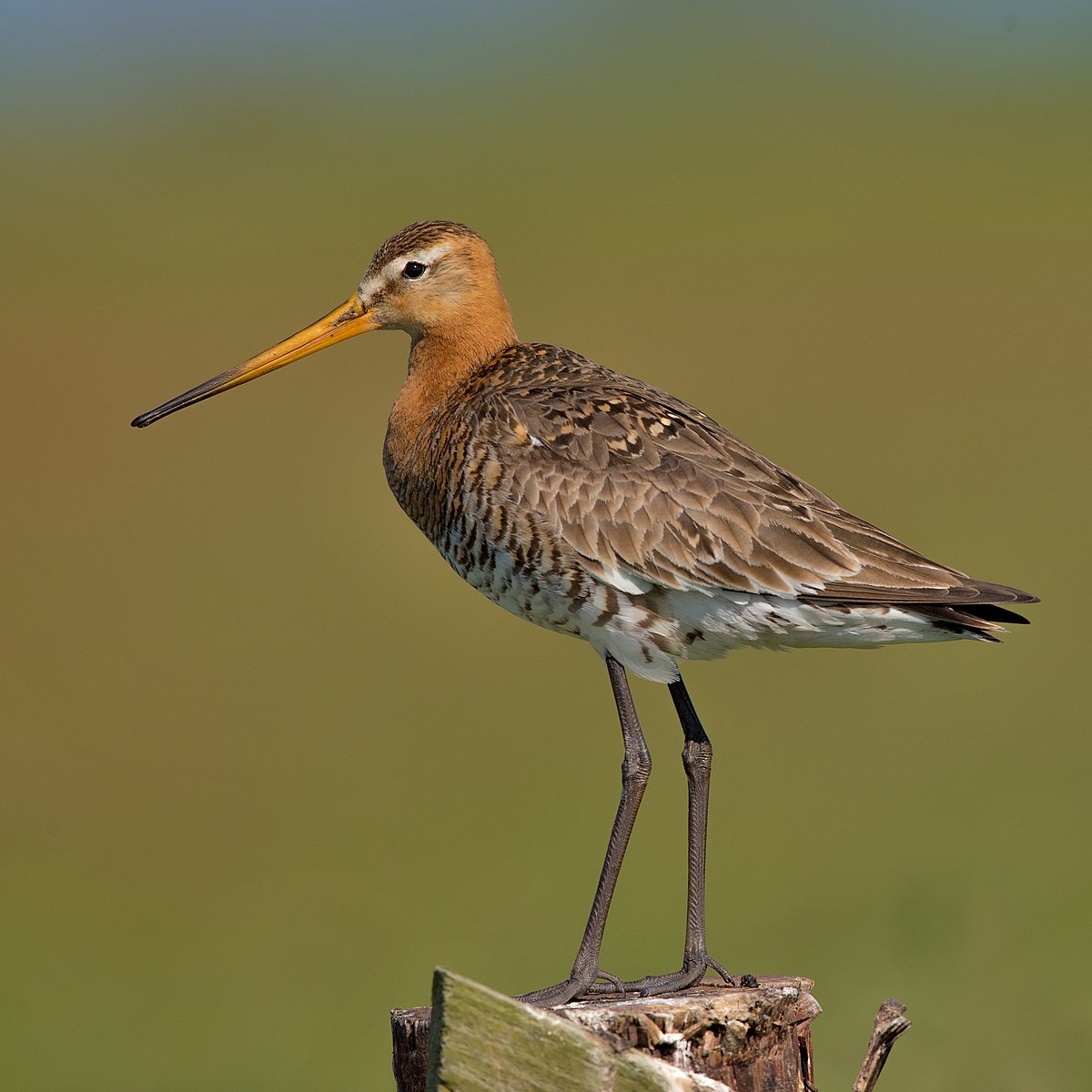
Wikipedia: Black-tailed godwit Source: OTHER
1200px-Black-tailed_Godwit_Uferschnepfe.jpg
This bird appears across the great seas in the following continents:
Europe, North America, Africa, Asia.
General: ![]() The black-tailed godwit (Limosa limosa) is a large, long-legged, long-billed shorebird first described by Carl Linnaeus in 1758. It is a member of the godwit genus, Limosa. There are three subspecies, all with orange head, neck and chest in breeding plumage and dull grey-brown winter coloration, and distinctive black and white wingbar at all times.
[more]
The black-tailed godwit (Limosa limosa) is a large, long-legged, long-billed shorebird first described by Carl Linnaeus in 1758. It is a member of the godwit genus, Limosa. There are three subspecies, all with orange head, neck and chest in breeding plumage and dull grey-brown winter coloration, and distinctive black and white wingbar at all times.
[more]
Habitats:
Wetland
Common redshank / Rotschenkel (Tringa totanus)
Profile Wikipedia eBird Vogelwarte BirdLife ZH ornitho.ch Xeno-Canto BirdID NABU
Common redshank plus common pochard. 2022-04-12 14.02.38 Mallorca
First observed in Mallorca on 2022-04-12.
![]() The common redshank or simply redshank (Tringa totanus) is a Eurasian wader in the large family Scolopacidae. The genus name Tringa is the New Latin name given to the green sandpiper by Aldrovandus in 1599 based on Ancient Greek trungas, a thrush-sized, white-rumped, tail-bobbing wading bird mentioned by Aristotle. The specific totanus is from Tótano, the Italian name for this bird.[2]
[more]
The common redshank or simply redshank (Tringa totanus) is a Eurasian wader in the large family Scolopacidae. The genus name Tringa is the New Latin name given to the green sandpiper by Aldrovandus in 1599 based on Ancient Greek trungas, a thrush-sized, white-rumped, tail-bobbing wading bird mentioned by Aristotle. The specific totanus is from Tótano, the Italian name for this bird.[2]
[more]
Vocalization: ![]() Generally a noisy and loud bird, especially at breeding ground. Most heard is a characteristic "tew-hoo", or "tew-hoo-hoo" with first syllable accentuated. No gap between the syllables like Greenshank, and usually with a marked falling pitch. [Link]
Generally a noisy and loud bird, especially at breeding ground. Most heard is a characteristic "tew-hoo", or "tew-hoo-hoo" with first syllable accentuated. No gap between the syllables like Greenshank, and usually with a marked falling pitch. [Link]
Song: ![]() Song similar to Wood Sandpiper, but with three accented notes in each cycle, not two. [Link]
Song similar to Wood Sandpiper, but with three accented notes in each cycle, not two. [Link]
Physical details: length=27-29 cm,
wingspan=59-66 cm,
weight=85-150 g
Habitats:
Wetland
Wood sandpiper / Bruchwasserläufer (Tringa glareola)
Profile Wikipedia eBird Vogelwarte BirdLife ZH ornitho.ch Audubon AllAboutBirds Xeno-Canto BirdID NABU

Wikipedia: Wood sandpiper Source: OTHER
1200px-Wood_Sandpiper_Safari_Park.jpg
First observed in 🇨🇭 on 2021-08-19.
This bird appears across the great seas in the following continents:
Europe, North America, Africa, Asia.
General: ![]() The wood sandpiper (Tringa glareola) is a small wader. This Eurasian species is the smallest of the shanks, which are mid-sized long-legged waders of the family Scolopacidae. The genus name Tringa is the New Latin name given to the green sandpiper by Aldrovandus in 1599 based on Ancient Greek trungas, a thrush-sized, white-rumped, tail-bobbing wading bird mentioned by Aristotle. The specific glareola is from Latin glarea, " gravel".[2]
[more]
The wood sandpiper (Tringa glareola) is a small wader. This Eurasian species is the smallest of the shanks, which are mid-sized long-legged waders of the family Scolopacidae. The genus name Tringa is the New Latin name given to the green sandpiper by Aldrovandus in 1599 based on Ancient Greek trungas, a thrush-sized, white-rumped, tail-bobbing wading bird mentioned by Aristotle. The specific glareola is from Latin glarea, " gravel".[2]
[more]
Vocalization: ![]() Totally different from Green Sandpiper. [Link]
Totally different from Green Sandpiper. [Link]
Calls: ![]() Flight call a soft, but explosive "whiff whiff" , sometimes with only one syllable. Display call similar to redshank but with only two accented beats; a fast melodious "dee-loo", repeated in cycles. [Link]
Flight call a soft, but explosive "whiff whiff" , sometimes with only one syllable. Display call similar to redshank but with only two accented beats; a fast melodious "dee-loo", repeated in cycles. [Link]
Physical details: length=19-21 cm,
wingspan=56-57 cm,
weight=50-80 g
Habitats:
Wetland
Call:
Automatically generated from Xeno-Canto recording
♫ Source: BirdNet
20210819_082604 birdnet 1940 - Wood Sandpiper, saw a bird flying, check reports in Ornitho - Wood Sandpiper - Uznach.mp3
2021-08-19 08.26.04 Uznach (song?)
Spotted redshank / Dunkler Wasserläufer (Tringa erythropus)
Profile Wikipedia eBird Vogelwarte BirdLife ZH ornitho.ch Xeno-Canto BirdID NABU
Dunkler Wasserlaeufer. 2021-10-24 10.25.42 Neeracherried
First observed in 🇨🇭 on 2021-10-24.
General: ![]() The spotted redshank (Tringa erythropus) is a wader (shorebird) in the large bird family Scolopacidae. The genus name Tringa is the New Latin name given to the green sandpiper by Aldrovandus in 1599 based on Ancient Greek trungas, a thrush-sized, white-rumped, tail-bobbing wading bird mentioned by Aristotle. The specific erythropus is from Ancient Greek eruthros, "red", and pous, "foot".[2]
[more]
The spotted redshank (Tringa erythropus) is a wader (shorebird) in the large bird family Scolopacidae. The genus name Tringa is the New Latin name given to the green sandpiper by Aldrovandus in 1599 based on Ancient Greek trungas, a thrush-sized, white-rumped, tail-bobbing wading bird mentioned by Aristotle. The specific erythropus is from Ancient Greek eruthros, "red", and pous, "foot".[2]
[more]
Calls: ![]() Flight call loud and diagnostic, and is often the first sign of the species' presence; a sharp and short, disyllabic "koo-eett", with the first syllable falling in pitch and the second rising sharply. Display call a squeaky, but melodic "krroo-lee-ooo" repeated in cycles. Alarm call a falcon-like "ke-ke-ke-ke". [Link]
Flight call loud and diagnostic, and is often the first sign of the species' presence; a sharp and short, disyllabic "koo-eett", with the first syllable falling in pitch and the second rising sharply. Display call a squeaky, but melodic "krroo-lee-ooo" repeated in cycles. Alarm call a falcon-like "ke-ke-ke-ke". [Link]
Physical details: length=29-31 cm,
wingspan=61-67 cm,
weight=125-210 g
Habitats:
Wetland
Marsh sandpiper / Teichwasserläufer (Tringa stagnatilis)
Profile Wikipedia eBird Vogelwarte BirdLife ZH ornitho.ch Xeno-Canto BirdID NABU

Wikipedia: Marsh sandpiper Source: OTHER
1200px-Tringa_stagnatilis_2_-_Laem_Pak_Bia.jpg
General: ![]() The marsh sandpiper (Tringa stagnatilis) is a small wader. It is a rather small shank, and breeds in open grassy steppe and taiga wetlands from easternmost Europe to the Russian Far East. The genus name Tringa is the New Latin name given to the green sandpiper by Aldrovandus in 1599 based on Ancient Greek trungas, a thrush-sized, white-rumped, tail-bobbing wading bird mentioned by Aristotle. The specific stagnatilis is from Latin stagnum, "swamp".[2]
[more]
The marsh sandpiper (Tringa stagnatilis) is a small wader. It is a rather small shank, and breeds in open grassy steppe and taiga wetlands from easternmost Europe to the Russian Far East. The genus name Tringa is the New Latin name given to the green sandpiper by Aldrovandus in 1599 based on Ancient Greek trungas, a thrush-sized, white-rumped, tail-bobbing wading bird mentioned by Aristotle. The specific stagnatilis is from Latin stagnum, "swamp".[2]
[more]
Song: ![]() Song a slow, melancholic whistle "tu-lee-uu", with the middle part highest in pitch (and with falling glissando). Similar to Spotted Redshank in structure, but with a clear tone (little risk of confusion). [Link]
Song a slow, melancholic whistle "tu-lee-uu", with the middle part highest in pitch (and with falling glissando). Similar to Spotted Redshank in structure, but with a clear tone (little risk of confusion). [Link]
Calls: ![]() Flight call/contact call similar to singular instances of alarm call of Redshank, consisting of a single note rising abruptly in pitch in a split second and then falling; "kieew". Lingers a bit at the ending of the note, giving it a clearer glissando than in Redshank. [Link]
Flight call/contact call similar to singular instances of alarm call of Redshank, consisting of a single note rising abruptly in pitch in a split second and then falling; "kieew". Lingers a bit at the ending of the note, giving it a clearer glissando than in Redshank. [Link]
Physical details: length=22-24 cm,
wingspan=55-59 cm,
weight=50-85 g
Common greenshank / Grünschenkel (Tringa nebularia)
Profile Wikipedia eBird Vogelwarte BirdLife ZH ornitho.ch Audubon AllAboutBirds Xeno-Canto BirdID NABU
MerlinBirdID says common greenshank, probably non-breeding adult. 2022-04-12 14.52.08 Mallorca
First observed in Mallorca on 2022-04-12.
This bird appears across the great seas in the following continents:
Europe, North America, Africa, Asia.
General: ![]() The common greenshank (Tringa nebularia) is a wader in the large family Scolopacidae, the typical waders. The genus name Tringa is the New Latin name given to the green sandpiper by Aldrovandus in 1599 based on Ancient Greek trungas, a thrush-sized, white-rumped, tail-bobbing wading bird mentioned by Aristotle. The specific nebularia is from Latin nebula "mist". Like the Norwegian Skoddefoll, this refers to the greenshank's damp marshy habitat.[2]
[more]
The common greenshank (Tringa nebularia) is a wader in the large family Scolopacidae, the typical waders. The genus name Tringa is the New Latin name given to the green sandpiper by Aldrovandus in 1599 based on Ancient Greek trungas, a thrush-sized, white-rumped, tail-bobbing wading bird mentioned by Aristotle. The specific nebularia is from Latin nebula "mist". Like the Norwegian Skoddefoll, this refers to the greenshank's damp marshy habitat.[2]
[more]
Vocalization: ![]() Most heard is a characteristic, trisyllabic "tew-tew-tew" (sometimes two or four syllables). Can resemble redshank, but pitch more stable, and not falling notably. Each syllable is clearly separated and equally emphasized. [Link]
Most heard is a characteristic, trisyllabic "tew-tew-tew" (sometimes two or four syllables). Can resemble redshank, but pitch more stable, and not falling notably. Each syllable is clearly separated and equally emphasized. [Link]
Song: ![]() Song a clear disyllabic "cloo-eeee", repeated in cycles but each phrase clearly separated. At close range a short creaky sound is audible (between each phrase). Redshank may sing in a slightly similar way, but in continuous, linked phrases. [Link]
Song a clear disyllabic "cloo-eeee", repeated in cycles but each phrase clearly separated. At close range a short creaky sound is audible (between each phrase). Redshank may sing in a slightly similar way, but in continuous, linked phrases. [Link]
Physical details: length=30-33 cm,
wingspan=68-70 cm,
weight=130-270 g
Habitats:
Wetland
Grey-tailed tattler / Grauschwanzwasserläufer (Tringa brevipes)

Wikipedia: Grey-tailed tattler Source: OTHER
Tringa_brevipes2.jpg
This bird appears across the great seas in the following continents:
North America, Asia, Australia.
General: ![]() The grey-tailed tattler or Polynesian tattler,[2] Tringa brevipes (formerly Heteroscelus brevipes[3][4]) is a small, foraging shorebird in the genus Tringa. The English name for the tattlers refers to their noisy call.[5] The genus name Tringa is the New Latin name given to the green sandpiper by Aldrovandus in 1599 based on Ancient Greek trungas, a thrush-sized, white-rumped, tail-bobbing wading bird mentioned by Aristotle. The specific brevipes is from Latin brevis, "short", and pes, "foot".[6]
[more]
The grey-tailed tattler or Polynesian tattler,[2] Tringa brevipes (formerly Heteroscelus brevipes[3][4]) is a small, foraging shorebird in the genus Tringa. The English name for the tattlers refers to their noisy call.[5] The genus name Tringa is the New Latin name given to the green sandpiper by Aldrovandus in 1599 based on Ancient Greek trungas, a thrush-sized, white-rumped, tail-bobbing wading bird mentioned by Aristotle. The specific brevipes is from Latin brevis, "short", and pes, "foot".[6]
[more]
Nordmann's greenshank / Tüpfelgrünschenkel (Tringa guttifer)

Wikipedia: Nordmann's greenshank Source: OTHER
Spotted_Greenshank.jpg
vagrant
Terek sandpiper / Terekwasserläufer (Xenus cinereus)
Profile Wikipedia eBird Audubon AllAboutBirds Xeno-Canto NABU

Wikipedia: Terek sandpiper Source: OTHER
Xenus_cinereus_%28Alnus%29.jpg
This bird appears across the great seas in the following continents:
Europe, North America, Africa, Asia.
General: ![]() The Terek sandpiper (Xenus cinereus) is a small migratory Palearctic wader species and is the only member of the genus Xenus. It is named after the Terek River which flows into the west of the Caspian Sea, as it was first observed around this area.[2] The genus name Xenus is from Ancient Greek xenos stranger, and cinereus is Latin for "ash-grey" from cinis, cineris, "ashes".[3]
[more]
The Terek sandpiper (Xenus cinereus) is a small migratory Palearctic wader species and is the only member of the genus Xenus. It is named after the Terek River which flows into the west of the Caspian Sea, as it was first observed around this area.[2] The genus name Xenus is from Ancient Greek xenos stranger, and cinereus is Latin for "ash-grey" from cinis, cineris, "ashes".[3]
[more]
Common sandpiper / Flussuferläufer (Actitis hypoleucos)
MerlinBirdID meint Flussuferläufer. 2022-09-04 07.49.06 Neeracherried
First observed in 🇨🇭 on 2022-09-04.
This bird appears across the great seas in the following continents:
Europe, North America, Africa, Asia.
![]() The common sandpiper (Actitis hypoleucos) is a small Palearctic wader. This bird and its American sister species, the spotted sandpiper (A. macularia), make up the genus Actitis. They are parapatric and replace each other geographically; stray birds of either species may settle down with breeders of the other and hybridize. Hybridization has also been reported between the common sandpiper and the green sandpiper, a basal species of the closely related shank genus Tringa.
[more]
The common sandpiper (Actitis hypoleucos) is a small Palearctic wader. This bird and its American sister species, the spotted sandpiper (A. macularia), make up the genus Actitis. They are parapatric and replace each other geographically; stray birds of either species may settle down with breeders of the other and hybridize. Hybridization has also been reported between the common sandpiper and the green sandpiper, a basal species of the closely related shank genus Tringa.
[more]
Calls: ![]() Very vocal with characteristic repertoire of very high-pitched calls. Often heard is a disyllabic call, drawn out and slightly rising in pitch in the second part. This is often repeated in a series of rising tones in a cyclic manner, with approx 5 tones in each cycle. [Link]
Very vocal with characteristic repertoire of very high-pitched calls. Often heard is a disyllabic call, drawn out and slightly rising in pitch in the second part. This is often repeated in a series of rising tones in a cyclic manner, with approx 5 tones in each cycle. [Link]
Physical details: length=19-21 cm,
wingspan=38-41 cm,
weight=40-60 g
Habitats:
Wetland
Red-necked phalarope / Odinshühnchen (Phalaropus lobatus)
Profile Wikipedia eBird Audubon AllAboutBirds Xeno-Canto NABU
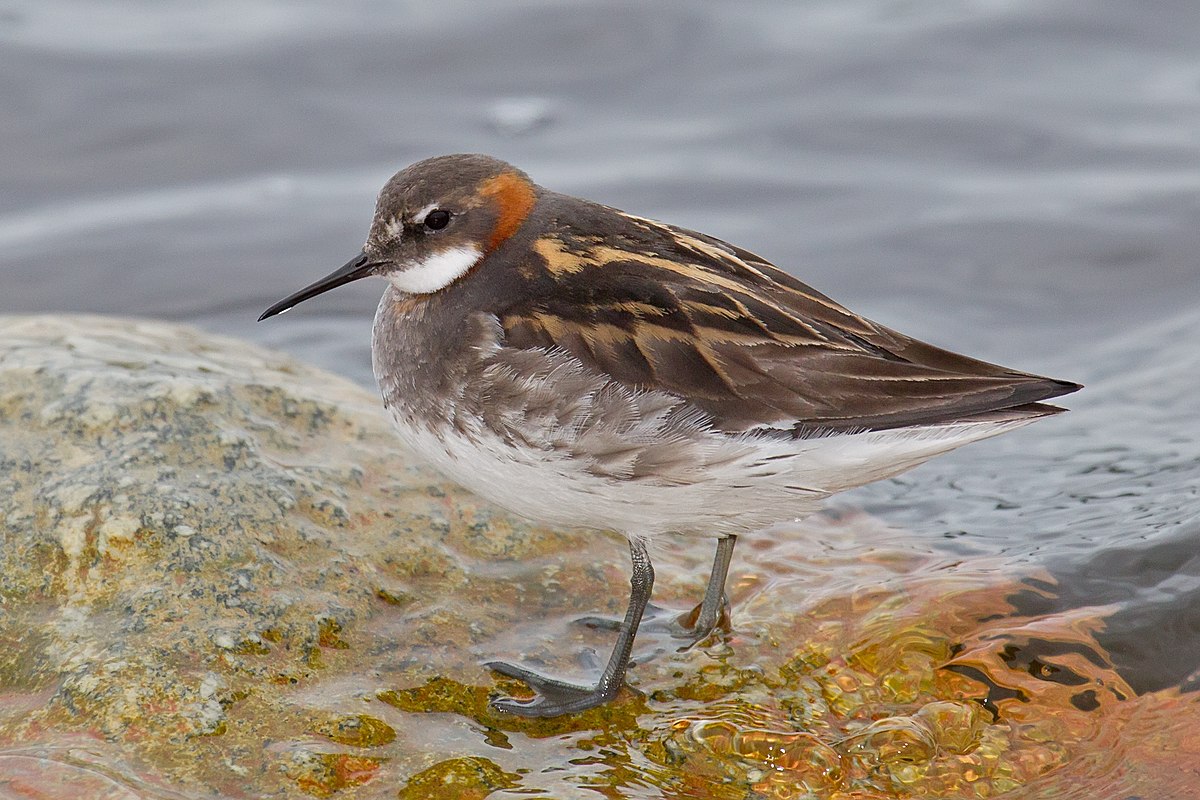
Wikipedia: Red-necked phalarope Source: OTHER
1200px-Red-necked_Phalarope.jpg
This bird appears across the great seas in the following continents:
Europe, North America, South America, Africa, Asia.
General: ![]() The red-necked phalarope (Phalaropus lobatus), also known as the northern phalarope and hyperborean phalarope,[2] is a small wader. This phalarope breeds in the Arctic regions of North America and Eurasia. It is migratory, and, unusually for a wader, winters at sea on tropical oceans.
[more]
The red-necked phalarope (Phalaropus lobatus), also known as the northern phalarope and hyperborean phalarope,[2] is a small wader. This phalarope breeds in the Arctic regions of North America and Eurasia. It is migratory, and, unusually for a wader, winters at sea on tropical oceans.
[more]
Common tern / Flussseeschwalbe (Sterna hirundo)
Profile Wikipedia eBird Vogelwarte BirdLife ZH ornitho.ch bird-song.ch Audubon AllAboutBirds Xeno-Canto BirdID NABU
First observed in 🇨🇭 on 2020-04-27.
This bird appears across the great seas in the following continents:
Europe, North America, South America, Africa, Asia.
Seasonal Behavior: ![]() Die Flussseeschwalbe (Sterna hirundo) ist eine Vogelart aus der Familie der Seeschwalben (Sternidae).
Sie ist in Mitteleuropa ein verbreiteter, aber nicht sehr häufiger Brut- und Sommervogel.
Während der Zugzeiten können im mitteleuropäischen Raum außerdem viele Durchzügler beobachtet werden. [Link]
Die Flussseeschwalbe (Sterna hirundo) ist eine Vogelart aus der Familie der Seeschwalben (Sternidae).
Sie ist in Mitteleuropa ein verbreiteter, aber nicht sehr häufiger Brut- und Sommervogel.
Während der Zugzeiten können im mitteleuropäischen Raum außerdem viele Durchzügler beobachtet werden. [Link]
Vocalization: ![]() Similar to Arctic Tern but deeper. [Link]
Similar to Arctic Tern but deeper. [Link]
Calls: ![]() Lacks latter's high pitched "tip-tip-tip" call, and the drawn out "kree-aaahh" call falls more distinctly in pitch. [Link]
Lacks latter's high pitched "tip-tip-tip" call, and the drawn out "kree-aaahh" call falls more distinctly in pitch. [Link]
Physical details: length=31-35 cm,
wingspan=77-98 cm,
weight=110-150 g
Habitats:
River and lake
Call:
Automatically generated from Xeno-Canto recording
♫ Source: BirdNet
20200427_140813 birdnet 430 - Common tern.mp3
2020-04-27 14.08.13 Luppmen (song?)
Black-naped tern / Schwarznacken-Seeschwalbe (Sterna sumatrana)
Profile Wikipedia eBird Xeno-Canto
Wikipedia: Black-naped tern Source: OTHER
Black-naped_Tern_LEI.JPG
General: ![]() The black-naped tern (Sterna sumatrana) is an oceanic tern mostly found in tropical and subtropical areas of the Pacific and Indian Oceans. It is rarely found inland.
[more]
The black-naped tern (Sterna sumatrana) is an oceanic tern mostly found in tropical and subtropical areas of the Pacific and Indian Oceans. It is rarely found inland.
[more]
Roseate tern / Rosenseeschwalbe (Sterna dougallii)
Profile Wikipedia eBird Audubon AllAboutBirds Xeno-Canto BirdID NABU

Wikipedia: Roseate tern Source: OTHER
1200px-Roseate_terns_Palometas.jpg
This bird appears across the great seas in the following continents:
Europe, North America, Africa, Asia.
![]() The roseate tern (Sterna dougallii) is a tern in the family Laridae. The genus name Sterna is derived from Old English "stearn", "tern",[2] and the specific dougallii refers to Scottish physician and collector Dr Peter McDougall (1777–1814).[3] "Roseate" refers to the bird's pink breast in breeding plumage.[4]
[more]
The roseate tern (Sterna dougallii) is a tern in the family Laridae. The genus name Sterna is derived from Old English "stearn", "tern",[2] and the specific dougallii refers to Scottish physician and collector Dr Peter McDougall (1777–1814).[3] "Roseate" refers to the bird's pink breast in breeding plumage.[4]
[more]
Calls: ![]() Extremely harsh calls. Like mix of Caspian and Arctic Tern. Very hard and raspy "kreeeet", harder and higher pitched than Caspian Tern, but equally harsh. Other calls include more Arctic/Common tern-like short "kek", and similar. [Link]
Extremely harsh calls. Like mix of Caspian and Arctic Tern. Very hard and raspy "kreeeet", harder and higher pitched than Caspian Tern, but equally harsh. Other calls include more Arctic/Common tern-like short "kek", and similar. [Link]
Physical details: length=33-38 cm,
wingspan=72-80 cm,
weight=92-133 g
Lesser crested tern (alternate) (Sterna bengalensis)
Andalusian buttonquail (Turnix sylvaticus)
Barred buttonquail (Turnix suscitator)
Profile Wikipedia eBird Xeno-Canto

Wikipedia: Barred buttonquail Source: OTHER
Barred_Button_quail_or_Common_Bustard-Quail_%28Turnix_suscitatior%29_Photograph_By_Shantanu_Kuveskar.jpg
Oriental pratincole / Orientbrachschwalbe (Glareola maldivarum)
Profile Wikipedia eBird Xeno-Canto

Wikipedia: Oriental pratincole Source: OTHER
1200px-Glareola_maldivarum_-_Beung_Borapet.jpg
General: ![]() The oriental pratincole (Glareola maldivarum), also known as the grasshopper-bird or swallow-plover, is a wader in the pratincole family, Glareolidae.
[more]
The oriental pratincole (Glareola maldivarum), also known as the grasshopper-bird or swallow-plover, is a wader in the pratincole family, Glareolidae.
[more]
Family Burhinidae (Triele, Haematopodidae – Austernfischer und Recurvirostridae – Säbelschnäblerverwandte):
Beach stone-curlew / Rifftriel (Burhinus grallarius)
Probably a bush thick-knee at Sydney zoo. 2008-01-10 13.15.24 Australia
First observed in Australia on 2008-01-10.
![]() The beach stone-curlew (Esacus magnirostris) also known as beach thick-knee is a large, ground-dwelling bird that occurs in Australasia, the islands of South-east Asia. At 55 cm (22 in) and 1 kg (2.2 lb), it is one of the world's largest shorebirds. At a mean of 1,032 g (2.275 lb) in males and 1,000 g (2.2 lb) in females, it is the heaviest living member of the Charadriiformes outside of the gull and skua families.[2]
[more]
The beach stone-curlew (Esacus magnirostris) also known as beach thick-knee is a large, ground-dwelling bird that occurs in Australasia, the islands of South-east Asia. At 55 cm (22 in) and 1 kg (2.2 lb), it is one of the world's largest shorebirds. At a mean of 1,032 g (2.275 lb) in males and 1,000 g (2.2 lb) in females, it is the heaviest living member of the Charadriiformes outside of the gull and skua families.[2]
[more]
Black-winged stilt / Stelzenläufer (Himantopus himantopus)
Profile Wikipedia eBird Vogelwarte BirdLife ZH ornitho.ch Xeno-Canto NABU
Black winged stilt. 2024-02-24 09.29.24 Laos
First observed in Mallorca on 2022-04-12.
![]() The black-winged stilt (Himantopus himantopus) is a widely distributed very long-legged wader in the avocet and stilt family (Recurvirostridae). The scientific name H. himantopus was formerly applied to a single, almost cosmopolitan species. It is now normally applied to the form that is widespread in Eurosiberia and Africa and which was formerly regarded as the nominate subspecies of Himantopus himantopus sensu lato. The scientific name Himantopus comes from the Greek meaning "strap foot" or "thong foot".[2] Most sources today accept 2–4 species.[3][4][5][6][7][8] It is sometimes called pied stilt, but that name is now reserved for the Australian species, Himantopus leucocephalus.
[more]
The black-winged stilt (Himantopus himantopus) is a widely distributed very long-legged wader in the avocet and stilt family (Recurvirostridae). The scientific name H. himantopus was formerly applied to a single, almost cosmopolitan species. It is now normally applied to the form that is widespread in Eurosiberia and Africa and which was formerly regarded as the nominate subspecies of Himantopus himantopus sensu lato. The scientific name Himantopus comes from the Greek meaning "strap foot" or "thong foot".[2] Most sources today accept 2–4 species.[3][4][5][6][7][8] It is sometimes called pied stilt, but that name is now reserved for the Australian species, Himantopus leucocephalus.
[more]
Habitats:
Wetland
Call:
Automatically generated from Xeno-Canto recording
♫ XC863470 - Black-winged Stilt - Himantopus himantopus - flight call, a squeaky yapping - Camargue, France. Source: XENOCANTO
XC863470 - Black-winged Stilt - Himantopus himantopus - flight call, a squeaky yapping - Camargue, France.mp3
(flight call)

Call attributes:
flight call Frequency: ,
Common moorhen / Teichhuhn (Gallinula chloropus)
Teichhuhn bei Rapperswil 2021-02-12 12.54.22 Rapperswil
First observed in 🇨🇭 on 2021-02-12.
This bird appears across the great seas in the following continents:
Europe, North America, Africa, Asia.
Seen at the Pfäffikersee walking across the path from one set of reeds to another.
An apprentice at the nature center gave us the identification, presuming it was a juvenile
because of the lack of color. I'd have said its legs were shorter, but the moorhen definitely
has the main trait we saw, that it holds its short tail in the air.
Habitat: ![]() Common Moorhens prefer to nest in the thicket on the edge of ponds, lakes or rivers and mostly only give themselves away through their guttural calls. They are easier to observe in winter because then they leave their well-vegetated habitat and are seen in meadows, parks and on open waters. [Link]
Common Moorhens prefer to nest in the thicket on the edge of ponds, lakes or rivers and mostly only give themselves away through their guttural calls. They are easier to observe in winter because then they leave their well-vegetated habitat and are seen in meadows, parks and on open waters. [Link]
Song: ![]() Most typical is the territorial call (song); a sharp, loud and resonant "krrrr-ook" or "krrrk". [Link]
Most typical is the territorial call (song); a sharp, loud and resonant "krrrr-ook" or "krrrk". [Link]
Calls: ![]() Rich repertoire of loud calls and softer sounds. Other calls; a sharp, three or four-syllable "kekeke", and a soft "wep" sometimes drawn-out in a more mewing version. [Link]
Rich repertoire of loud calls and softer sounds. Other calls; a sharp, three or four-syllable "kekeke", and a soft "wep" sometimes drawn-out in a more mewing version. [Link]
Physical details: length=32-35 cm,
wingspan=50-55 cm,
weight=240-420 g
Habitats:
Wetland
Buff-banded rail (Gallirallus philippensis)

Wikipedia: Buff-banded rail Source: OTHER
1200px-Buff-banded_Rail_1_-_Newington.jpg
This bird appears across the great seas in the following continents:
North America, Asia, Australia.
General: ![]() The buff-banded rail (Hypotaenidia philippensis) is a distinctively coloured, highly dispersive, medium-sized rail of the rail family, Rallidae. This species comprises several subspecies found throughout much of Australasia and the south-west Pacific region, including the Philippines (where it is known as tikling), New Guinea, Australia, New Zealand (where it is known as the banded rail or moho-pererū in Māori),[2] and numerous smaller islands, covering a range of latitudes from the tropics to the Subantarctic.
[more]
The buff-banded rail (Hypotaenidia philippensis) is a distinctively coloured, highly dispersive, medium-sized rail of the rail family, Rallidae. This species comprises several subspecies found throughout much of Australasia and the south-west Pacific region, including the Philippines (where it is known as tikling), New Guinea, Australia, New Zealand (where it is known as the banded rail or moho-pererū in Māori),[2] and numerous smaller islands, covering a range of latitudes from the tropics to the Subantarctic.
[more]
Slaty-breasted rail / Graubrustralle (Gallirallus striatus)
Profile Wikipedia eBird Xeno-Canto

Wikipedia: Slaty-breasted rail Source: OTHER
Slaty-breasted_Rail_Gallirallus_striatus_photographed_in_Malaysia_in_2013_by_Devon_Pike.jpg
Baillon's crake (alternate) / Zwergsumpfhuhn (Porzana pusilla)
Habitats:
Wetland
Ruddy-breasted crake (alternate) / Zimtsumpfhuhn (Porzana fusca)
White-browed crake (alternate) (Porzana cinerea)
White-breasted waterhen (Amaurornis phoenicurus)

Wikipedia: White-breasted waterhen Source: OTHER
1200px-Amaurornis_phoenicurus_-_Singapore_Botanic_Gardens.jpg
vagrant, Christmas Island, Cocos (Keeling) Islands
Watercock / Schildralle (Gallicrex cinerea)
Profile Wikipedia eBird Xeno-Canto

Wikipedia: Watercock Source: OTHER
Gallicrex_cinerea_-Basai_Wetlands%2C_near_Gurgaon%2C_Haryana%2C_India-8.jpg
vagrant, Christmas Island, Cocos (Keeling) Islands & Ashmore Reef
Slaty-legged crake (Rallina eurizonoides)
Profile Wikipedia eBird Xeno-Canto

Wikipedia: Slaty-legged crake Source: OTHER
Slaty-legged_crake_%28Rallina_eurizonoides%29_Photograph_by_Shantanu_Kuveskar.jpg
Maeusebussard. 2020-04-17 08.14.46 Wald Fehraltorf
First observed in 🇨🇭 on 2020-04-17.
This bird appears across the great seas in the following continents:
Europe, North America, Africa, Asia.
General: ![]() The common buzzard (Buteo buteo) is a medium-to-large bird of prey which has a large range. A member of the genus Buteo, it is a member of the family Accipitridae. The species lives in most of Europe and extends its breeding range across much of the Palearctic as far as the northwestern China (Tien Shan), far western Siberia and northwestern Mongolia.[1][2] Over much of its range, it is a year-round resident. However, buzzards from the colder parts of the Northern Hemisphere as well as those that breed in the eastern part of their range typically migrate south for the northern winter, many journeying as far as South Africa.[3] The common buzzard is an opportunistic predator that can take a wide variety of prey, but it feeds mostly on small mammals, especially rodents such as voles. It typically hunts from a perch.[4] Like most accipitrid birds of prey, it builds a nest, typically in trees in this species, and is a devoted parent to a relatively small brood of young.[2] The common buzzard appears to be the most common diurnal raptor in Europe, as estimates of its total global population run well into the millions.[2][5]
[more]
The common buzzard (Buteo buteo) is a medium-to-large bird of prey which has a large range. A member of the genus Buteo, it is a member of the family Accipitridae. The species lives in most of Europe and extends its breeding range across much of the Palearctic as far as the northwestern China (Tien Shan), far western Siberia and northwestern Mongolia.[1][2] Over much of its range, it is a year-round resident. However, buzzards from the colder parts of the Northern Hemisphere as well as those that breed in the eastern part of their range typically migrate south for the northern winter, many journeying as far as South Africa.[3] The common buzzard is an opportunistic predator that can take a wide variety of prey, but it feeds mostly on small mammals, especially rodents such as voles. It typically hunts from a perch.[4] Like most accipitrid birds of prey, it builds a nest, typically in trees in this species, and is a devoted parent to a relatively small brood of young.[2] The common buzzard appears to be the most common diurnal raptor in Europe, as estimates of its total global population run well into the millions.[2][5]
[more]
Vocalization: ![]() Quite vocal. [Link]
Quite vocal. [Link]
Calls: ![]() Most typical call a wailing, mewing "peeoooo". Quite similar to Rough-legged Buzzard, but the pitch falls more rapidly and is then sustained for the last part of the call. [Link]
Most typical call a wailing, mewing "peeoooo". Quite similar to Rough-legged Buzzard, but the pitch falls more rapidly and is then sustained for the last part of the call. [Link]
Physical details: length=51-57 cm,
wingspan=113-128 cm,
weight=550-1300 g
Habitats:
Agricultural
Call:
Automatically generated from Xeno-Canto recording
♫ Source: BirdNet
20210421_090653 birdnet 1464 - Common Buzzard - 2021-04-21 09:06:53 - Common Buzzard - Fehraltorf.mp3
2021-04-21 09.06.53 Fehraltorf (song?)
Wikipedia: Chinese goshawk Source: OTHER
Juvenile_Chinese_Sparrowhawk_in_flight.JPG
vagrant, Cocos (Keeling) Islands & Ashmore Reef
Profile Wikipedia eBird Xeno-Canto

Wikipedia: Japanese sparrowhawk Source: OTHER
1200px-20100710_tumi_nagoya_03.jpg
vagrant, Cocos (Keeling) Islands & Ashmore Reef

Wikipedia: Crested goshawk Source: OTHER
Accipiter_trivirgatus_PA273291.jpg
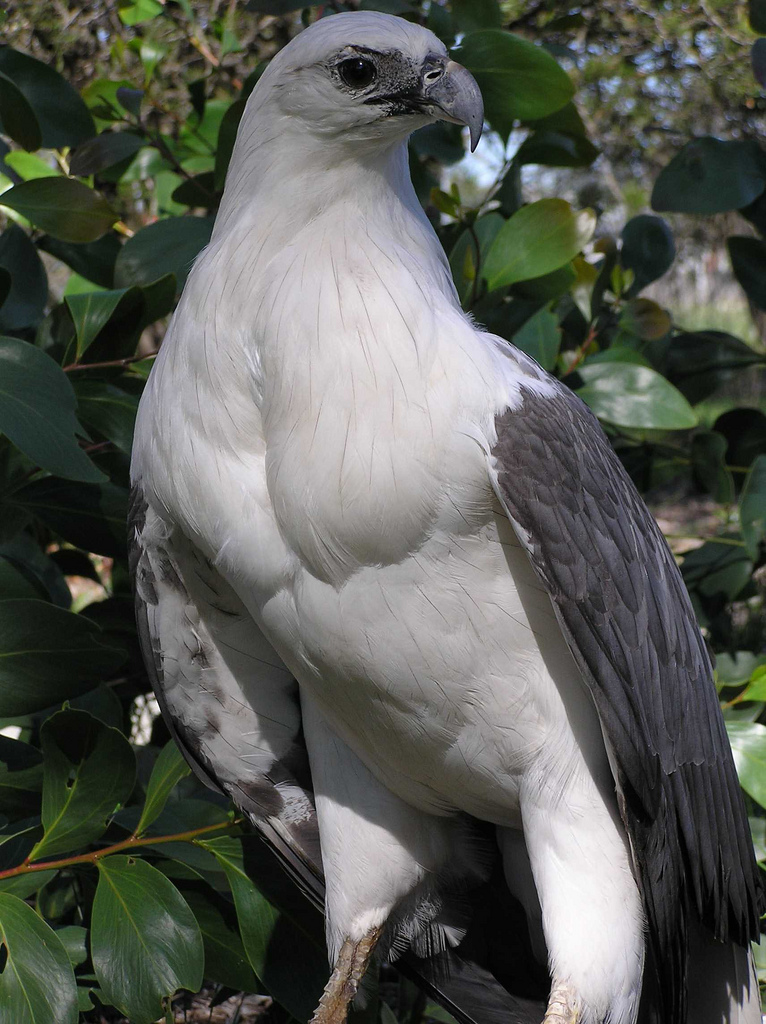
Wikipedia: White-bellied sea eagle Source: OTHER
Haliaeetus_leucogaster_-Gippsland%2C_Victoria%2C_Australia-8.jpg
General: ![]() The white-bellied sea eagle (Haliaeetus leucogaster), also known as the white-breasted sea eagle, is a large diurnal bird of prey in the family Accipitridae. Originally described by Johann Friedrich Gmelin in 1788, it is closely related to Sanford's sea eagle of the Solomon Islands, and the two are considered a superspecies. A distinctive bird, the adult white-bellied sea eagle has a white head, breast, under-wing coverts and tail. The upper parts are grey and the black under-wing flight feathers contrast with the white coverts. The tail is short and wedge-shaped as in all Haliaeetus species. Like many raptors, the female is slightly larger than the male, and can measure up to 90 cm (35 in) long with a wingspan of up to 2.2 m (7.2 ft), and weigh 4.5 kg (9.9 lb). Immature birds have brown plumage, which is gradually replaced by white until the age of five or six years. The call is a loud goose-like honking.
[more]
The white-bellied sea eagle (Haliaeetus leucogaster), also known as the white-breasted sea eagle, is a large diurnal bird of prey in the family Accipitridae. Originally described by Johann Friedrich Gmelin in 1788, it is closely related to Sanford's sea eagle of the Solomon Islands, and the two are considered a superspecies. A distinctive bird, the adult white-bellied sea eagle has a white head, breast, under-wing coverts and tail. The upper parts are grey and the black under-wing flight feathers contrast with the white coverts. The tail is short and wedge-shaped as in all Haliaeetus species. Like many raptors, the female is slightly larger than the male, and can measure up to 90 cm (35 in) long with a wingspan of up to 2.2 m (7.2 ft), and weigh 4.5 kg (9.9 lb). Immature birds have brown plumage, which is gradually replaced by white until the age of five or six years. The call is a loud goose-like honking.
[more]

Wikipedia: Brahminy kite Source: OTHER
1200px-Haliastur_indus_-Karratha%2C_Pilbara%2C_Western_Australia%2C_Australia-8_%281%29.jpg
![]() The brahminy kite (Haliastur indus), formerly known as the red-backed sea-eagle in Australia, is a medium-sized bird of prey in the family Accipitridae, which also includes many other diurnal raptors, such as eagles, buzzards, and harriers. They are found in the Indian subcontinent, Southeast Asia, and Australia. They are found mainly on the coast and in inland wetlands, where they feed on dead fish and other prey. Adults have a reddish-brown body plumage contrasting with their white head and breast which make them easy to distinguish from other birds of prey.
[more]
The brahminy kite (Haliastur indus), formerly known as the red-backed sea-eagle in Australia, is a medium-sized bird of prey in the family Accipitridae, which also includes many other diurnal raptors, such as eagles, buzzards, and harriers. They are found in the Indian subcontinent, Southeast Asia, and Australia. They are found mainly on the coast and in inland wetlands, where they feed on dead fish and other prey. Adults have a reddish-brown body plumage contrasting with their white head and breast which make them easy to distinguish from other birds of prey.
[more]
Profile Wikipedia eBird Vogelwarte BirdLife ZH ornitho.ch bird-song.ch Xeno-Canto BirdID NABU

Black kite in the air and on the ground Source: WIKIPEDIA
Wikimedia Black_Kite_(Milvus_migrans).jpg
First observed in 🇨🇭 on 2021-04-03.
This is on my list of birds to find, as it is supposed to be exist in this area,but I've never identified one. Their call (see Vogelwarte link) is a rapid sequence of whistles,
and definitely distinct from that of the red kites.
Visually they are harder to tell apart, but if you look closely, it should be clear:
the black kite has less of a V in its tail and no big white patch at the wingtips.
birdguides.com has a guide to distinguishing black and red kites, and says black are much rarer,
but that is not true in Switzerland -
Vogelwarte.ch says Switzerland has 2800–3500 red kites and 2000-3000 black kites.
Tenatively identified one flying high over Lake Lugano at San Salvatore in Ticino.
Often near water.
Vocalization: ![]() A piercing, first ascending then descending long "piuuu". Starting as a clear tone then gradually taking on a vibrating character that differs from Red Kite. Also a sharp "kieee -ki- ki-ki". More vocal than Red Kite. [Link]
A piercing, first ascending then descending long "piuuu". Starting as a clear tone then gradually taking on a vibrating character that differs from Red Kite. Also a sharp "kieee -ki- ki-ki". More vocal than Red Kite. [Link]
Physical details: length=55-60 cm,
wingspan=160-180 cm,
weight=630-941 g
Habitats:
Agricultural
Call:
Automatically generated from Xeno-Canto recording
♫ Source: BirdNet
20210814_093255 birdnet 1932 - Wild guess was once black kite, check - Not analyzed - Volketswil.mp3
2021-08-14 09.32.55 (song?)
Crested serpent-eagle, Siem Reap, Cambodia. 2024-03-02 11.10.12 Cambodia
First observed in Laos on 2024-02-10.
Song:
Automatically generated from Xeno-Canto recording
Song attributes:
Frequency:
♫ XC809894 - Crested Serpent Eagle - Spilornis cheela - song - Lumbini Province, Nepal. Source: XENOCANTO
XC809894 - Crested Serpent Eagle - Spilornis cheela - song - Lumbini Province, Nepal.mp3
(song)

Call:
Automatically generated from Xeno-Canto recording
♫ XC762002 - Crested Serpent Eagle - Spilornis cheela - alarm call, Shanghai Zoo, Shanghai Shi, China. Source: XENOCANTO
XC762002 - Crested Serpent Eagle - Spilornis cheela - alarm call, Shanghai Zoo, Shanghai Shi, China.mp3
(alarm call)

Call attributes:
alarm call Frequency: ,
Profile Wikipedia eBird Xeno-Canto
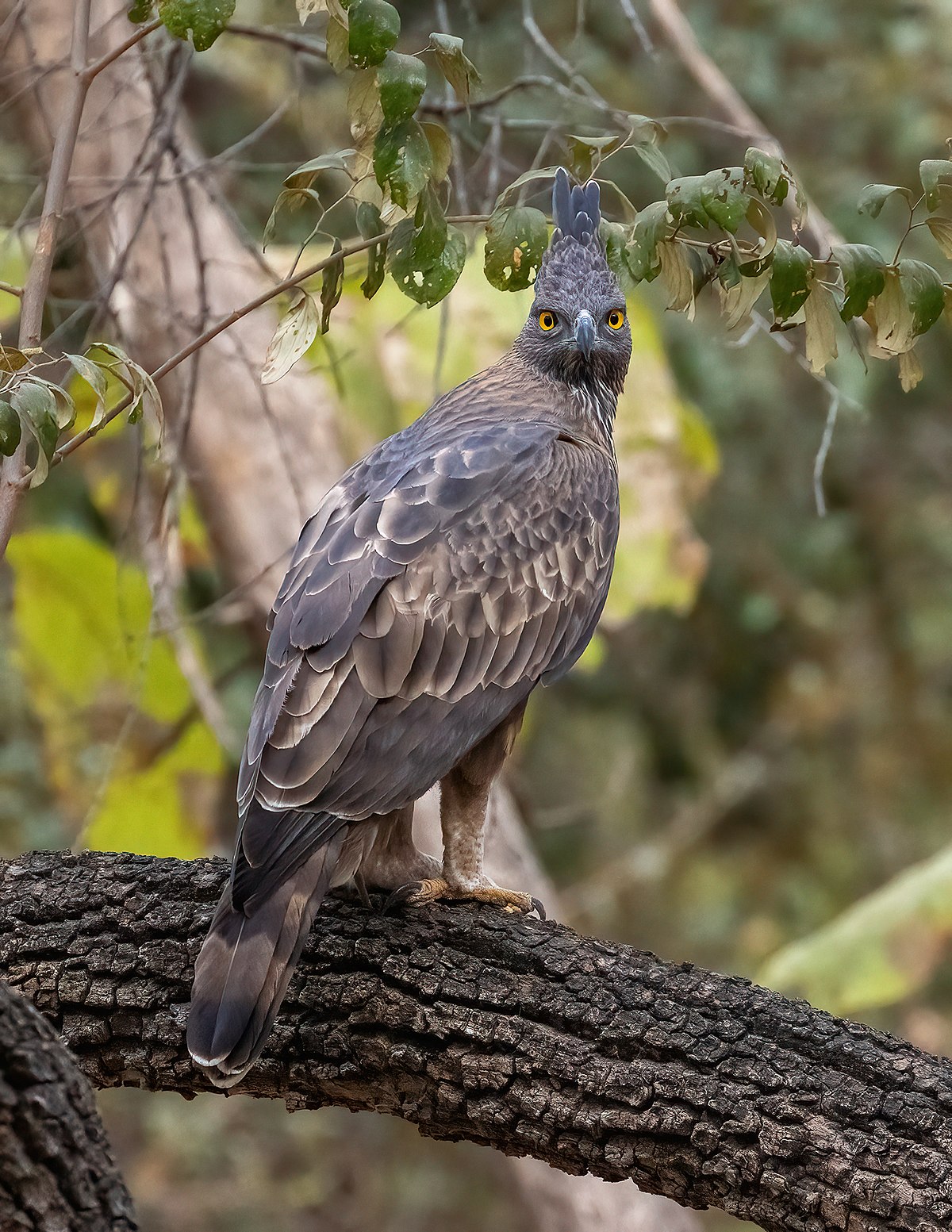
Wikipedia: Changeable hawk eagle Source: OTHER
1200px-Changable_hawk_eagle.jpg
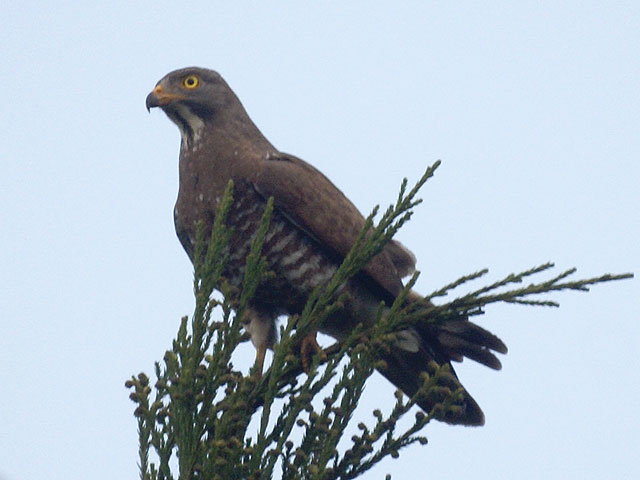
Wikipedia: Grey-faced buzzard Source: OTHER
Butastur_indicus.jpg
Rufous-bellied eagle / Rotbauchadler (Lophotriorchis kienerii)
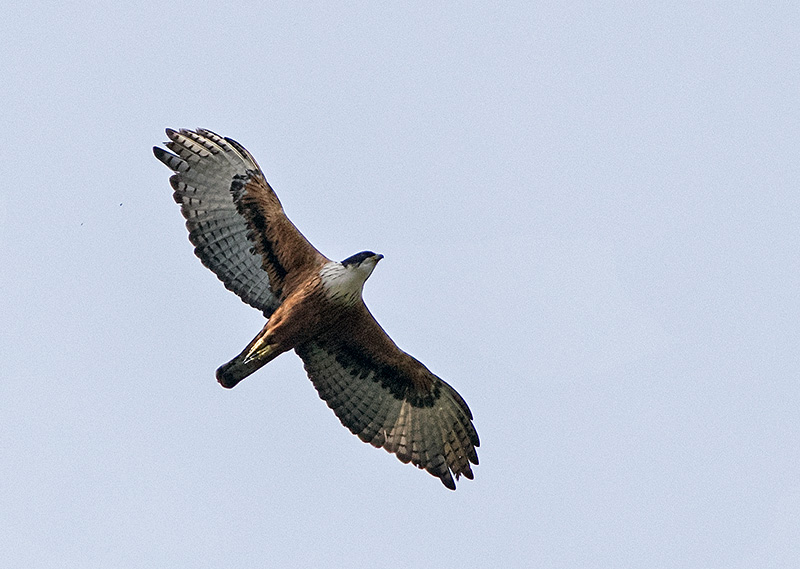
Wikipedia: Rufous-bellied eagle Source: OTHER
Rufous-bellied_Eagle.jpg
Osprey / Fischadler (Pandion haliaetus)
Osprey in flight. 2023-09-27 12.22.08 Florida
First observed in Yucatan on 2023-04-21.
This bird appears across the great seas in the following continents:
Europe, North America, South America, Africa, Asia.
General: ![]() Falco haliaetus Linnaeus, 1758
[more]
Falco haliaetus Linnaeus, 1758
[more]
Calls: ![]() Calls with sequences of short, soft and clear whistling notes. Often in series with rising pitch, then ending with a few lower pitched notes. [Link]
Calls with sequences of short, soft and clear whistling notes. Often in series with rising pitch, then ending with a few lower pitched notes. [Link]
Physical details: length=55-58 cm,
wingspan=145-170 cm,
weight=1120-2050 g
Habitats:
Agricultural
Call:
Automatically generated from Xeno-Canto recording
♫ 2023-10-12 15 55 surprising sound of an osprey. 2023-10-12 15.55.00 New England (song?)
Profile Wikipedia eBird Xeno-Canto
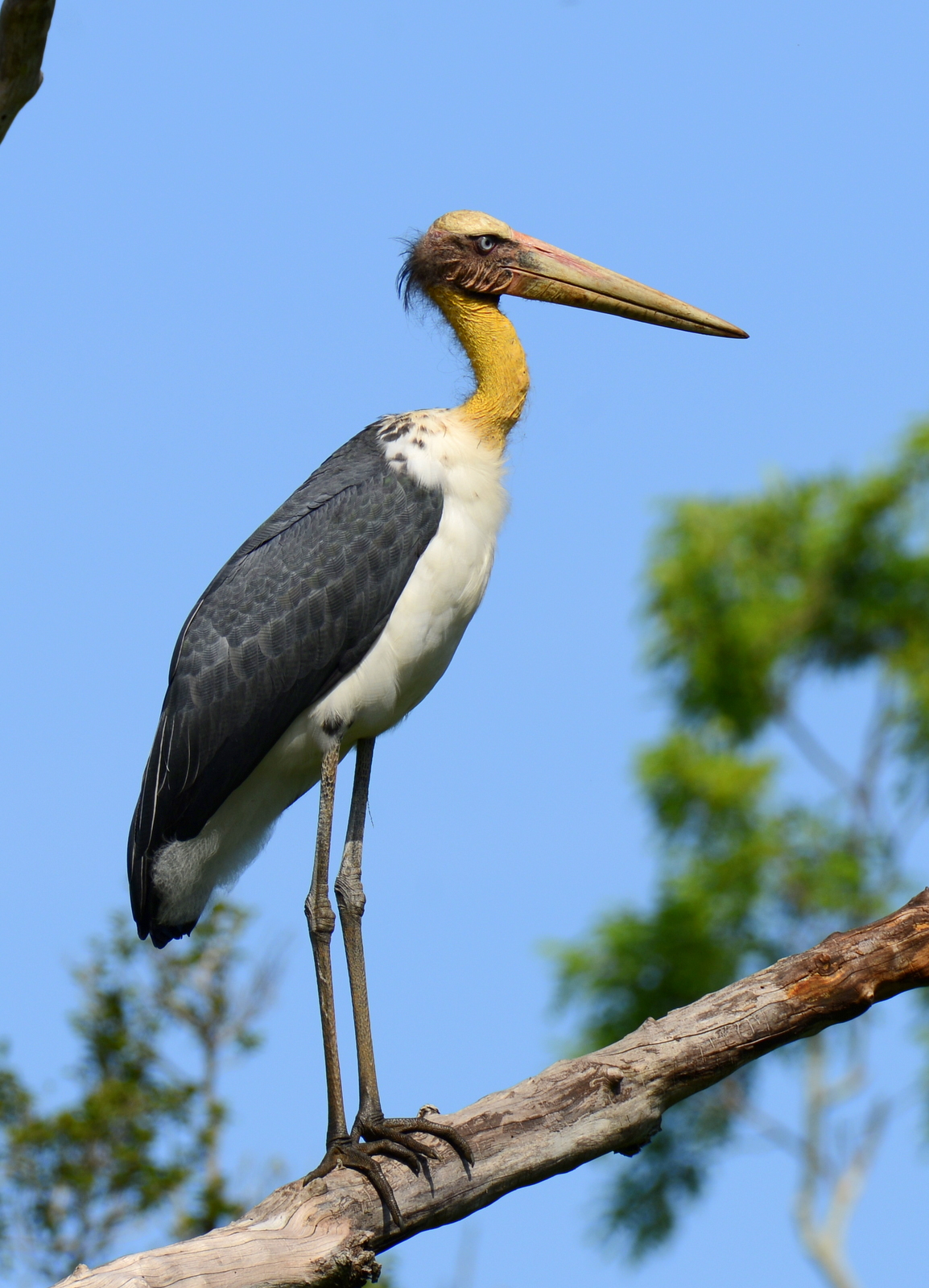
Wikipedia: Lesser adjutant Source: OTHER
Lesser_Adjutant_%2CYala_National_Park_.jpg
Rock doves aka common pigeons on the move. 2023-06-19 07.39.10 Bolle di Magadino
First observed in 🇨🇭 on 2023-06-19.
This bird appears across the great seas in the following continents:
Europe, North America, South America, Africa, Asia.
General: ![]() The rock dove, rock pigeon, or common pigeon (/ˈpɪdʒ.ən/ also /ˈpɪdʒ.ɪn/; Columba livia) is a member of the bird family Columbidae (doves and pigeons).[3]:624 In common usage, this bird is often simply referred to as the "pigeon".
[more]
The rock dove, rock pigeon, or common pigeon (/ˈpɪdʒ.ən/ also /ˈpɪdʒ.ɪn/; Columba livia) is a member of the bird family Columbidae (doves and pigeons).[3]:624 In common usage, this bird is often simply referred to as the "pigeon".
[more]
Vocalization: ![]() Not loud. [Link]
Not loud. [Link]
Song: ![]() Song a two-syllable, but continuous cooing. First a rolling ascending "orrrrrr" immediately followed by a short descending "oohh". Wings produce a quite audible whistling sound. [Link]
Song a two-syllable, but continuous cooing. First a rolling ascending "orrrrrr" immediately followed by a short descending "oohh". Wings produce a quite audible whistling sound. [Link]
Physical details: length=31-34 cm,
wingspan=63-70 cm,
weight=230-370 g
Habitats:
Settlement
Likely a spotted dove - the eye looks very strange here. 2024-02-16 09.35.16 Laos
First observed in Thailand on 2024-01-22.
This bird appears across the great seas in the following continents:
North America, Asia, Australia.
introduced
Call:
Automatically generated from Xeno-Canto recording
♫ XC884362 - Spotted Dove - Spilopelia chinensis. Source: XENOCANTO
XC884362 - Spotted Dove - Spilopelia chinensis.mp3
(song?)


Wikipedia: Red collared-dove Source: OTHER
Streptopelia_tranquebarica.jpg
vagrant, Christmas Island
Wikipedia: Green imperial pigeon Source: OTHER
DuculaAenea.JPG
Profile Wikipedia eBird Xeno-Canto

Wikipedia: Dark-backed imperial pigeon Source: OTHER
Dark-backed_Imperial_Pigeon.jpg
Endemic (country/region)

Wikipedia: Pied imperial-pigeon Source: OTHER
1200px-Ducula_bicolor_-_Chinese_Garden.jpg
Zebra dove on temple grounds, Chiang Mai. 2024-01-22 13.44.56 Thailand
First observed in Thailand on 2024-01-19.
This bird appears across the great seas in the following continents:
North America, Asia.
General: ![]() The zebra dove (Geopelia striata), also known as the barred ground dove, or barred dove, is a species of bird of the dove family, Columbidae, native to Southeast Asia. They are small birds with a long tail, predominantly brownish-grey in colour with black-and-white barring. The species is known for its pleasant, soft, staccato cooing calls.
[more]
The zebra dove (Geopelia striata), also known as the barred ground dove, or barred dove, is a species of bird of the dove family, Columbidae, native to Southeast Asia. They are small birds with a long tail, predominantly brownish-grey in colour with black-and-white barring. The species is known for its pleasant, soft, staccato cooing calls.
[more]
Call:
Automatically generated from Xeno-Canto recording
♫ XC844626 - Zebra Dove - Geopelia striata. Source: XENOCANTO
XC844626 - Zebra Dove - Geopelia striata.mp3
(song?)


Wikipedia: Barred cuckoo dove Source: OTHER
1200px-Macropygia_unchall_252607414_%28cropped%29.jpg
Profile Wikipedia eBird Xeno-Canto

Wikipedia: Brown cuckoo dove Source: OTHER
1200px-Brown_Cuckoo-Dove_-_Brunkerville.jpg
Profile Wikipedia eBird Xeno-Canto
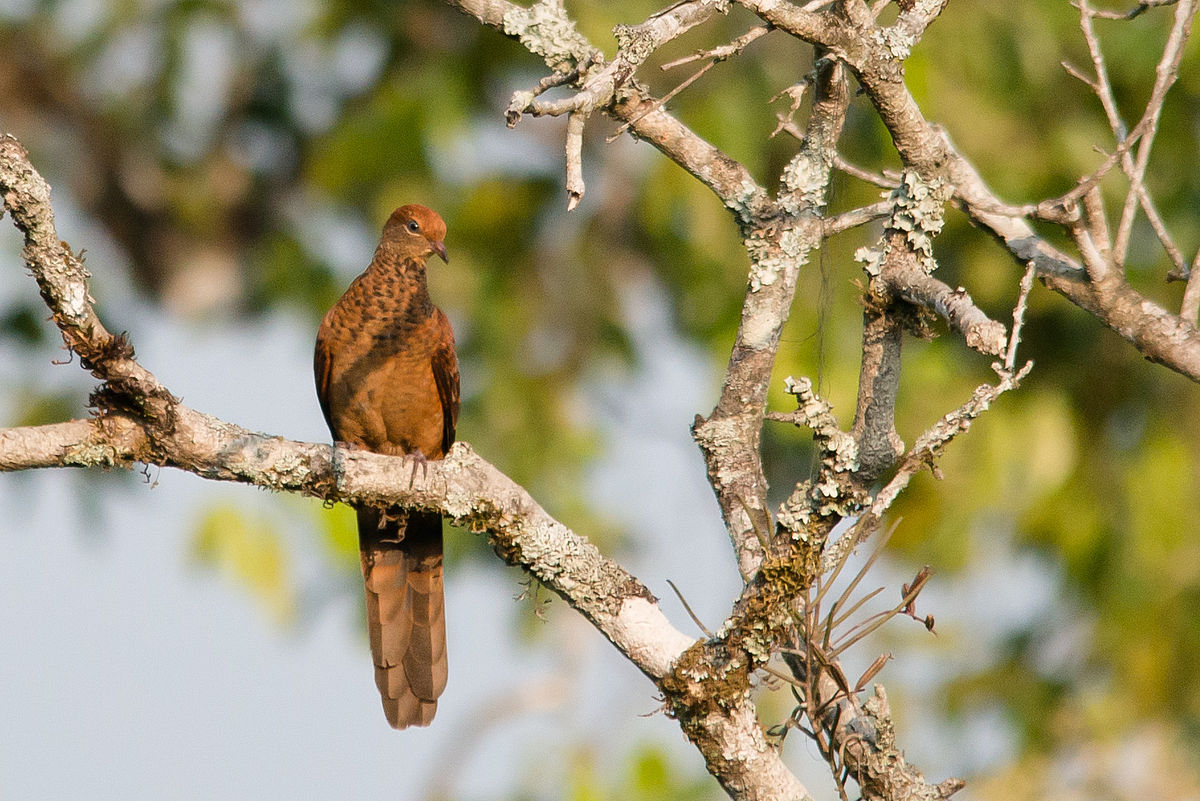
Wikipedia: Little cuckoo dove Source: OTHER
1200px-Macropygia-ruficeps-little-cuckoo-dove.jpg

Wikipedia: Pink-headed fruit-dove Source: OTHER
1200px-Pink-headed_Fruit_Dove_001.jpg
Endemic (country/region)
Profile Wikipedia eBird Xeno-Canto

Wikipedia: Black-backed fruit dove Source: OTHER
Ptilinopus_cinctus_103153249_%28cropped%29.jpg
Profile Wikipedia eBird Xeno-Canto

Wikipedia: Black-naped fruit dove Source: OTHER
1200px-Black-naped_Fruit_Dove%2C_captive%2C_San_Diego_Zoo.jpg

Wikipedia: Pink-necked green-pigeon Source: OTHER
1200px-Treron_vernans_male_-_Kent_Ridge_Park.jpg

Wikipedia: Orange-breasted green pigeon Source: OTHER
1200px-Orange-breasted_green_pigeon_%28Treron_bicinctus_leggei%29_male.jpg
Profile Wikipedia eBird Xeno-Canto
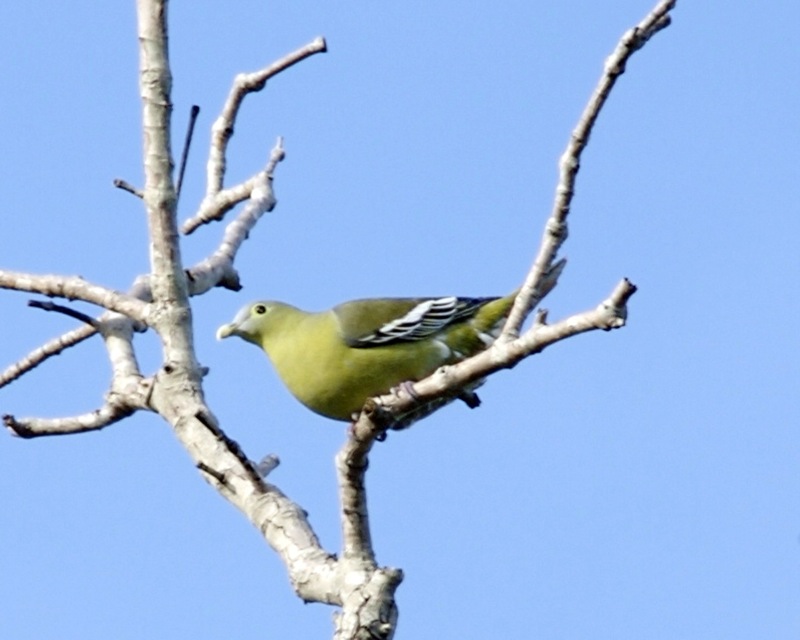
Wikipedia: Grey-cheeked green pigeon Source: OTHER
Grey-cheeked_Green_Pigeon_%28Treron_griseicauda_wallacei%29.jpg
Endemic (country/region)

Wikipedia: Asian emerald dove Source: OTHER
1200px-Chalcophaps_indica_-a_pair_in_captivity-8a.jpg
Christmas Island
Profile Wikipedia eBird Xeno-Canto

Wikipedia: Cerulean kingfisher Source: OTHER
1200px-Cerulean_Kingfisher_0A2A1617.jpg
Endemic (country/region)

Wikipedia: Black-backed kingfisher Source: OTHER
Oriental_dwarf_kingfisher_%28Ceyx_erithaca%29_Photograph_by_Shantanu_Kuveskar.jpg
Profile Wikipedia eBird Xeno-Canto

Wikipedia: Ruddy kingfisher Source: OTHER
1200px-Ruddy_Kingfisher_0A2A7077.jpg
Profile Wikipedia eBird Xeno-Canto

Wikipedia: White-throated kingfisher Source: OTHER
1200px-T.bird%C2%A9_Sourav_Mahmud...1_%28350%29.jpg
Profile Wikipedia eBird Xeno-Canto

Wikipedia: Javan kingfisher Source: OTHER
1200px-Javan_Kingfisher_0A2A9853.jpg
Endemic (country/region)

Wikipedia: Collared kingfisher Source: OTHER
1200px-Todiramphus_chloris_2_-_Laem_Phak_Bia.jpg
This bird appears across the great seas in the following continents:
North America, Africa, Asia, Australia.
General: ![]() The collared kingfisher (Todiramphus chloris) is a medium-sized kingfisher belonging to the subfamily Halcyoninae, the tree kingfishers. It is also known as the white-collared kingfisher or mangrove kingfisher. It has a wide range extending from the Red Sea across southern Asia to Polynesia. A number of subspecies and subspecies groups have been split from this species including the Pacific kingfisher, the islet kingfisher, the Torresian kingfisher, the Mariana kingfisher, and the Melanesian kingfisher.
[more]
The collared kingfisher (Todiramphus chloris) is a medium-sized kingfisher belonging to the subfamily Halcyoninae, the tree kingfishers. It is also known as the white-collared kingfisher or mangrove kingfisher. It has a wide range extending from the Red Sea across southern Asia to Polynesia. A number of subspecies and subspecies groups have been split from this species including the Pacific kingfisher, the islet kingfisher, the Torresian kingfisher, the Mariana kingfisher, and the Melanesian kingfisher.
[more]

Wikipedia: Sacred kingfisher Source: OTHER
Sacred_kingfisher_nov08.jpg
![]() The sacred kingfisher (Todiramphus sanctus) is a medium-sized woodland kingfisher that occurs in mangroves, woodlands, forests, and river valleys in Australia, New Zealand, and other parts of the western Pacific. In New Zealand the species is also known as kotare (from the Māori kōtare).[2]
[more]
The sacred kingfisher (Todiramphus sanctus) is a medium-sized woodland kingfisher that occurs in mangroves, woodlands, forests, and river valleys in Australia, New Zealand, and other parts of the western Pacific. In New Zealand the species is also known as kotare (from the Māori kōtare).[2]
[more]
Profile Wikipedia eBird Xeno-Canto
Wikipedia: Dollarbird Source: OTHER
Dollarbird_Samcem_Dec02.JPG
![]() The Oriental dollarbird (Eurystomus orientalis) is a bird of the roller family, so named because of the distinctive pale blue or white, coin-shaped spots on its wings. It can be found from Australia to Korea, Japan and India.
[more]
The Oriental dollarbird (Eurystomus orientalis) is a bird of the roller family, so named because of the distinctive pale blue or white, coin-shaped spots on its wings. It can be found from Australia to Korea, Japan and India.
[more]
Profile Wikipedia eBird Xeno-Canto
Blue-tailed Bee-eater, Phnom Krom. 2024-03-03 06.30.20 Cambodia
First observed in Cambodia on 2024-03-03.
Call:
Automatically generated from Xeno-Canto recording
♫ XC779879 - Blue-tailed Bee-eater - Merops philippinus - call - Gandhinagar, Gujarat, India. Source: XENOCANTO
XC779879 - Blue-tailed Bee-eater - Merops philippinus - call - Gandhinagar, Gujarat, India.mp3
(call)

Call attributes:
Frequency: ,
Profile Wikipedia eBird Xeno-Canto
Chestnut-headed bee-eater. 2024-02-27 10.59.38 Laos
First observed in Laos on 2024-02-27.
Call:
Automatically generated from Xeno-Canto recording
♫ XC639690 - Chestnut-headed Bee-eater - Merops leschenaulti leschenaulti - call - Doi Inthanon National Park, Thailand. Source: XENOCANTO
XC639690 - Chestnut-headed Bee-eater - Merops leschenaulti leschenaulti - call - Doi Inthanon National Park, Thailand.mp3
Thailand (call)

Call attributes:
Frequency: ,
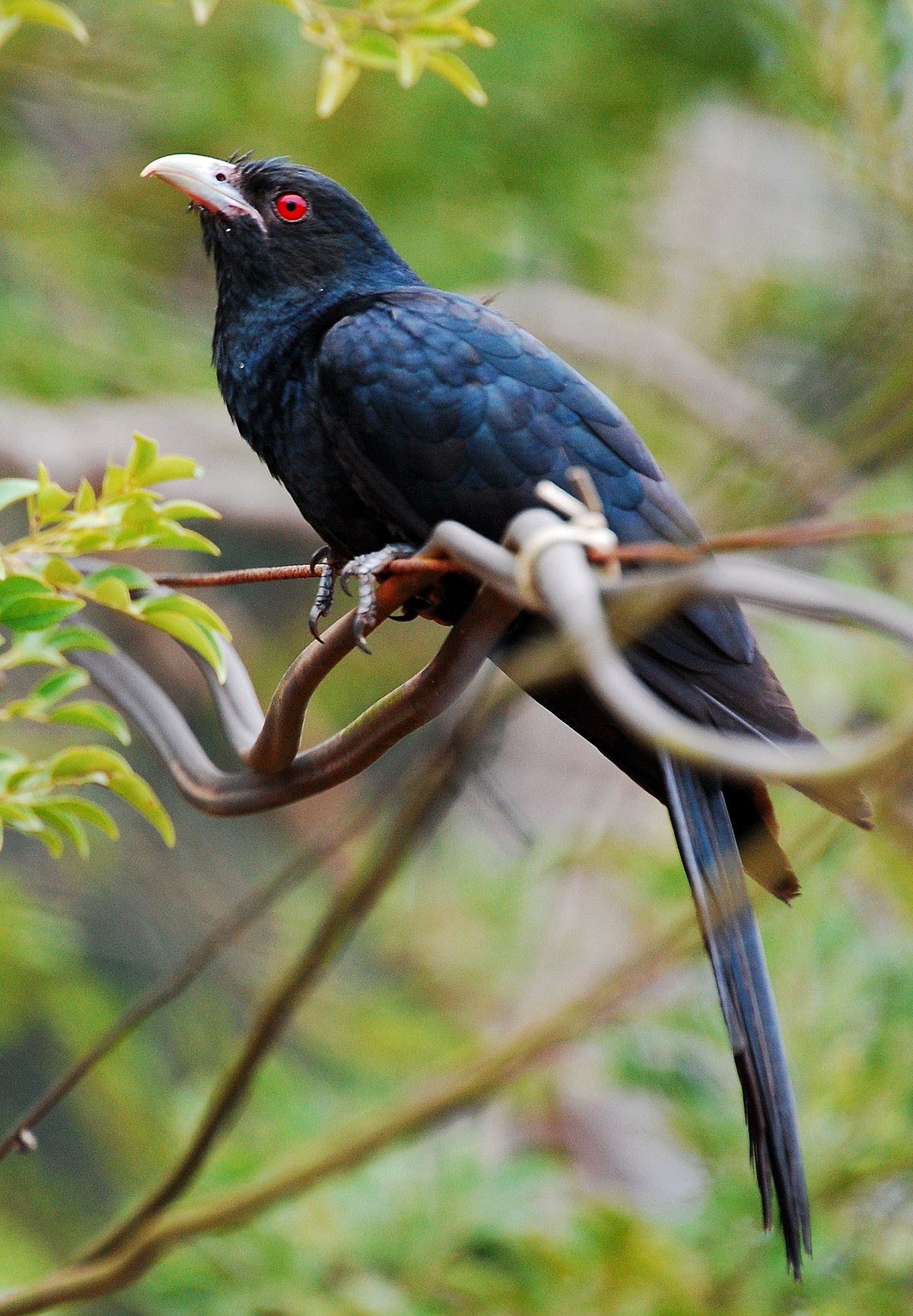
Wikipedia: Asian koel Source: OTHER
1200px-Asian_koel.jpg
vagrant, Christmas, Barrow Island, WA & Cocos (Keeling) Islands
Wikipedia: Oriental cuckoo Source: OTHER
Oriental_Cuckoo_Maiala.JPG
Profile Wikipedia eBird Xeno-Canto

Wikipedia: Chestnut-breasted malkoha Source: OTHER
1200px-Chestnut-breasted_Malkoha2.jpg

Wikipedia: Banded bay cuckoo Source: OTHER
BandedBayCuckoo.jpg
Profile Wikipedia eBird Xeno-Canto

Wikipedia: Plaintive cuckoo Source: OTHER
Plaintive_Cuckoo_Cacomantis_merulinus_-_Cropped.jpg
Profile Wikipedia eBird Xeno-Canto

Wikipedia: Rusty-breasted cuckoo Source: OTHER
Rusty-breasted_Cuckoo.jpg

Wikipedia: Shining bronze-cuckoo Source: OTHER
1200px-Shining_Bronze_Cuckoo_0772.jpg
General: ![]() The shining bronze-cuckoo (Chrysococcyx lucidus) is a species of cuckoo in the family Cuculidae, found in Australia, Indonesia, New Caledonia, New Zealand, Papua New Guinea, Solomon Islands, and Vanuatu. It was previously also known as Chalcites lucidus.
[more]
The shining bronze-cuckoo (Chrysococcyx lucidus) is a species of cuckoo in the family Cuculidae, found in Australia, Indonesia, New Caledonia, New Zealand, Papua New Guinea, Solomon Islands, and Vanuatu. It was previously also known as Chalcites lucidus.
[more]

Wikipedia: Horsfield's bronze-cuckoo Source: OTHER
1200px-Horsfield%27s_Bronze-Cuckoo_Newhaven.jpg
![]() Horsfield's bronze-cuckoo (Chrysococcyx basalis) is a small cuckoo in the family Cuculidae. Its size averages 22g[2] and is distinguished by its green and bronze iridescent colouring on its back and incomplete brown barring from neck to tail. What distinguishes the Horsfield's bronze-cuckoo from other bronze-cuckoos is its white eyebrow and brown eye stripe.[3] The Horsfield's bronze-cuckoo is common throughout Australia preferring the drier open woodlands away from forested areas.[4]
[more]
Horsfield's bronze-cuckoo (Chrysococcyx basalis) is a small cuckoo in the family Cuculidae. Its size averages 22g[2] and is distinguished by its green and bronze iridescent colouring on its back and incomplete brown barring from neck to tail. What distinguishes the Horsfield's bronze-cuckoo from other bronze-cuckoos is its white eyebrow and brown eye stripe.[3] The Horsfield's bronze-cuckoo is common throughout Australia preferring the drier open woodlands away from forested areas.[4]
[more]

Wikipedia: Square-tailed drongo-cuckoo Source: OTHER
1200px-Square-tailed_Drongo-Cuckoo_2.jpg
vagrant

Wikipedia: Large hawk-cuckoo Source: OTHER
1200px-Large_hawk-cuckoo_%28Hierococcyx_sparverioides%29_JEG1947.jpg
vagrant, Christmas Island
Profile Wikipedia eBird Xeno-Canto

Wikipedia: Lesser coucal Source: OTHER
1200px-Lesser_coucal_%E0%B4%AA%E0%B5%81%E0%B4%B2%E0%B5%8D%E0%B4%B2%E0%B5%81%E0%B4%AA%E0%B5%8D%E0%B4%AA%E0%B5%BB_from_Kole_Wetlands_DSCN9697.jpg
vagrant, Ashmore Reef
Greater coucal in flight. 2024-02-25 08.04.26 Laos
First observed in Laos on 2024-02-19.
Song:
Automatically generated from Xeno-Canto recording
Song attributes:
Frequency:
♫ XC862888 - Greater Coucal - Centropus sinensis intermedius - song, pigeon-like. Source: XENOCANTO
XC862888 - Greater Coucal - Centropus sinensis intermedius - song, pigeon-like.mp3
(song)

Profile Wikipedia eBird Xeno-Canto
Endemic (country/region)

Wikipedia: Peregrine falcon Source: OTHER
Falco_peregrinus_good_-_Christopher_Watson.jpg
This bird appears across the great seas in the following continents:
Europe, North America, South America, Africa, Asia.
General: ![]() The peregrine falcon (Falco peregrinus), also known as the peregrine,[2] and historically as the duck hawk in North America,[3] is a widespread bird of prey (raptor) in the family Falconidae. A large, crow-sized falcon, it has a blue-grey back, barred white underparts, and a black head. The peregrine is renowned for its speed, reaching over 320 km/h (200 mph) during its characteristic hunting stoop (high-speed dive),[4] making it the fastest bird in the world, as well as the fastest member of the animal kingdom.[5][6][7] According to a National Geographic TV program, the highest measured speed of a peregrine falcon is 389 km/h (242 mph).[8][9] As is typical for bird-eating raptors, peregrine falcons are sexually dimorphic, with females being considerably larger than males.[10][11]
[more]
The peregrine falcon (Falco peregrinus), also known as the peregrine,[2] and historically as the duck hawk in North America,[3] is a widespread bird of prey (raptor) in the family Falconidae. A large, crow-sized falcon, it has a blue-grey back, barred white underparts, and a black head. The peregrine is renowned for its speed, reaching over 320 km/h (200 mph) during its characteristic hunting stoop (high-speed dive),[4] making it the fastest bird in the world, as well as the fastest member of the animal kingdom.[5][6][7] According to a National Geographic TV program, the highest measured speed of a peregrine falcon is 389 km/h (242 mph).[8][9] As is typical for bird-eating raptors, peregrine falcons are sexually dimorphic, with females being considerably larger than males.[10][11]
[more]
Vocalization: ![]() A harsh, drawn out "kiaaaa" with emphasised endings repeated in series. Much slower than Merlin, but higher pitched than Gyrfalcon. [Link]
A harsh, drawn out "kiaaaa" with emphasised endings repeated in series. Much slower than Merlin, but higher pitched than Gyrfalcon. [Link]
Calls: ![]() Also shorter, coarse warning-calls. [Link]
Also shorter, coarse warning-calls. [Link]
Physical details: length=36-48 cm,
wingspan=95-110 cm,
weight=582-1300 g
Habitats:
Agricultural
Profile Wikipedia eBird Xeno-Canto

Wikipedia: Spotted kestrel Source: OTHER
Spotted_kestrel_-bird_-birding_-bandungbirding_-Ig_Bird_-birdextreme_-nature_perfection_-wildlife_%2816656529537%29.jpg
Endemic (country/region)
Profile Wikipedia eBird Xeno-Canto
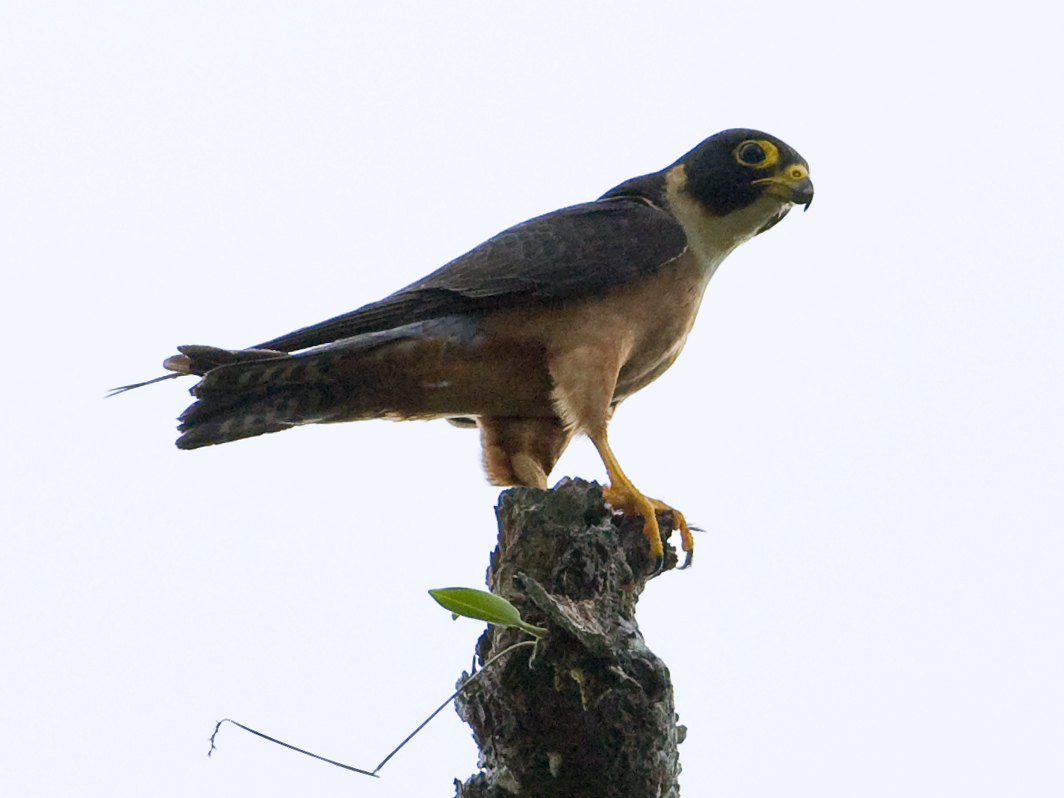
Wikipedia: Oriental hobby Source: OTHER
Oriental_Hobby_-_Falco_severus_-_Falco_%282526569907%29.jpg
Profile Wikipedia eBird Xeno-Canto
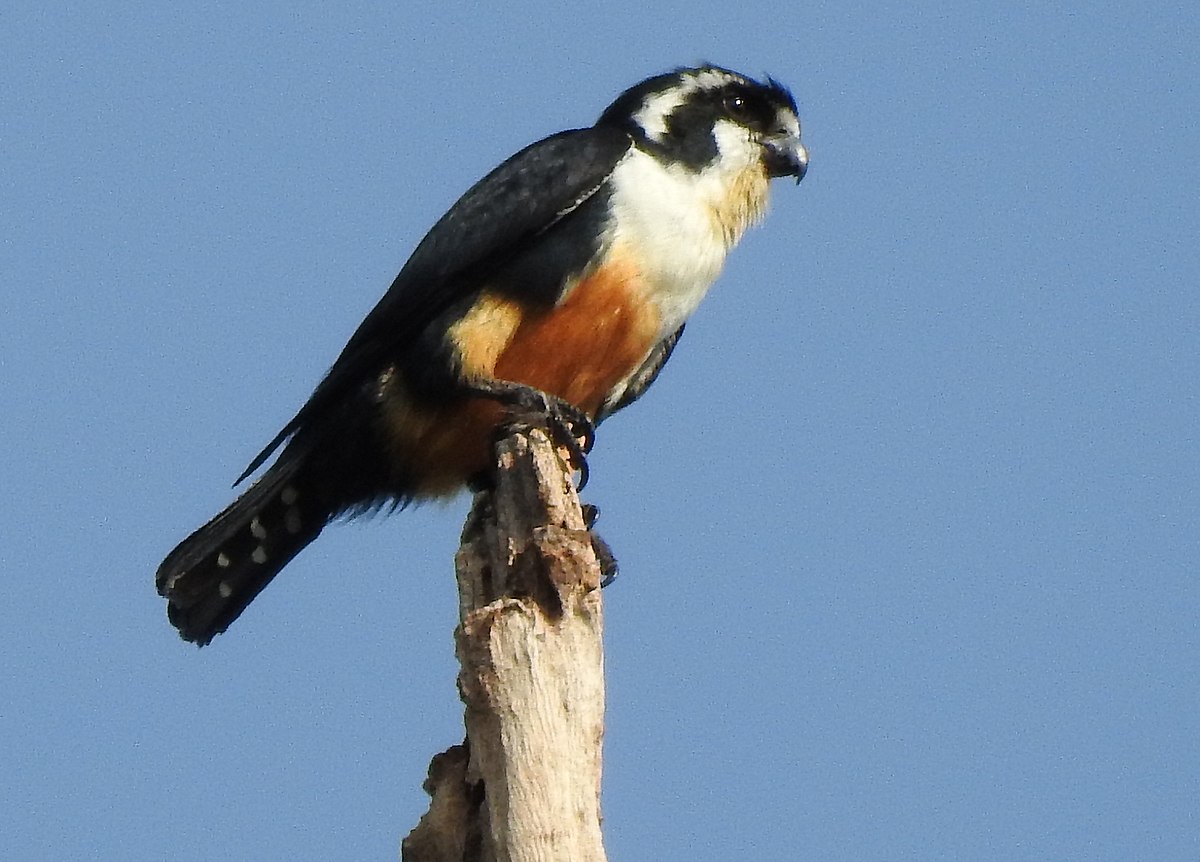
Wikipedia: Black-thighed falconet Source: OTHER
1200px-Microhierax_fringillarius_112598890.jpg
Profile Wikipedia eBird Xeno-Canto

Wikipedia: Sunda pygmy woodpecker Source: OTHER
Female_Sunda_Pygmy_Woodpecker.jpg
Profile Wikipedia eBird Xeno-Canto

Wikipedia: Fulvous-breasted woodpecker Source: OTHER
Fulvous-breasted_Woodpecker_%28Dendrocopos_macei%29_at_Kolkata_I_IMG_3848.jpg
Profile Wikipedia eBird Xeno-Canto
Wikipedia: White-bellied woodpecker Source: OTHER
WhiteBelliedWoodpecker.JPG
Profile Wikipedia eBird Xeno-Canto

Wikipedia: Laced woodpecker Source: OTHER
Laced_Woodpecker.jpg
Profile Wikipedia eBird Xeno-Canto

Wikipedia: Greater flameback Source: OTHER
Chrysocolaptes_guttacristatus%2C_Kaeng_Krachan.jpg
Profile Wikipedia eBird Xeno-Canto

Wikipedia: Common flameback Source: OTHER
Common_Flameback_%28Dinopium_javanense_javanense%29_-_Flickr_-_Lip_Kee_%282%29.jpg
Profile Wikipedia eBird Xeno-Canto

Wikipedia: Lineated barbet Source: OTHER
1200px-Lineated_Barbet_%28%E0%A6%A6%E0%A6%BE%E0%A6%97%E0%A6%BF_%E0%A6%AC%E0%A6%B8%E0%A6%A8%E0%A7%8D%E0%A6%A4%E0%A6%AC%E0%A7%8C%E0%A6%B0%E0%A6%BF%29_2.jpg
Profile Wikipedia eBird Xeno-Canto

Wikipedia: Flame-fronted barbet Source: OTHER
1200px-Flame-fronted_Barbet_-_Bot.Gardens_Bedugul_-_Bali%2C_Indonesia.jpg
Endemic (country/region)
Profile Wikipedia eBird Xeno-Canto

Wikipedia: Blue-eared barbet Source: OTHER
Blue-eared_Barbet_Manas_National_Park_Assam_India_April_2019.jpg
Profile Wikipedia eBird Xeno-Canto

Coppersmith barbet, Wat Phnom, Phnom Penh. 2024-03-10 10.27.26 Cambodia
First observed in Cambodia on 2024-03-10.
Song:
Automatically generated from Xeno-Canto recording
Song attributes:
Frequency:
♫ XC857059 - Coppersmith Barbet - Psilopogon haemacephalus indicus - song but just one repeated note - Chang Wat Nonthaburi, Thailand. Source: XENOCANTO
XC857059 - Coppersmith Barbet - Psilopogon haemacephalus indicus - song but just one repeated note - Chang Wat Nonthaburi, Thailand.mp3
Thailand (song)

Profile Wikipedia eBird Xeno-Canto
Female red-breasted parakeet at Banteay Srei, Angkor area. 2024-03-04 09.36.12 Cambodia
First observed in Cambodia on 2024-03-04.
Song:
Automatically generated from Xeno-Canto recording
Song attributes:
Frequency:
♫ XC35744 - Red-breasted Parakeet - Psittacula alexandri - song - Cat Tien National Park, Cochinchina, Vietnam. Source: XENOCANTO
XC35744 - Red-breasted Parakeet - Psittacula alexandri - song - Cat Tien National Park, Cochinchina, Vietnam.mp3
(song)

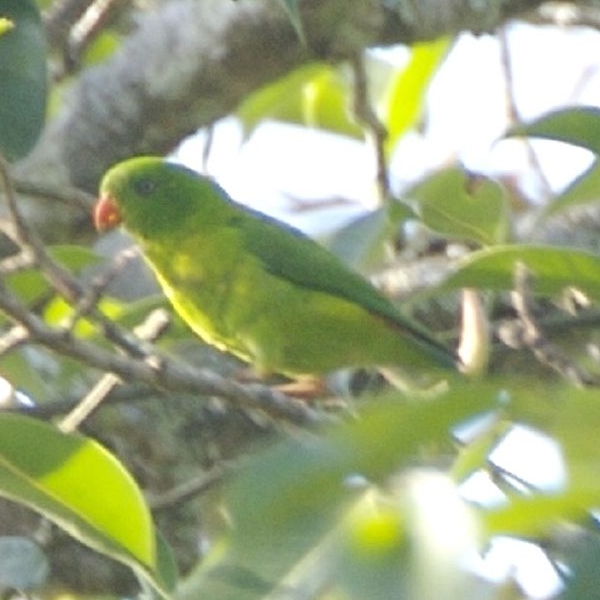
Wikipedia: Yellow-throated hanging-parrot Source: OTHER
Loriculus_pusillus_-Java_-Indonesia-6-4c.jpg
Endemic (country/region)

Wikipedia: Eclectus parrot Source: OTHER
Eclectus_roratus-20030511.jpg
General: ![]() The eclectus parrot (Eclectus roratus) is a parrot native to the Solomon Islands, Sumba, New Guinea and nearby islands, northeastern Australia, and the Maluku Islands (Moluccas). It is unusual in the parrot family for its extreme sexual dimorphism of the colours of the plumage; the male having a mostly bright emerald green plumage and the female a mostly bright red and purple/blue plumage. Joseph Forshaw, in his book Parrots of the World, noted that the first European ornithologists to see eclectus parrots thought they were of two distinct species. Large populations of this parrot remain, and they are sometimes considered pests for eating fruit off trees. Some populations restricted to relatively small islands are comparably rare. Their bright feathers are also used by native tribespeople in New Guinea as decorations.
[more]
The eclectus parrot (Eclectus roratus) is a parrot native to the Solomon Islands, Sumba, New Guinea and nearby islands, northeastern Australia, and the Maluku Islands (Moluccas). It is unusual in the parrot family for its extreme sexual dimorphism of the colours of the plumage; the male having a mostly bright emerald green plumage and the female a mostly bright red and purple/blue plumage. Joseph Forshaw, in his book Parrots of the World, noted that the first European ornithologists to see eclectus parrots thought they were of two distinct species. Large populations of this parrot remain, and they are sometimes considered pests for eating fruit off trees. Some populations restricted to relatively small islands are comparably rare. Their bright feathers are also used by native tribespeople in New Guinea as decorations.
[more]
Profile Wikipedia eBird Xeno-Canto
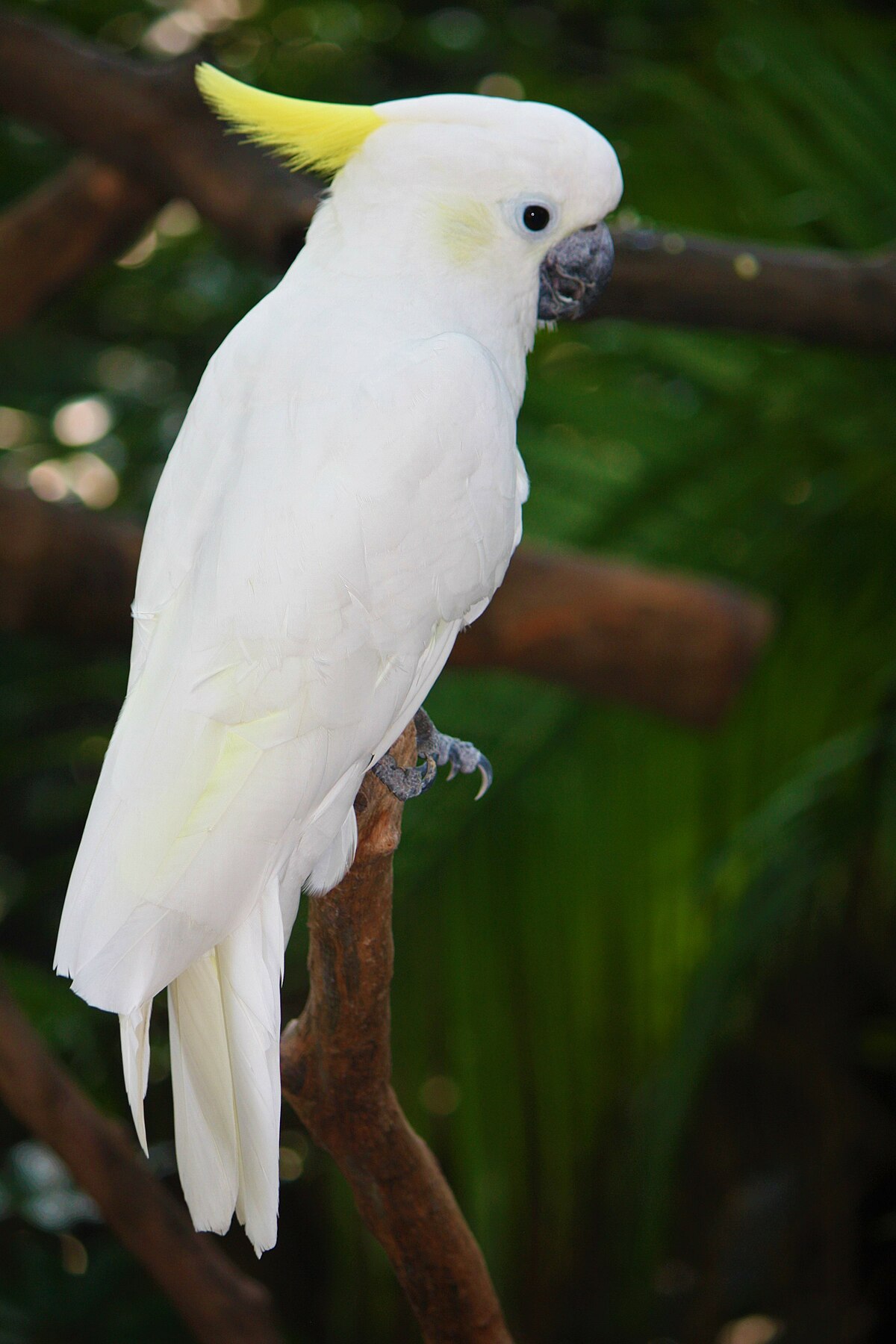
Wikipedia: Yellow-crested cockatoo Source: OTHER
1200px-Gelbwangenkakadu_8559.jpg
Endemic (country/region)
Profile Wikipedia eBird Xeno-Canto

Wikipedia: Salmon-crested cockatoo Source: OTHER
1200px-Cacatua_moluccensis_-Cincinnati_Zoo-8a.jpg
Endemic (country/region)
Endemic (country/region)
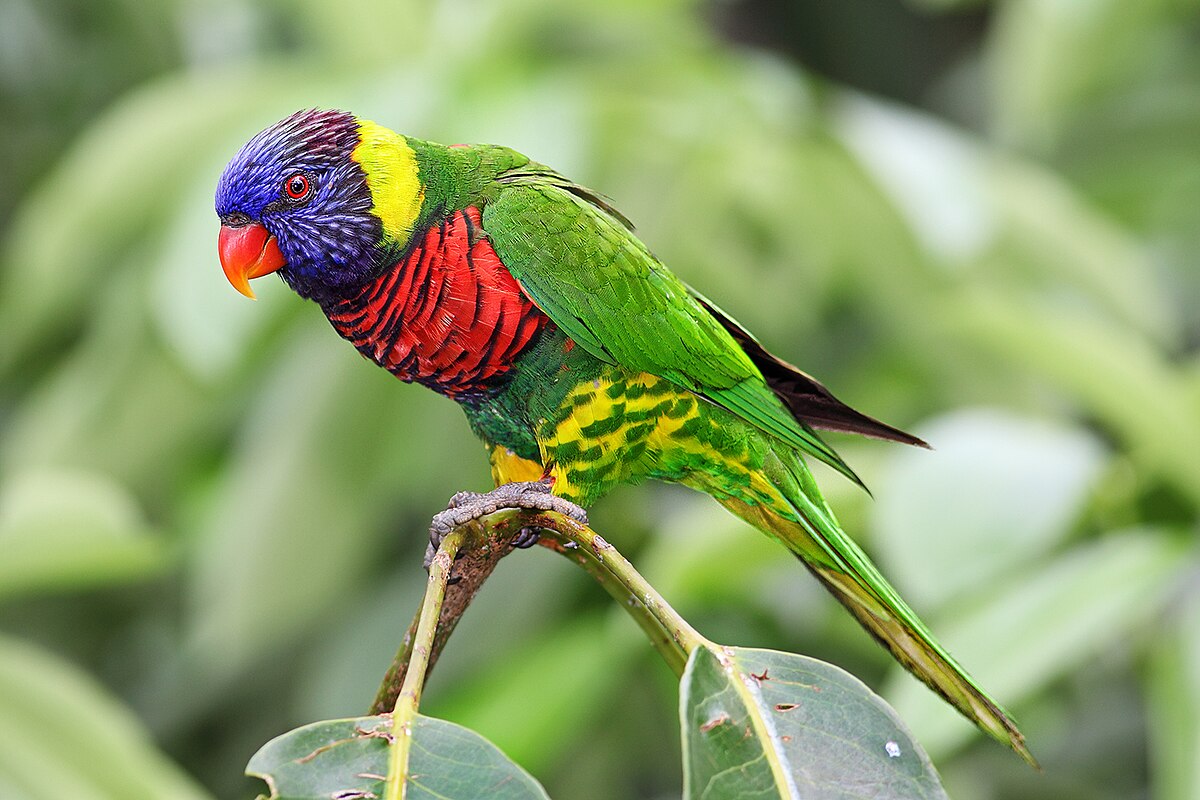
Wikipedia: Coconut lorikeet Source: OTHER
1200px-Trichoglossus_haematodus_-Jurong_Bird_Park%2C_Singapore_-Dec2009.jpg
Torres Strait
Profile Wikipedia eBird Vogelwarte BirdLife ZH ornitho.ch bird-song.ch Xeno-Canto BirdID NABU
Zwergtaucher. 2022-06-25 12.07.24 La Sauge
First observed in Gqeberha (former Port Elisabeth) on 2009-10-22.
General: ![]() The little grebe (Tachybaptus ruficollis), also known as dabchick, is a member of the grebe family of water birds. The genus name is from Ancient Greek takhus "fast" and bapto "to sink under". The specific ruficollis is from Latin rufus "red" and Modern Latin -collis, "-necked", itself derived from Latin collum "neck".[2]
[more]
The little grebe (Tachybaptus ruficollis), also known as dabchick, is a member of the grebe family of water birds. The genus name is from Ancient Greek takhus "fast" and bapto "to sink under". The specific ruficollis is from Latin rufus "red" and Modern Latin -collis, "-necked", itself derived from Latin collum "neck".[2]
[more]
Vocalization: ![]() Relatively vocal compared to many other grebes. [Link]
Relatively vocal compared to many other grebes. [Link]
Calls: ![]() Call; sometimes a single quite clear high pitched "dydlylyyt". More often combined into longer phrases with harsher quality, oscillating like laughter and travelling up and down in pitch in agitated motion. Reminiscent of female Cuckoo. [Link]
Call; sometimes a single quite clear high pitched "dydlylyyt". More often combined into longer phrases with harsher quality, oscillating like laughter and travelling up and down in pitch in agitated motion. Reminiscent of female Cuckoo. [Link]
Physical details: length=25-29 cm,
wingspan=40-45 cm,
weight=140-193 g
Habitats:
River and lake

Wikipedia: Streaked shearwater Source: OTHER
1200px-Streaked_shearwater_sitting.jpg
General: ![]() The streaked shearwater (Calonectris leucomelas) is a species of seabird. The adult bird averages 48 cm (19 in) in length, with a 122 cm (48 in) wingspan.
[more]
The streaked shearwater (Calonectris leucomelas) is a species of seabird. The adult bird averages 48 cm (19 in) in length, with a 122 cm (48 in) wingspan.
[more]

Wikipedia: Wedge-tailed shearwater Source: OTHER
Wedge_tailed_shearwater2.jpg
This bird appears across the great seas in the following continents:
South America, Africa, Asia.
![]() The wedge-tailed shearwater (Ardenna pacifica) is a medium-large shearwater in the seabird family Procellariidae. It is one of the shearwater species that is sometimes referred to as a muttonbird, like the sooty shearwater of New Zealand and the short-tailed shearwater of Australia. It ranges throughout the tropical Pacific and Indian Oceans, roughly between latitudes 35°N and 35°S. It breeds on islands off Japan, on the Islas Revillagigedo, the Hawaiian Islands, the Seychelles, the Northern Mariana Islands, and off Eastern and Western Australia.
[more]
The wedge-tailed shearwater (Ardenna pacifica) is a medium-large shearwater in the seabird family Procellariidae. It is one of the shearwater species that is sometimes referred to as a muttonbird, like the sooty shearwater of New Zealand and the short-tailed shearwater of Australia. It ranges throughout the tropical Pacific and Indian Oceans, roughly between latitudes 35°N and 35°S. It breeds on islands off Japan, on the Islas Revillagigedo, the Hawaiian Islands, the Seychelles, the Northern Mariana Islands, and off Eastern and Western Australia.
[more]

Wikipedia: Swinhoe's storm-petrel Source: OTHER
1200px-OceanodromaMonorhisSmit.jpg
![]() Swinhoe's storm petrel or Swinhoe's petrel (Oceanodroma monorhis) is a small, all-brown seabird of the storm petrel family Hydrobatidae.[2]
[more]
Swinhoe's storm petrel or Swinhoe's petrel (Oceanodroma monorhis) is a small, all-brown seabird of the storm petrel family Hydrobatidae.[2]
[more]

Wikipedia: Wilson's storm-petrel Source: OTHER
1200px-Oceanites_oceanicus_-_SE_Tasmania.jpg
This bird appears across the great seas in the following continents:
Europe, North America, South America, Africa, Asia.
![]() Wilson's storm petrel (Oceanites oceanicus), also known as Wilson's petrel, is a small seabird of the austral storm petrel family Oceanitidae. It is one of the most abundant bird species in the world and has a circumpolar distribution mainly in the seas of the southern hemisphere but extending northwards during the summer of the northern hemisphere. The world population has been estimated to be more than 50 million pairs.[2] The name commemorates the Scottish-American ornithologist Alexander Wilson. The genus name Oceanites refers to the mythical Oceanids, the three thousand daughters of Tethys. The species name is from Latin oceanus, "ocean".[3]
[more]
Wilson's storm petrel (Oceanites oceanicus), also known as Wilson's petrel, is a small seabird of the austral storm petrel family Oceanitidae. It is one of the most abundant bird species in the world and has a circumpolar distribution mainly in the seas of the southern hemisphere but extending northwards during the summer of the northern hemisphere. The world population has been estimated to be more than 50 million pairs.[2] The name commemorates the Scottish-American ornithologist Alexander Wilson. The genus name Oceanites refers to the mythical Oceanids, the three thousand daughters of Tethys. The species name is from Latin oceanus, "ocean".[3]
[more]

Wikipedia: Brown hawk-owl Source: OTHER
1200px-Brown_Hawk-Owl_-_Ninox_scutulata.jpg
vagrant
Profile Wikipedia eBird Xeno-Canto

Wikipedia: Javan owlet Source: OTHER
Javan_Owlet_-_Carita_-_Java_MG_3575_%2829030338883%29.jpg
Endemic (country/region)

Wikipedia: Buffy fish-owl Source: OTHER
Ketupa_ketupu.jpg
vagrant, Cocos (Keeling) Islands

Wikipedia: Barn owl Source: OTHER
1200px-Tyto_alba_-British_Wildlife_Centre%2C_Surrey%2C_England-8a_%281%29.jpg
This bird appears across the great seas in the following continents:
Europe, North America, South America, Africa, Asia.
General: ![]() The barn owl (Tyto alba) is the most widely distributed species of owl in the world and one of the most widespread of all species of birds, being found almost everywhere in the world except for the polar and desert regions, Asia north of the Himalayas, most of Indonesia, and some Pacific Islands. It is also known as the common barn owl, to distinguish it from the other species in its family, Tytonidae, which forms one of the two main lineages of living owls, the other being the typical owls (Strigidae).
[more]
The barn owl (Tyto alba) is the most widely distributed species of owl in the world and one of the most widespread of all species of birds, being found almost everywhere in the world except for the polar and desert regions, Asia north of the Himalayas, most of Indonesia, and some Pacific Islands. It is also known as the common barn owl, to distinguish it from the other species in its family, Tytonidae, which forms one of the two main lineages of living owls, the other being the typical owls (Strigidae).
[more]
Vocalization: ![]() Large repertoire of mainly hissing and screeching sounds. [Link]
Large repertoire of mainly hissing and screeching sounds. [Link]
Song: ![]() Song consists of a single, drawn screech, lasting about a second and is often performed in flight. Starting in a very hoarse tone, then progressing with a rising pitch into a more burbling sound, before suddenly ending. [Link]
Song consists of a single, drawn screech, lasting about a second and is often performed in flight. Starting in a very hoarse tone, then progressing with a rising pitch into a more burbling sound, before suddenly ending. [Link]
Physical details: length=33-35 cm,
wingspan=80-95 cm,
weight=240-350 g
Habitats:
Agricultural

Wikipedia: Oriental bay-owl Source: OTHER
1200px-Oriental_bay_owl%2C_Phodilus_badius_-_Khao_Yai_National_Park.jpg
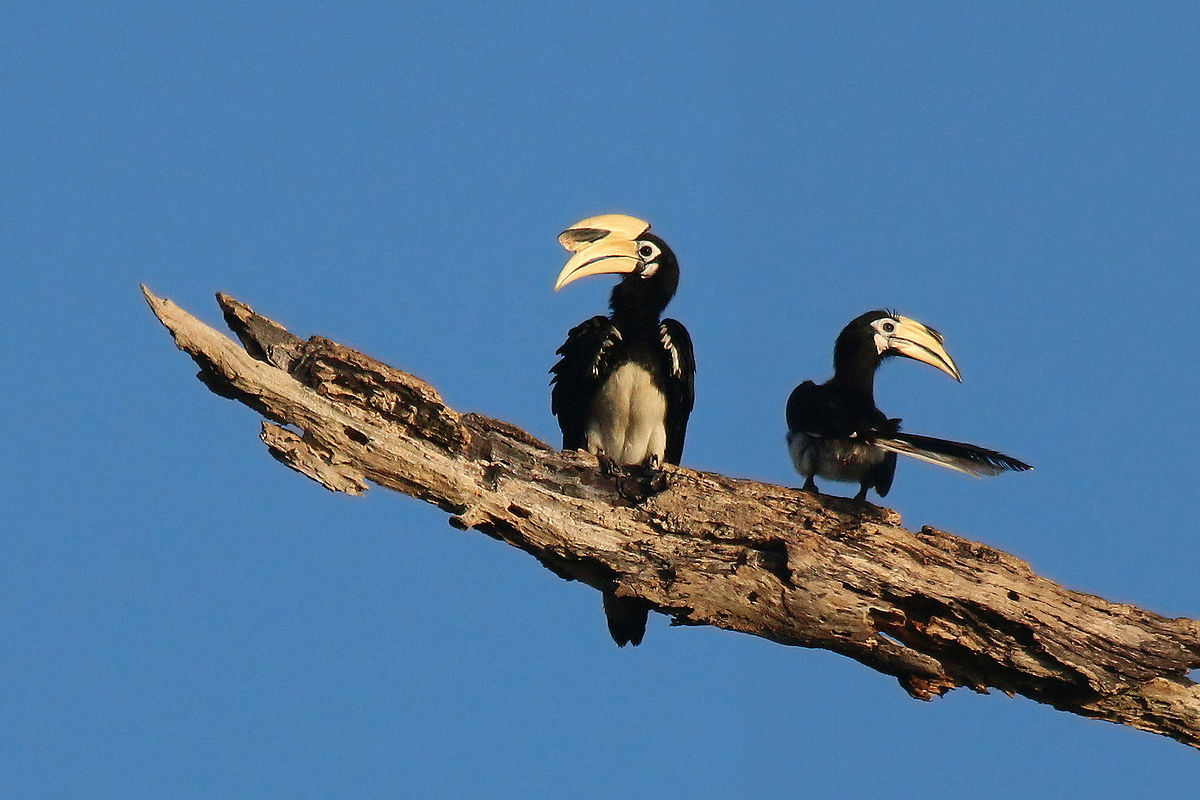
Wikipedia: Oriental pied-hornbill Source: OTHER
1200px-Oriental_pied_hornbill_%28Anthracoceros_albirostris%29_male_%28l%29_female_%28r%29.jpg
First sighting of a wreathed hornbill, seen from the rooftop bar of the Aquarius Hotel in Phnom Penh. 2024-03-09 18.00.42 Cambodia
First observed in Cambodia on 2024-03-09.
Call:
Automatically generated from Xeno-Canto recording
♫ XC292842 - Wreathed Hornbill - Rhyticeros undulatus - barking call - Borneo, Malaysia. Source: XENOCANTO
XC292842 - Wreathed Hornbill - Rhyticeros undulatus - barking call - Borneo, Malaysia.mp3
(call)

Call attributes:
Frequency: ,
Profile Wikipedia eBird Xeno-Canto

Wikipedia: Orange-footed scrubfowl Source: OTHER
1200px-Megapodius_reinwardt_Cairns.jpg
General: ![]() The orange-footed scrubfowl, orange-footed megapode or just scrubfowl (Megapodius reinwardt) is a small megapode of the family Megapodiidae.
[more]
The orange-footed scrubfowl, orange-footed megapode or just scrubfowl (Megapodius reinwardt) is a small megapode of the family Megapodiidae.
[more]
Profile Wikipedia eBird Xeno-Canto

Wikipedia: Green junglefowl Source: OTHER
1200px-Green_Junglefowl_%28Gallus_varius%29_%287936877492%29.jpg
introduced, Cocos (Keeling) Islands
Profile Wikipedia eBird Audubon AllAboutBirds Xeno-Canto

Wikipedia: Red junglefowl Source: OTHER
Red_Junglefowl_-_Thailand.jpg
This bird appears across the great seas in the following continents:
North America, Asia.
General: ![]() The red junglefowl (Gallus gallus) is a tropical bird in the family Phasianidae. It ranges across much of Southeast Asia and parts of South Asia. Red junglefowl are the primary ancestor of the domestic chicken (Gallus gallus domesticus); the grey junglefowl, Sri Lankan junglefowl and green junglefowl have also contributed genetic material to the gene pool of the chicken.[2][3]
[more]
The red junglefowl (Gallus gallus) is a tropical bird in the family Phasianidae. It ranges across much of Southeast Asia and parts of South Asia. Red junglefowl are the primary ancestor of the domestic chicken (Gallus gallus domesticus); the grey junglefowl, Sri Lankan junglefowl and green junglefowl have also contributed genetic material to the gene pool of the chicken.[2][3]
[more]
Profile Wikipedia eBird Xeno-Canto
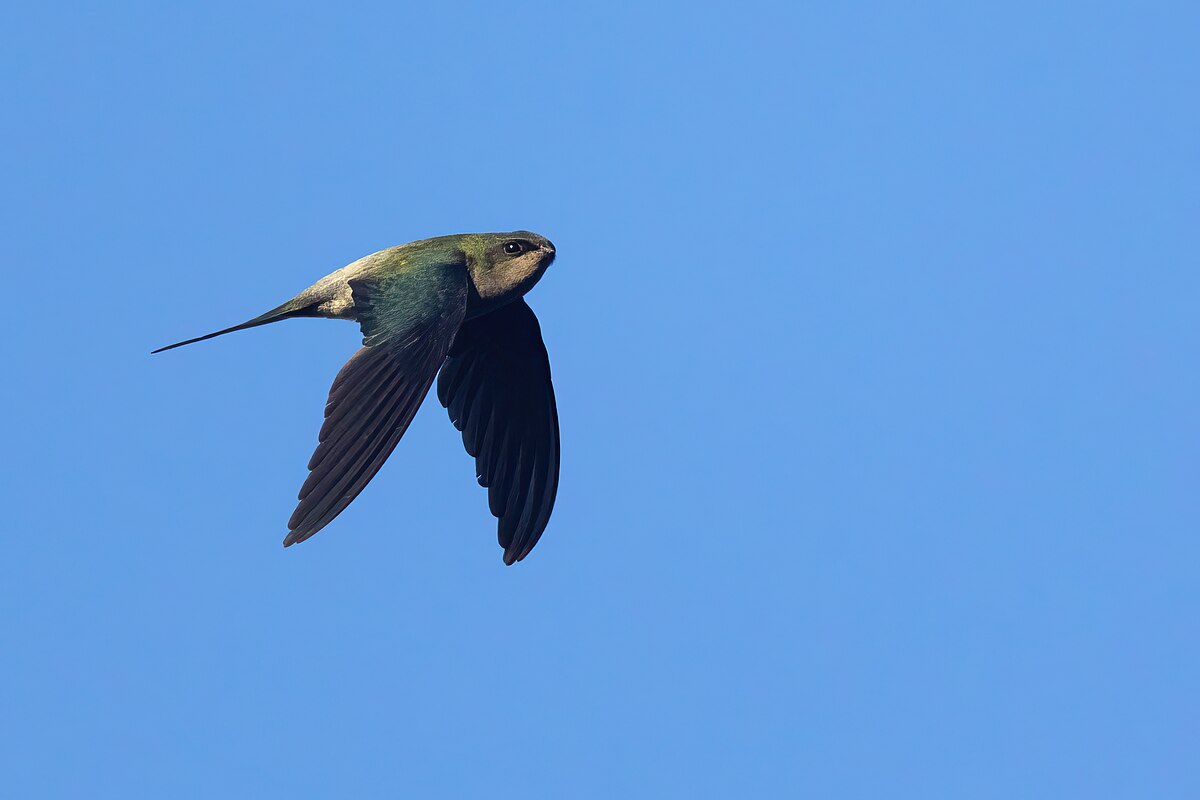
Wikipedia: Grey-rumped treeswift Source: OTHER
1200px-Grey-rumped_Treeswift_0A2A6147.jpg

Wikipedia: Pacific swift Source: OTHER
1200px-Pacific_Swift.jpg
General: ![]() The Pacific swift (Apus pacificus) is a species of bird that is part of the Swift family. It breeds in eastern Asia. It is strongly migratory, spending the northern hemisphere's winter in Southeast Asia and Australia. The general shape and blackish plumage recall its relative, the common swift, from which it is distinguished by a white rump band and heavily marked underparts. The sexes are identical in appearance, although young birds can be identified by pale fringes to the wing feathers that are absent in adults. This swift's main call is a screech typical of its family. It is one of a group of closely related Asian swifts formerly regarded as one species.
[more]
The Pacific swift (Apus pacificus) is a species of bird that is part of the Swift family. It breeds in eastern Asia. It is strongly migratory, spending the northern hemisphere's winter in Southeast Asia and Australia. The general shape and blackish plumage recall its relative, the common swift, from which it is distinguished by a white rump band and heavily marked underparts. The sexes are identical in appearance, although young birds can be identified by pale fringes to the wing feathers that are absent in adults. This swift's main call is a screech typical of its family. It is one of a group of closely related Asian swifts formerly regarded as one species.
[more]
Call:
Automatically generated from Xeno-Canto recording
♫ XC485667 - Pacific Swift - Apus pacificus - flight call, Buryatia, Russian Federation. Source: XENOCANTO
XC485667 - Pacific Swift - Apus pacificus - flight call, Buryatia, Russian Federation.mp3
(flight call)

Call attributes:
flight call Frequency: ,

Wikipedia: Glossy swiftlet Source: OTHER
1200px-Glossy_Swiftlets_%28Collocalia_esculenta%29_%288127975211%29.jpg
vagrant
Asian palm swift. 2024-02-16 07.44.36 Laos
First observed in Laos on 2024-02-16.
Call:
Automatically generated from Xeno-Canto recording
♫ XC642524 - Asian Palm Swift - Cypsiurus balasiensis infumatus - flight call - Vientiane, Laos. Source: XENOCANTO
XC642524 - Asian Palm Swift - Cypsiurus balasiensis infumatus - flight call - Vientiane, Laos.mp3
Laos (flight call)

Call attributes:
flight call Frequency: ,
Profile Wikipedia eBird Xeno-Canto

Wikipedia: White-throated needletail Source: OTHER
White-throated_needletail_Hunting_over_Wolotschajewka_Perwaja_%28cropped%29.jpg
General: ![]() The white-throated needletail (Hirundapus caudacutus), also known as needle-tailed swift or spine-tailed swift, is a large swift in the genus Hirundapus. It is reputed to reach speeds of up to 170 km/h (105 mph) in horizontal flight, but this is unverified because the methods used to measure its speed have not been published.[2]
[more]
The white-throated needletail (Hirundapus caudacutus), also known as needle-tailed swift or spine-tailed swift, is a large swift in the genus Hirundapus. It is reputed to reach speeds of up to 170 km/h (105 mph) in horizontal flight, but this is unverified because the methods used to measure its speed have not been published.[2]
[more]
Profile Wikipedia eBird Xeno-Canto

Wikipedia: Silver-backed needletail Source: OTHER
Silver-backedNeedletail.jpg
Profile Wikipedia eBird Xeno-Canto

Wikipedia: Brown-backed needletail Source: OTHER
1200px-Brown-backedNeedletail.jpg
Profile Wikipedia eBird Xeno-Canto

Wikipedia: Large-tailed nightjar Source: OTHER
Caprimulgus_macrurus.jpg
General: ![]() The large-tailed nightjar (Caprimulgus macrurus) is a species of nightjar in the family Caprimulgidae.
It is found along the southern Himalayan foothills, eastern South Asia, Southeast Asia and northern Australia. This species is a resident of the countries of Australia, Bangladesh, Bhutan, Brunei, Cambodia, China, India, Indonesia, Laos, Malaysia, Myanmar, Nepal, Pakistan, Papua New Guinea, Philippines, Singapore, Thailand, Timor-Leste and Vietnam.[1] Its natural habitats are subtropical or tropical moist lowland forest, subtropical or tropical mangrove forest, and subtropical or tropical moist montane forest.
[more]
The large-tailed nightjar (Caprimulgus macrurus) is a species of nightjar in the family Caprimulgidae.
It is found along the southern Himalayan foothills, eastern South Asia, Southeast Asia and northern Australia. This species is a resident of the countries of Australia, Bangladesh, Bhutan, Brunei, Cambodia, China, India, Indonesia, Laos, Malaysia, Myanmar, Nepal, Pakistan, Papua New Guinea, Philippines, Singapore, Thailand, Timor-Leste and Vietnam.[1] Its natural habitats are subtropical or tropical moist lowland forest, subtropical or tropical mangrove forest, and subtropical or tropical moist montane forest.
[more]

Wikipedia: Savanna nightjar Source: OTHER
1200px-Caprimulgus_affinis.jpg
vagrant, Christmas Island


